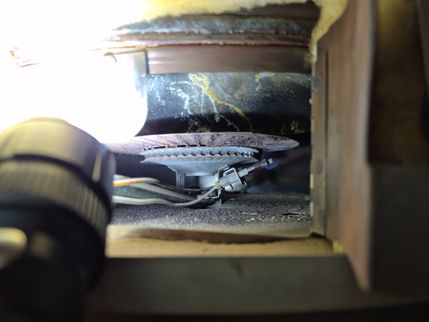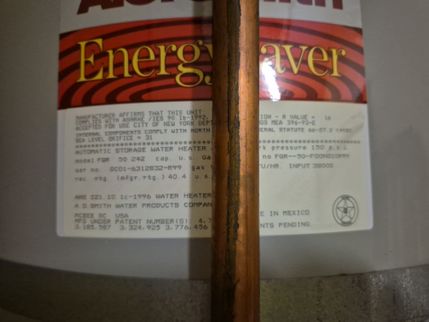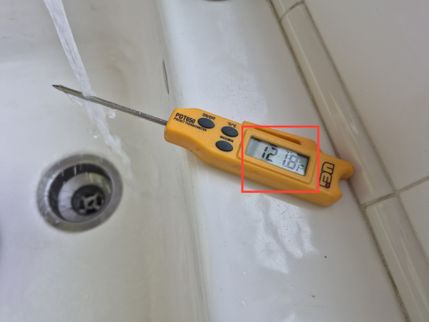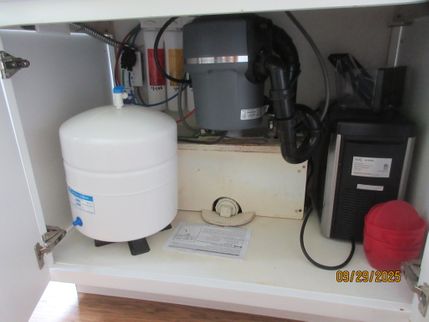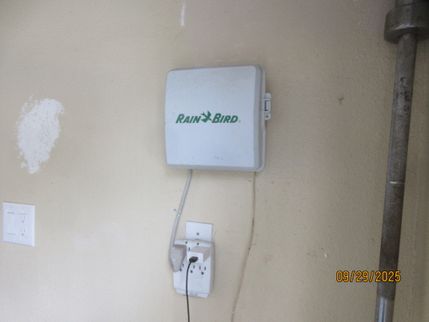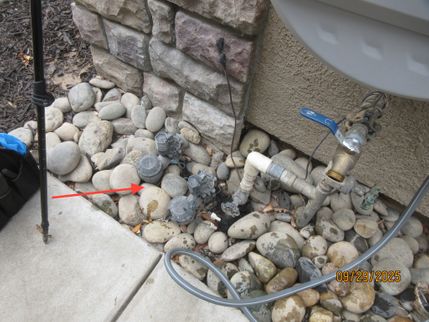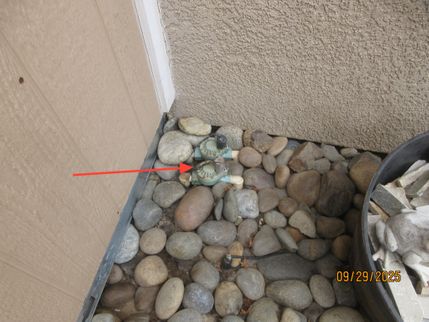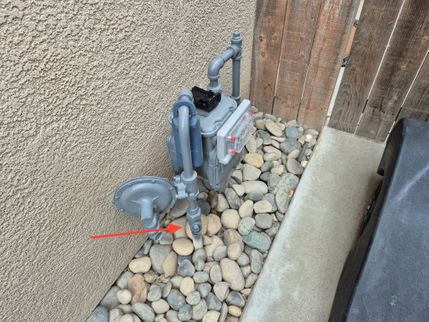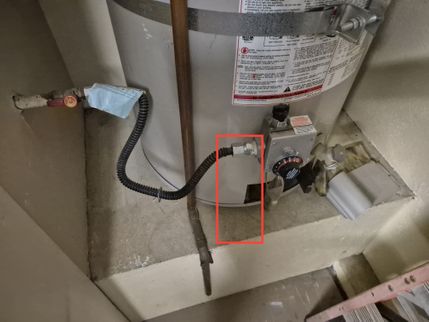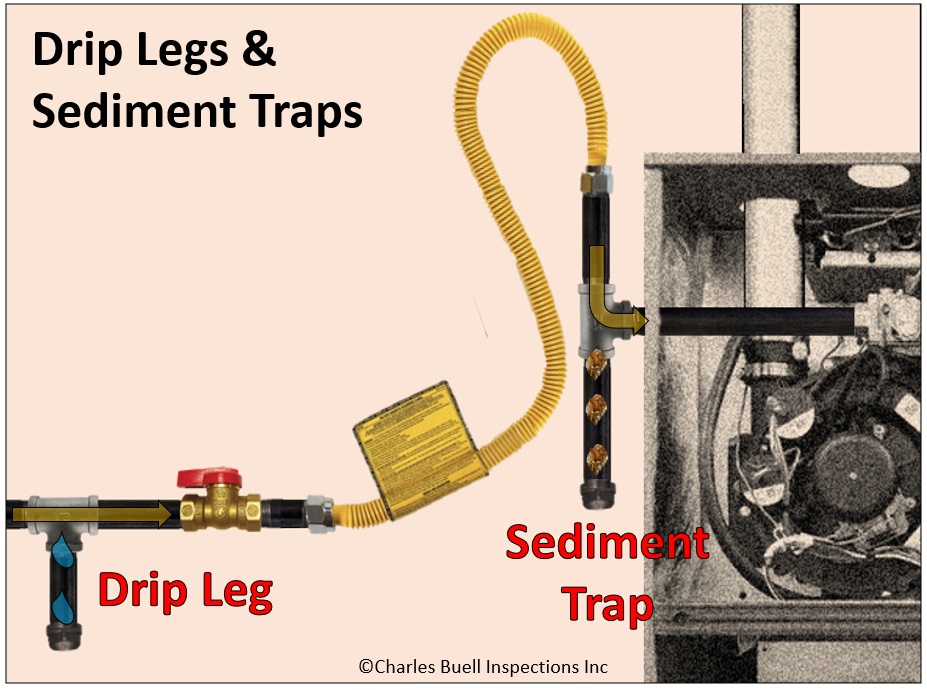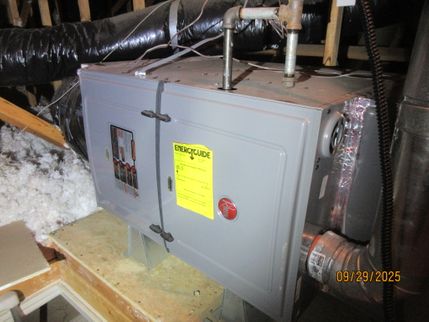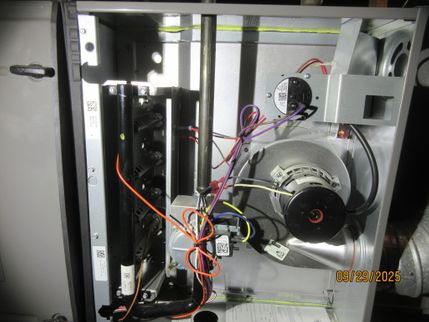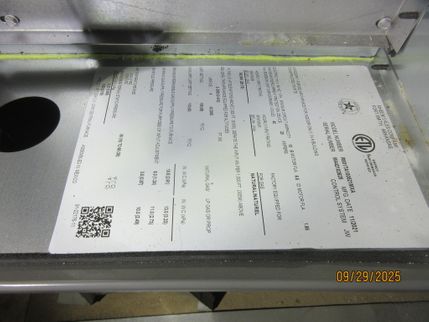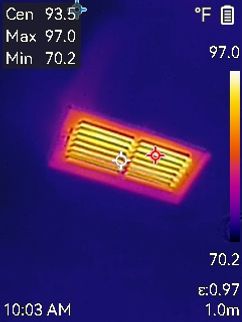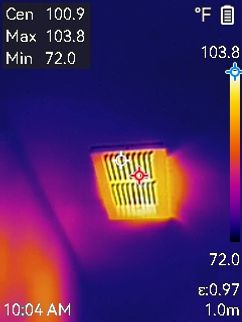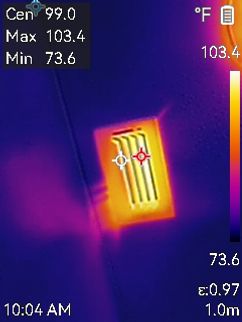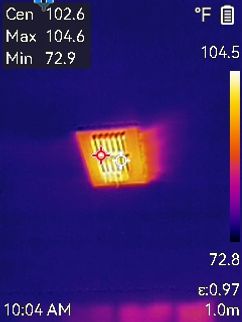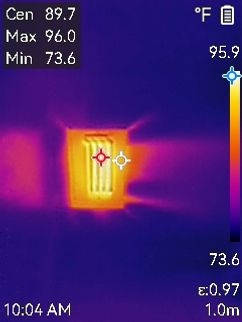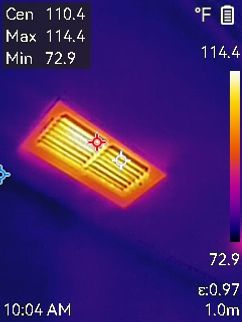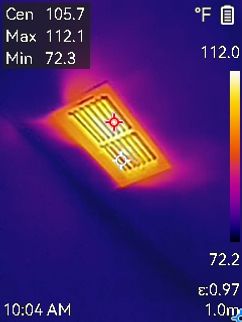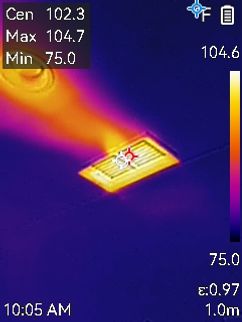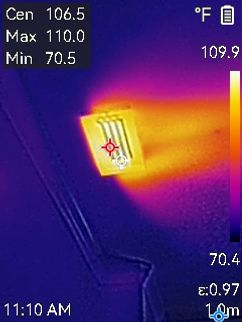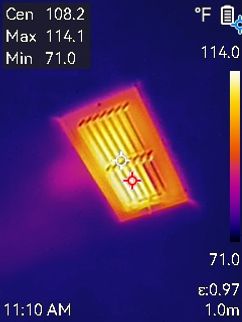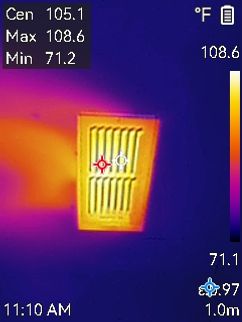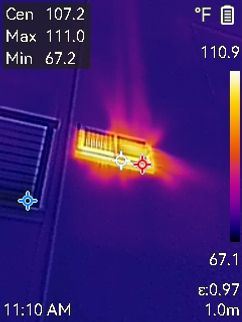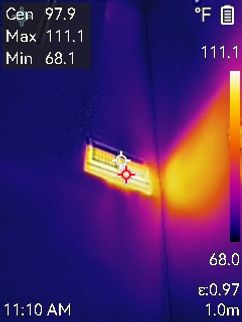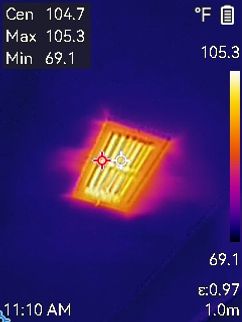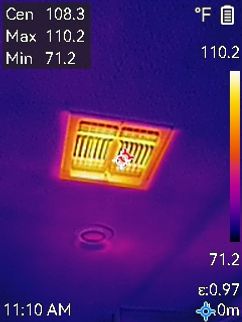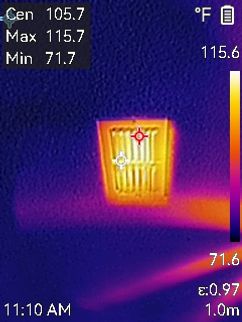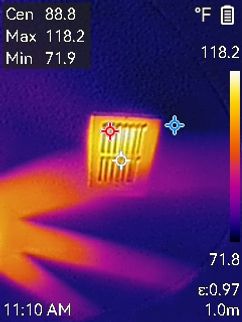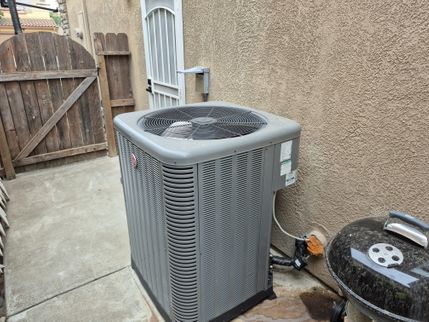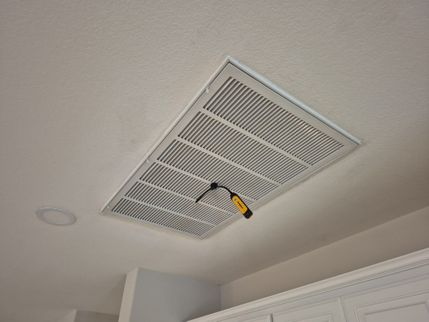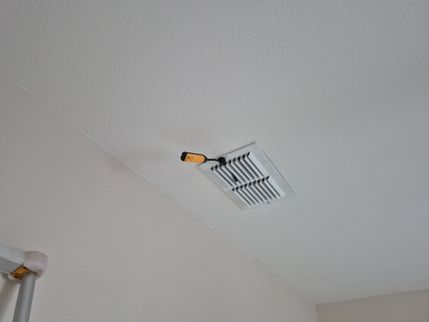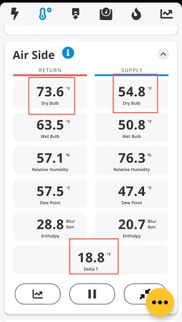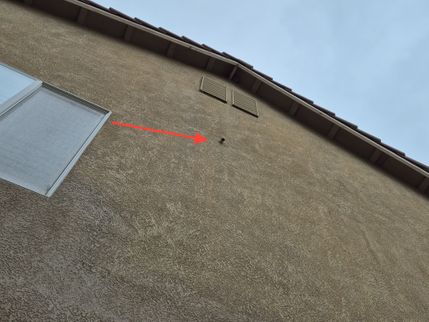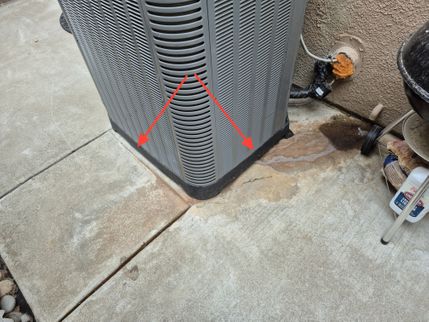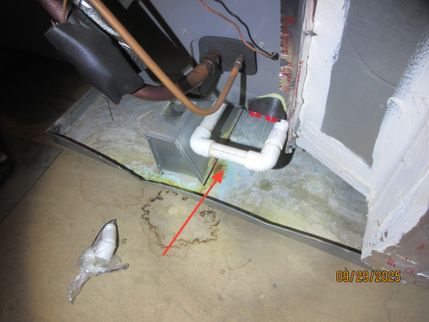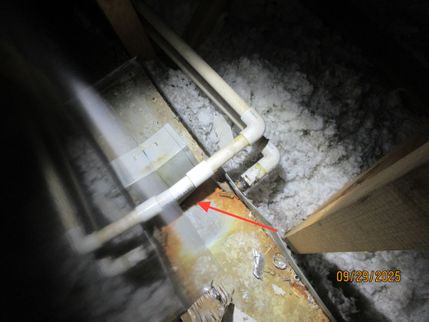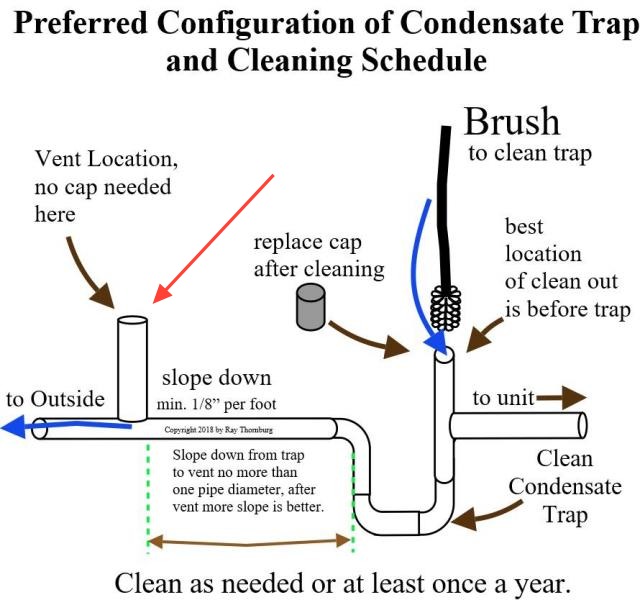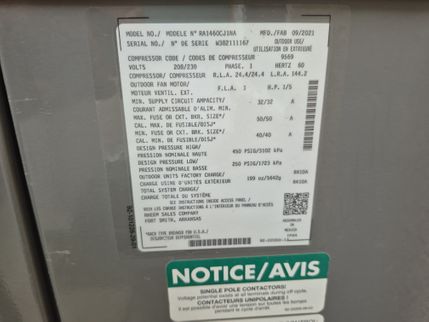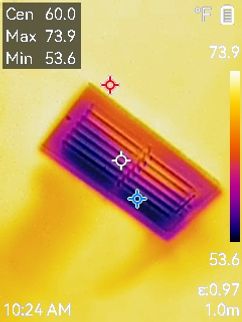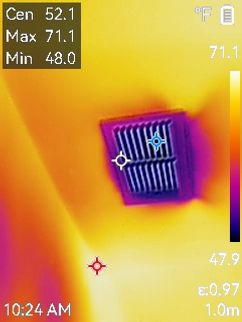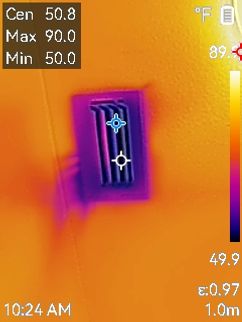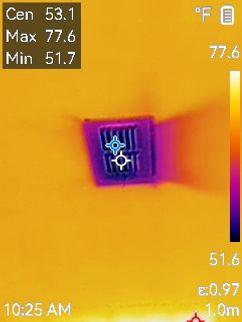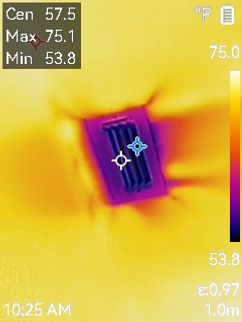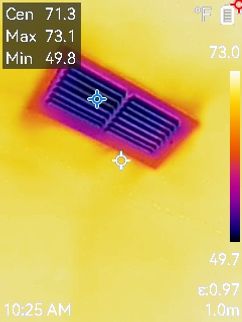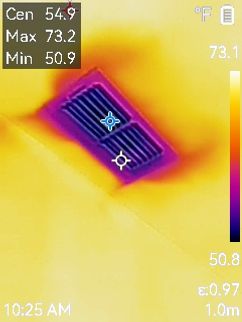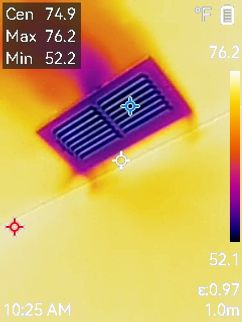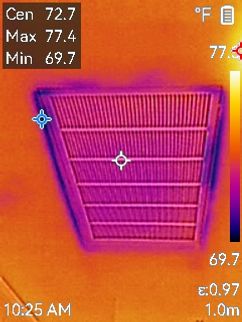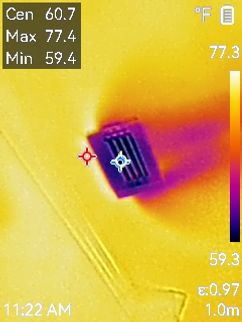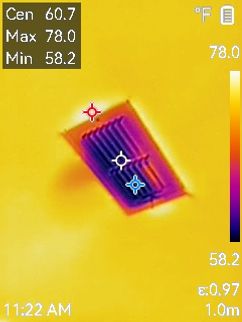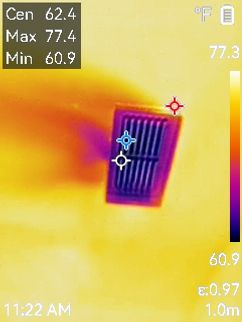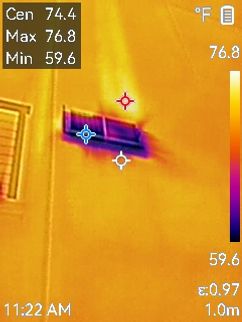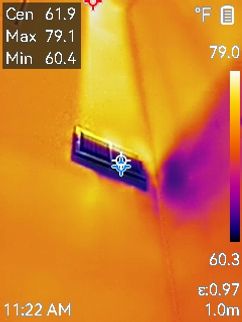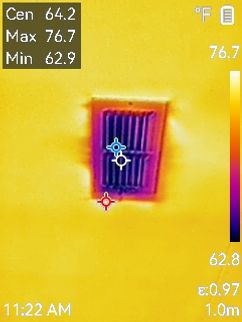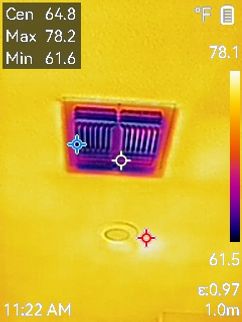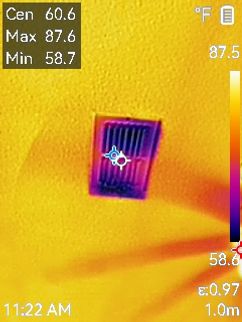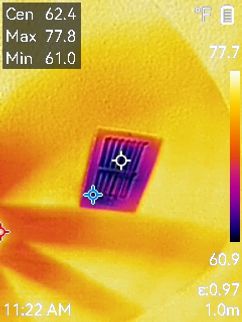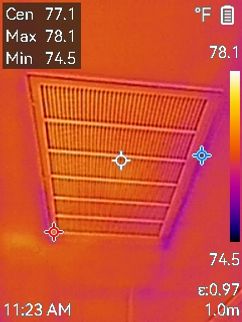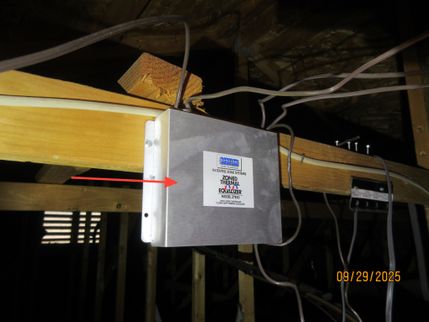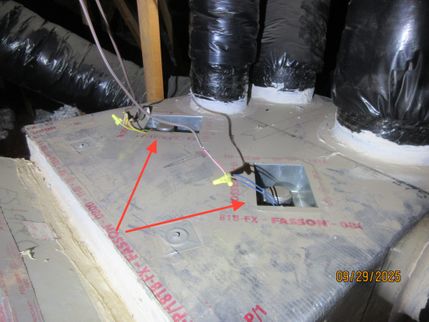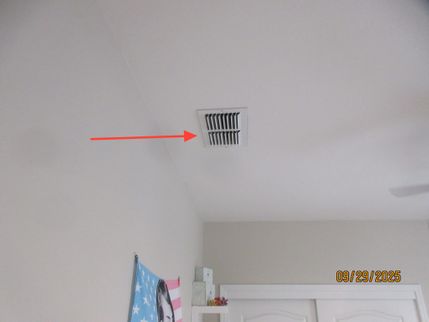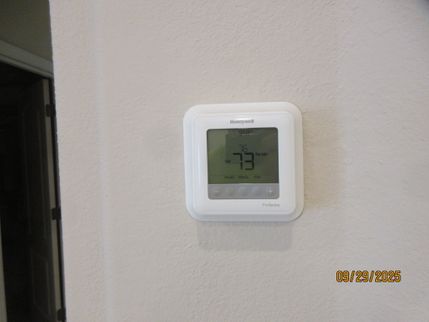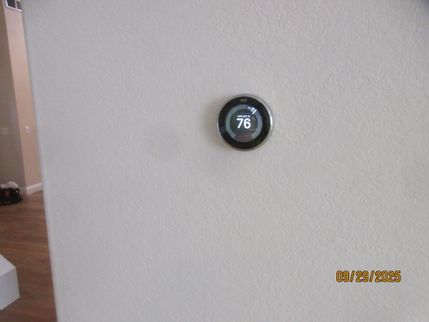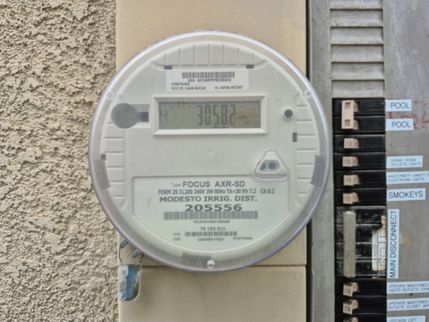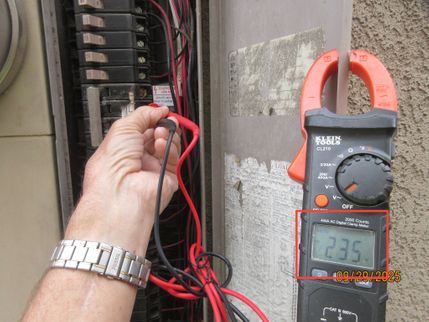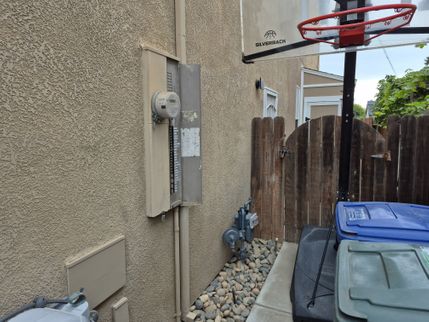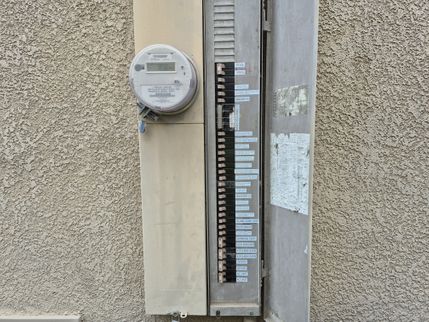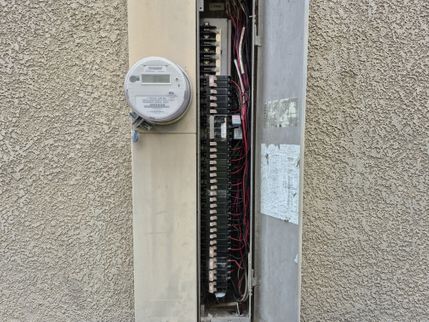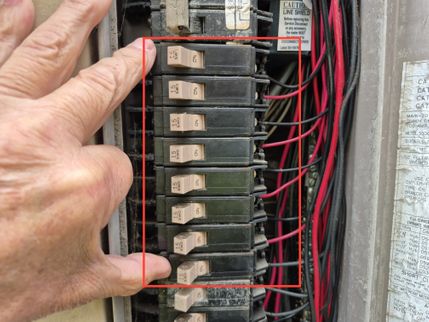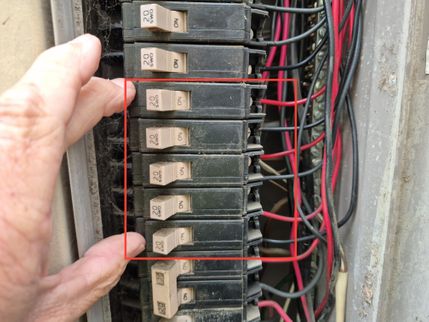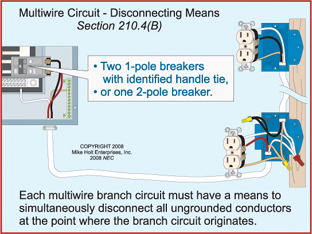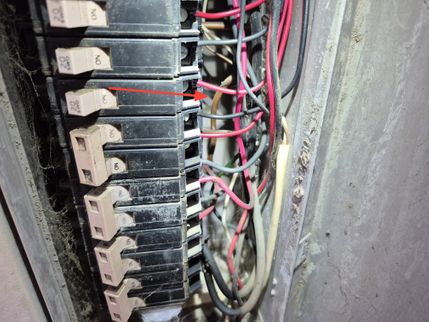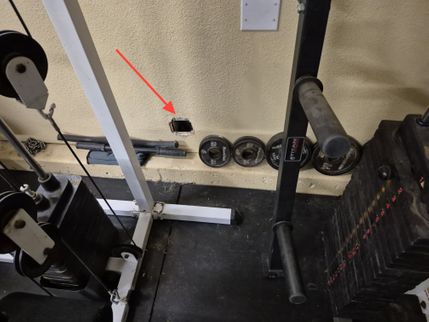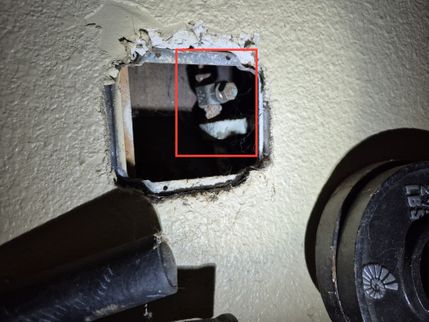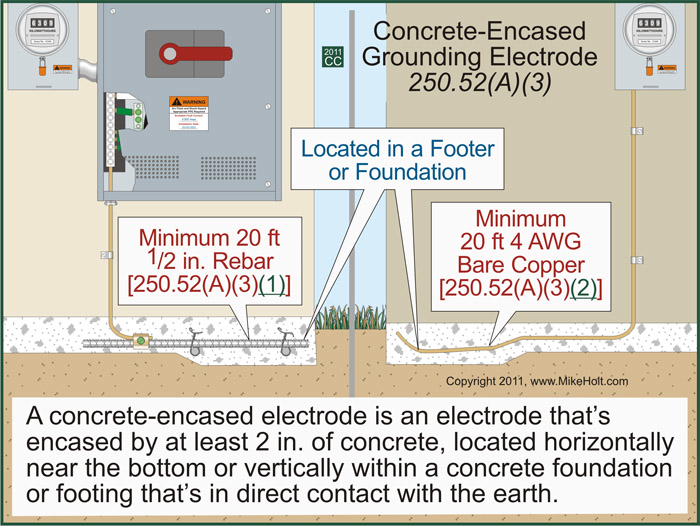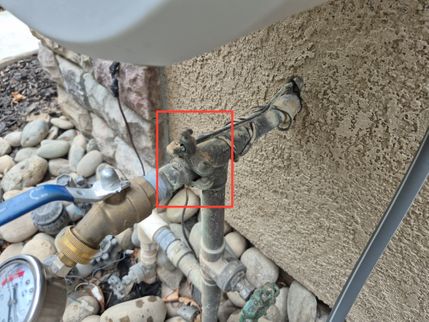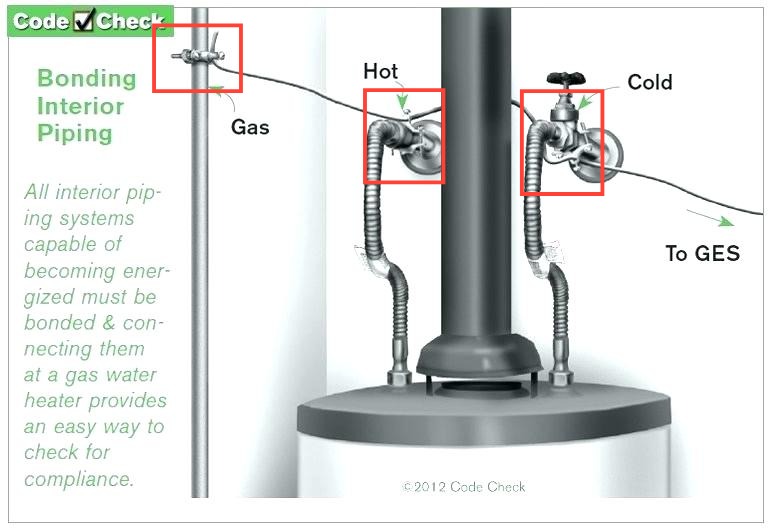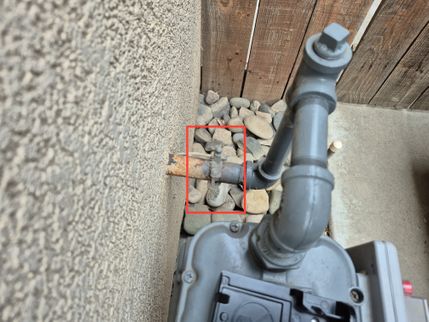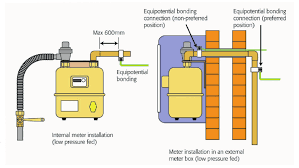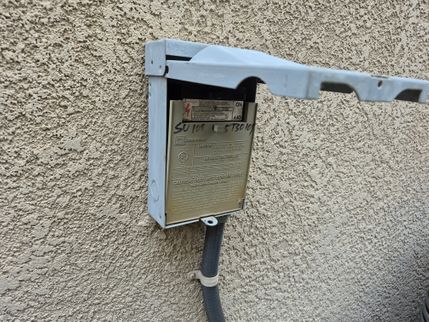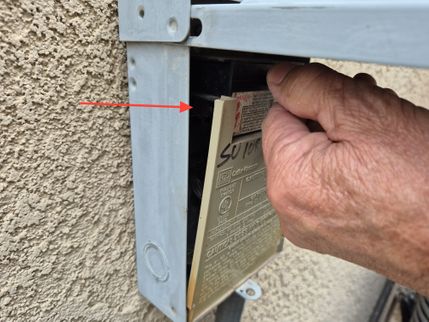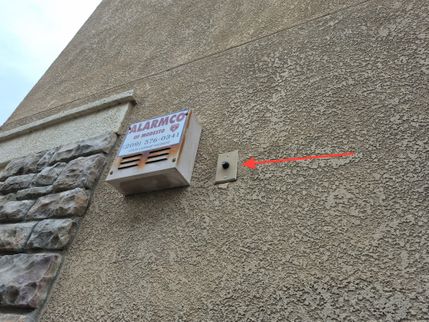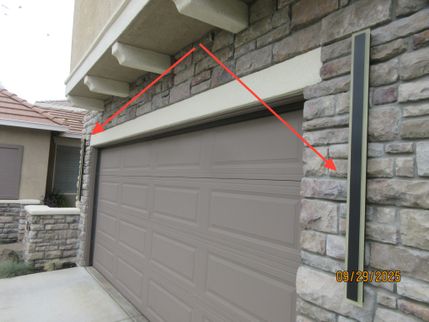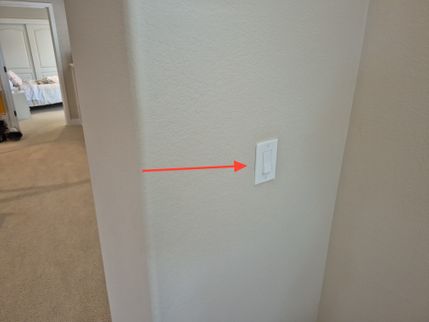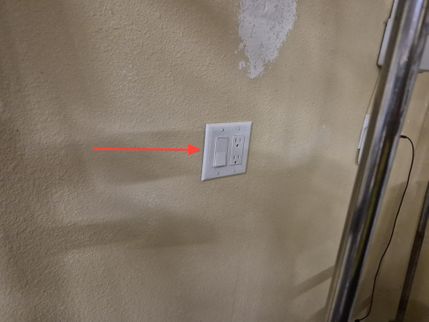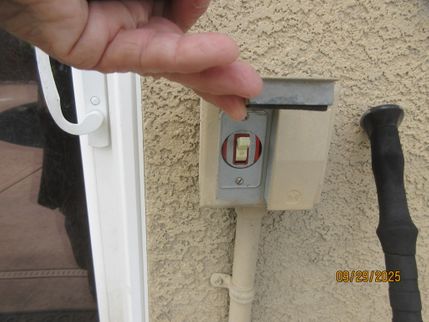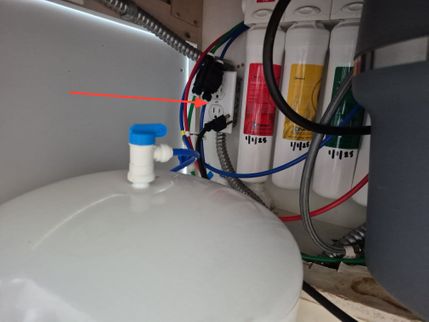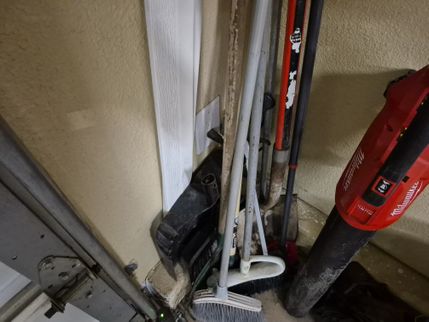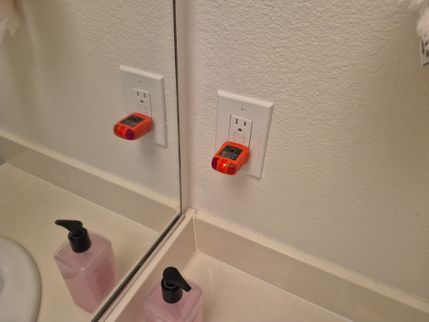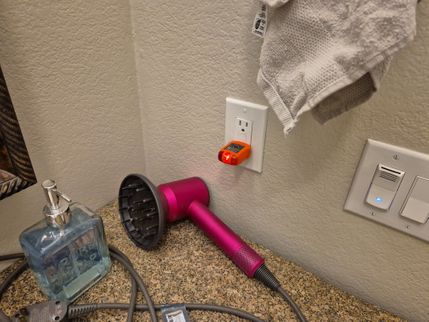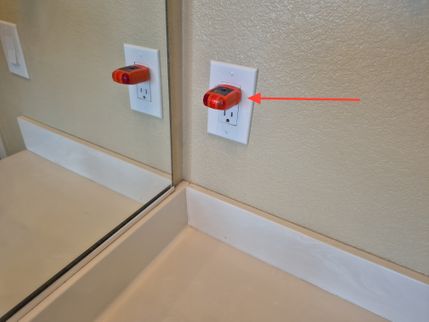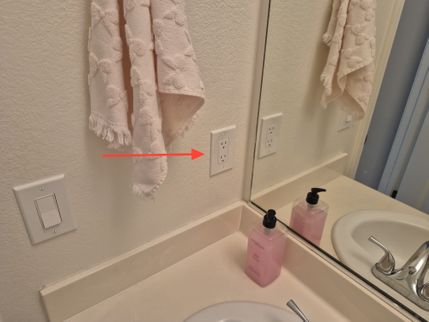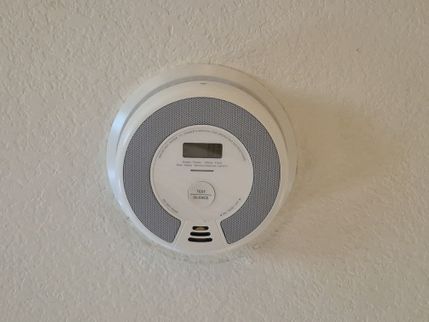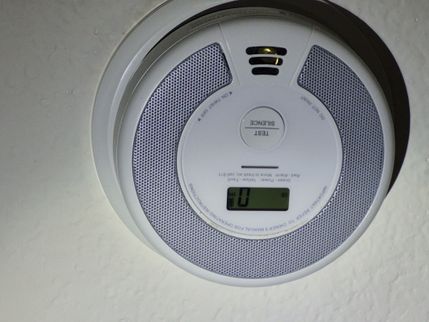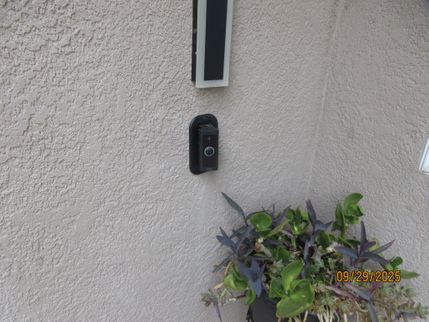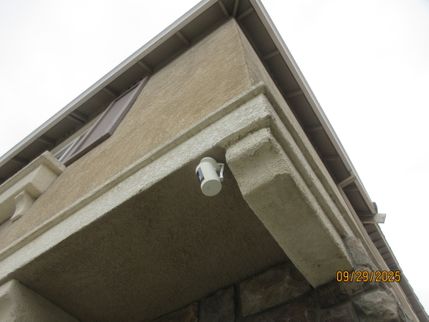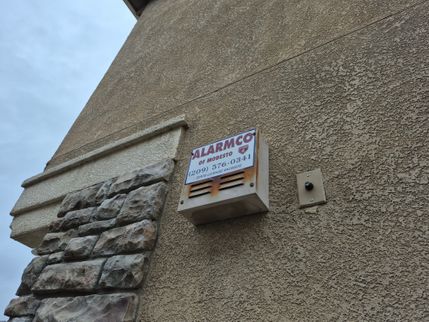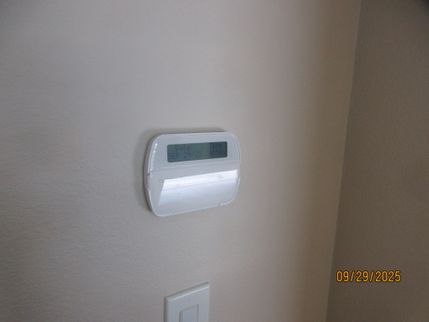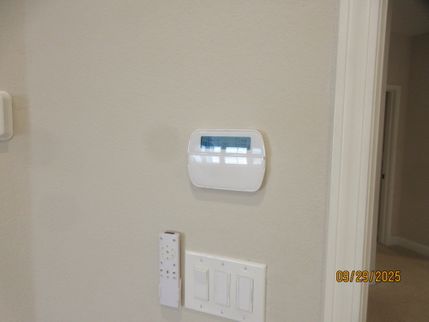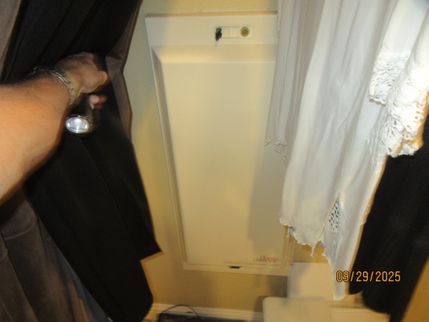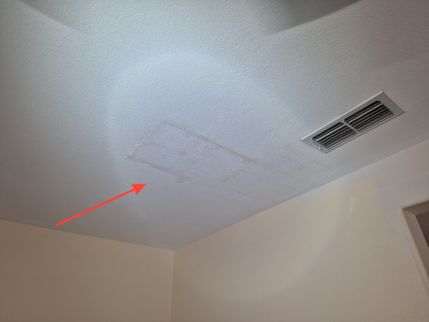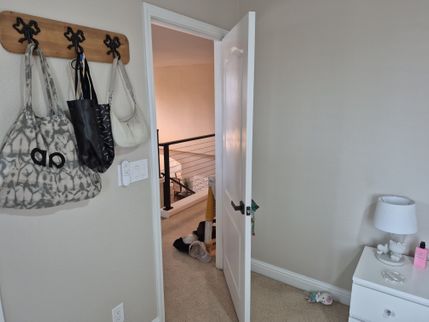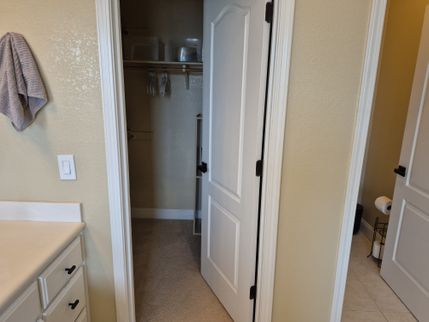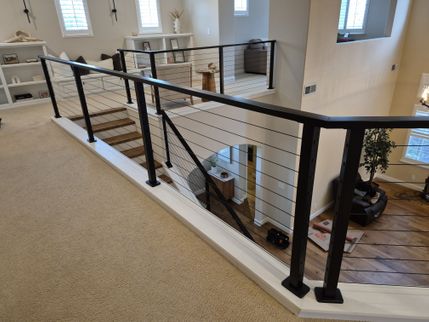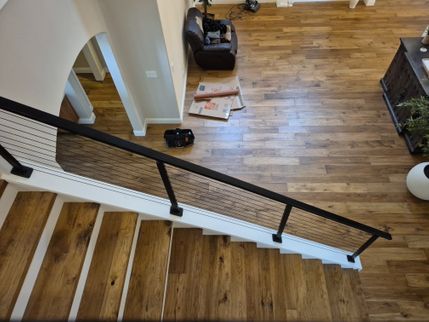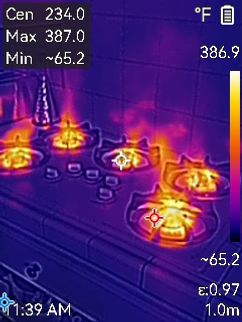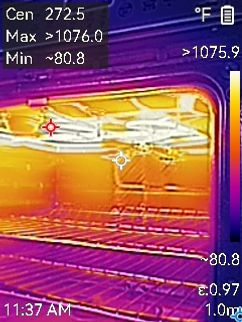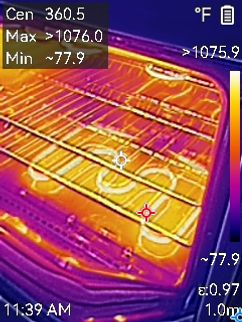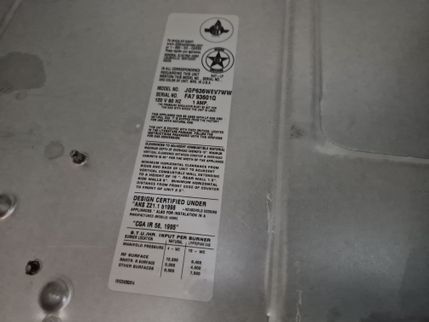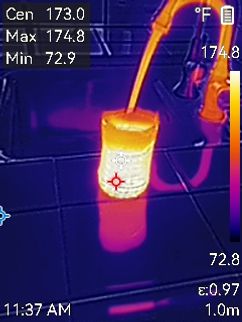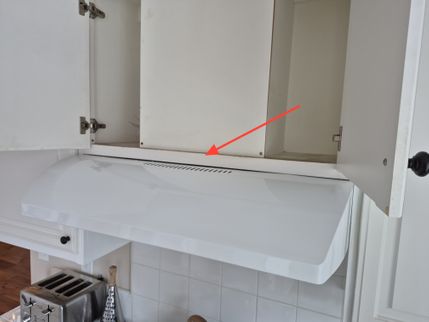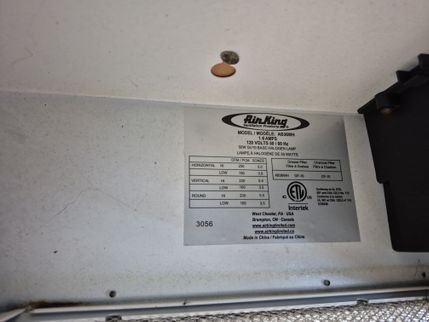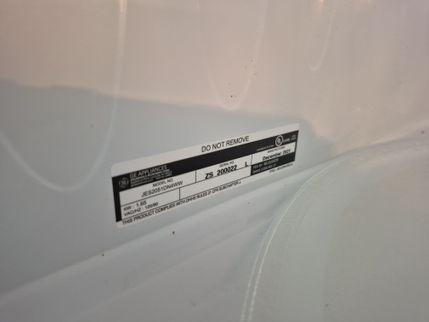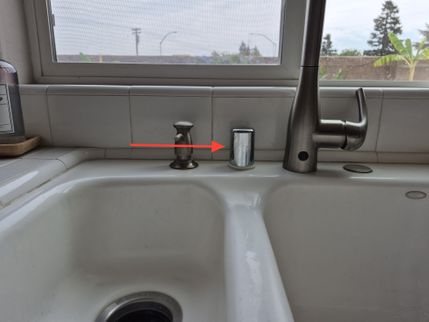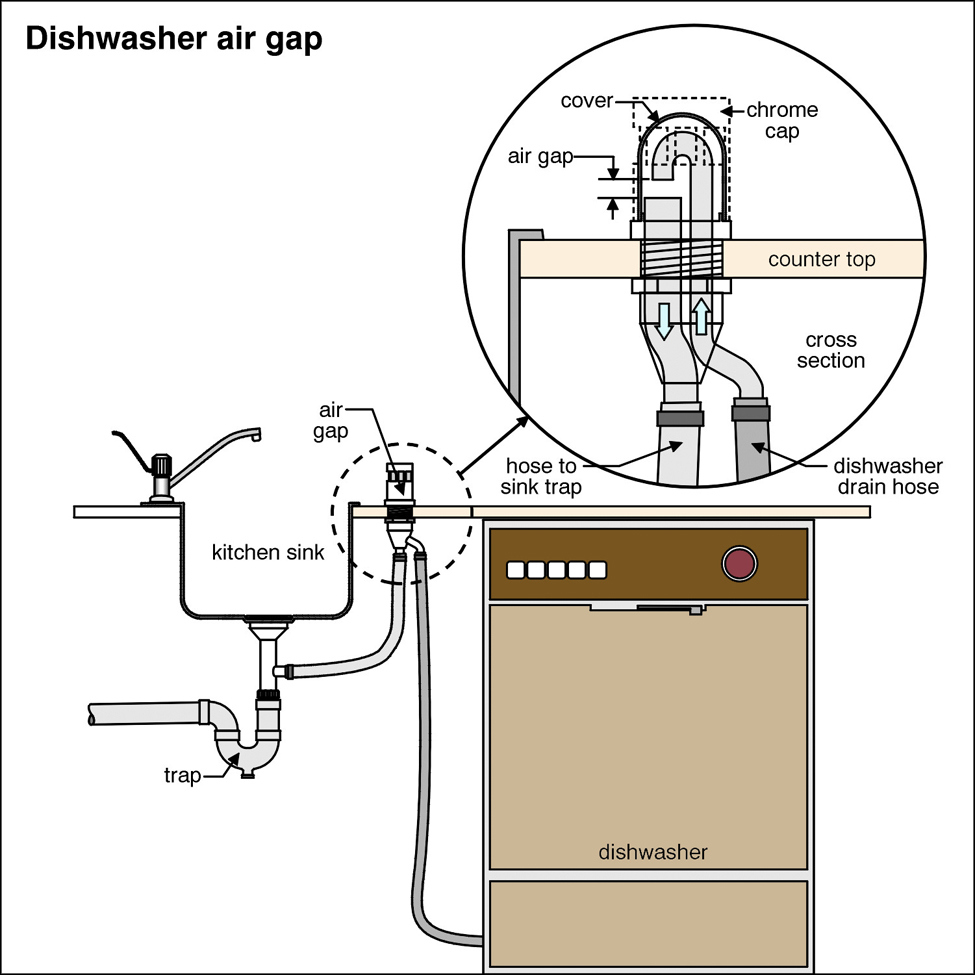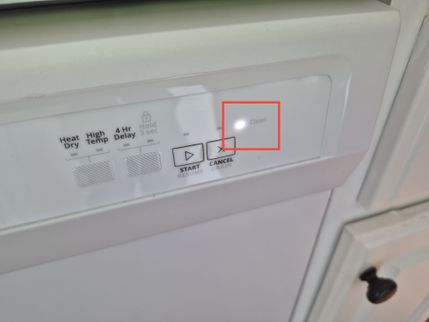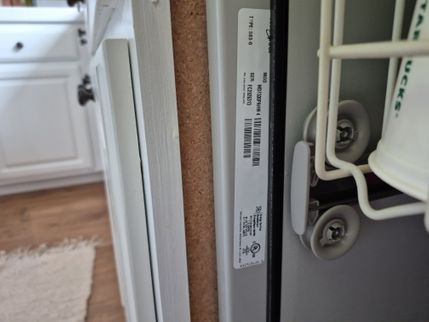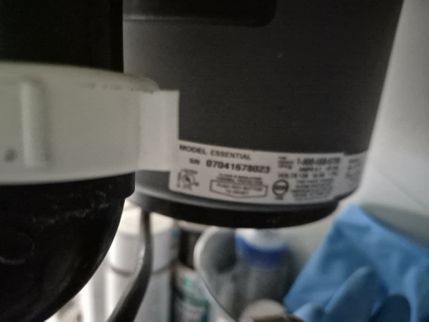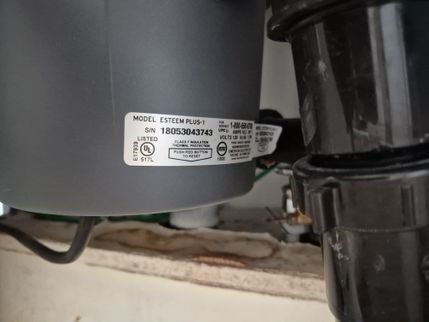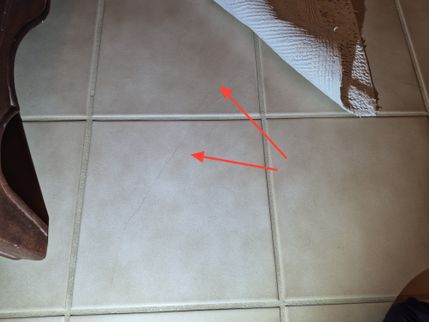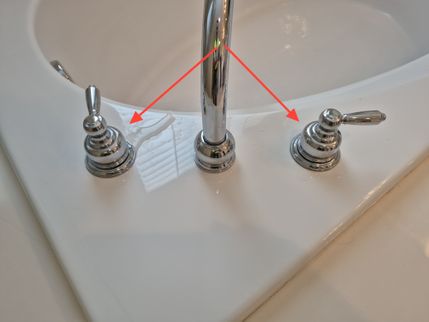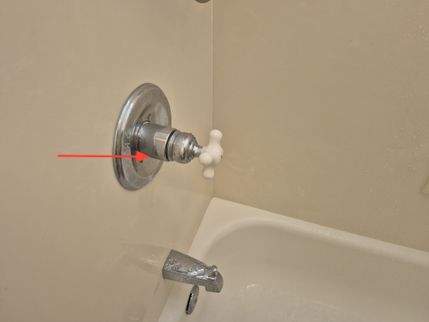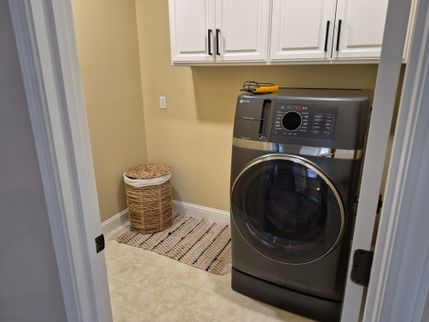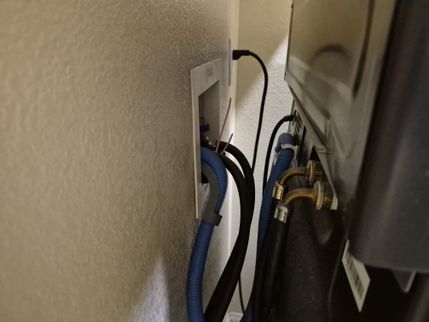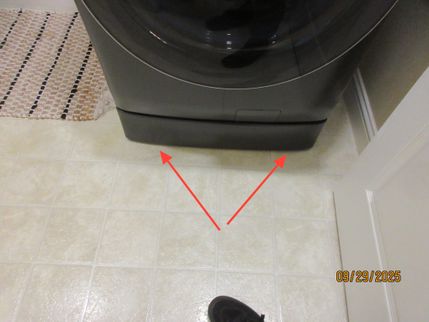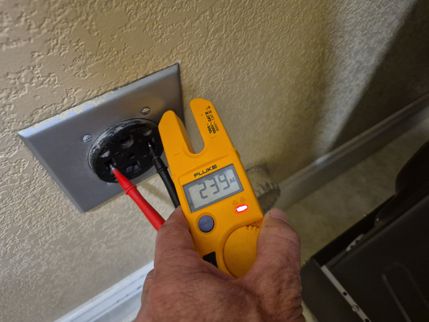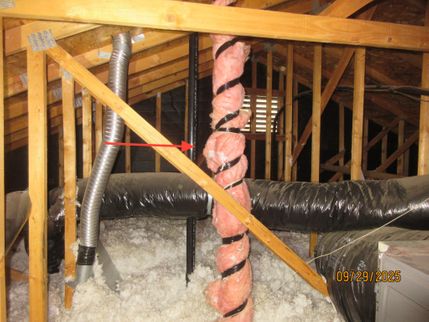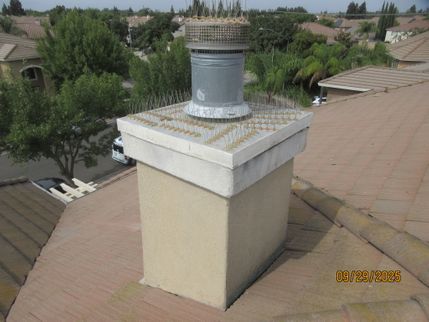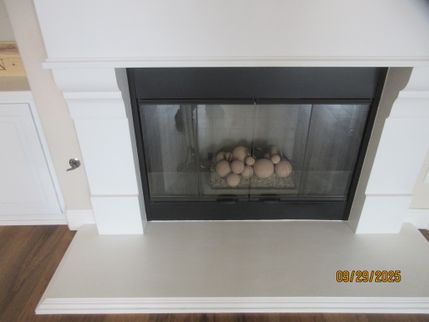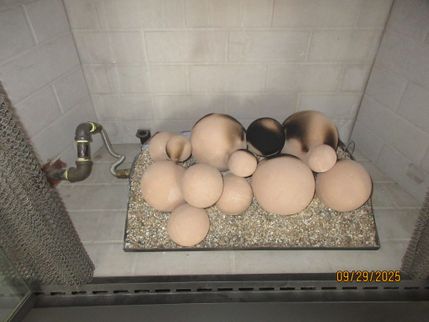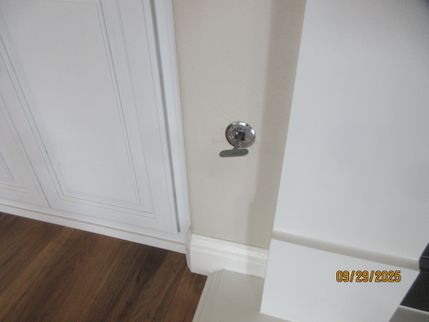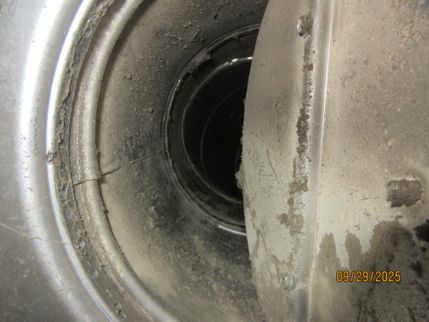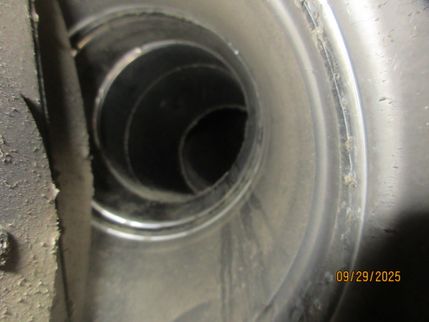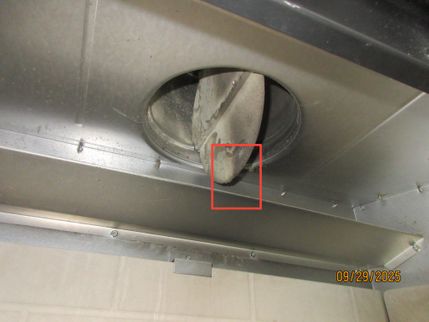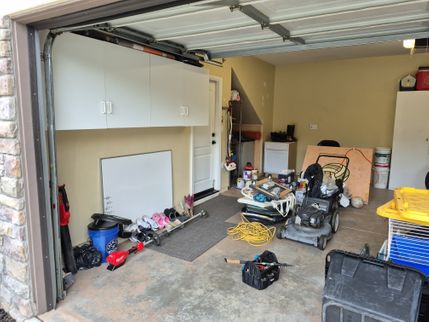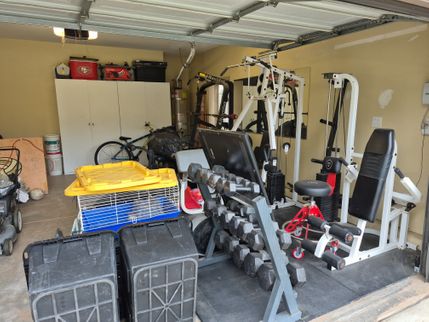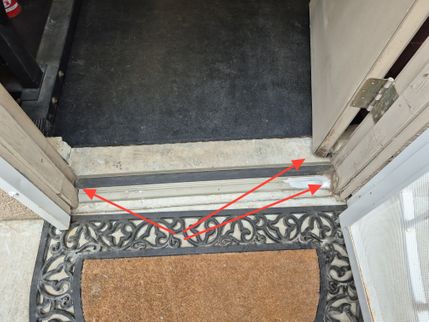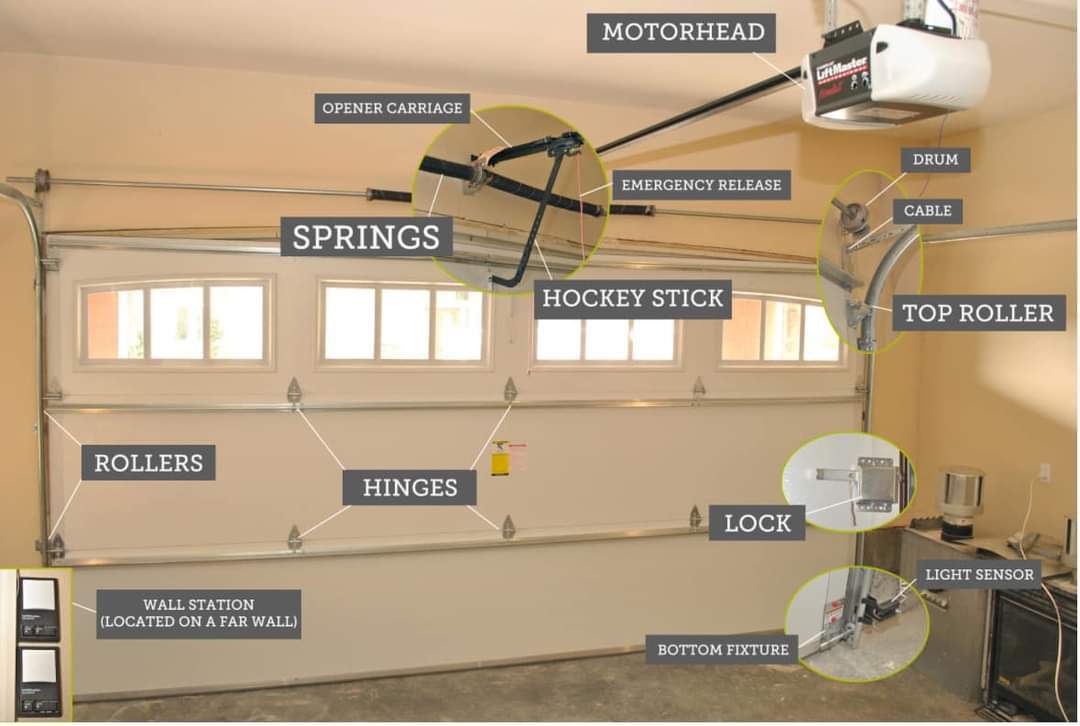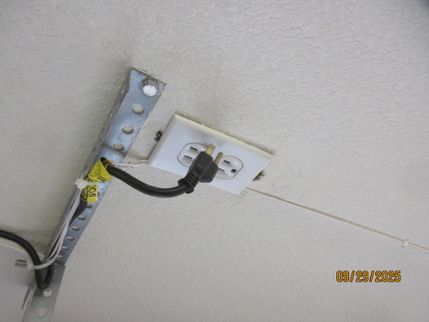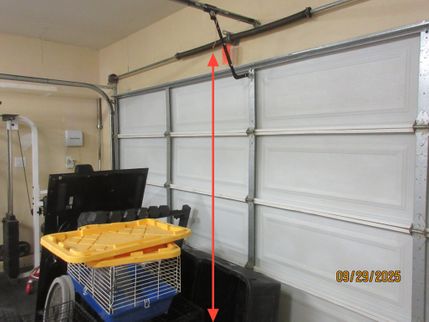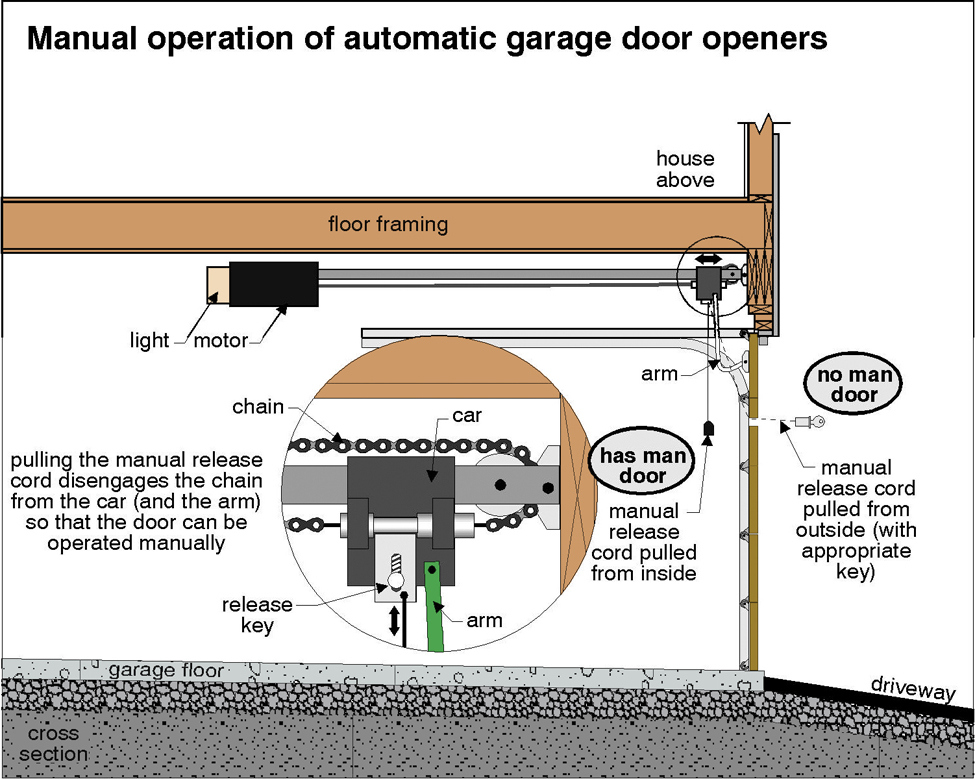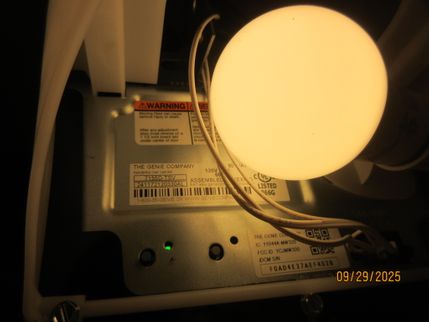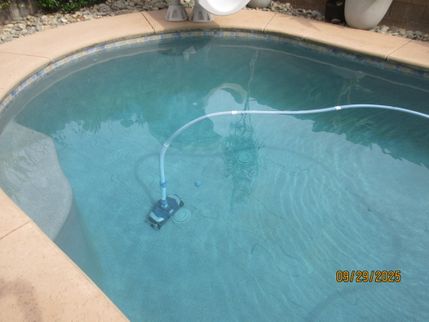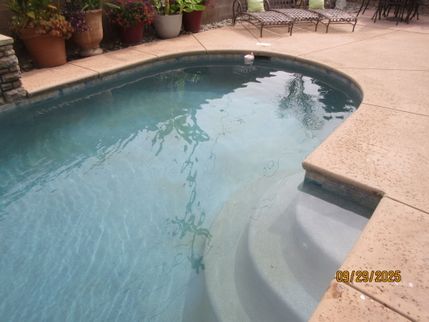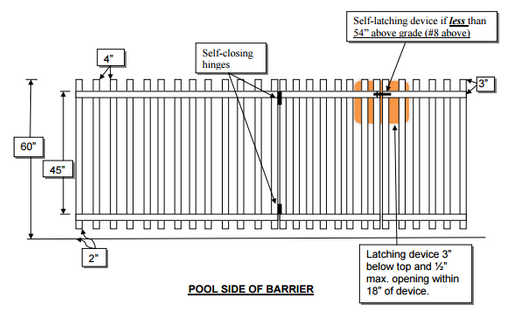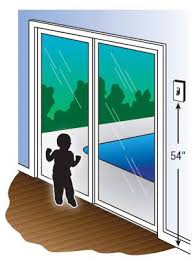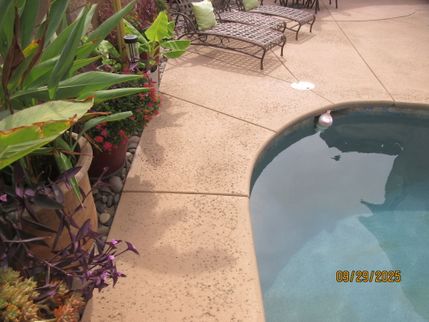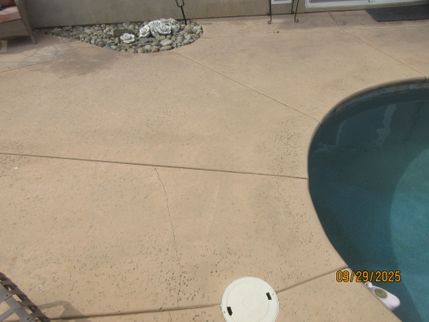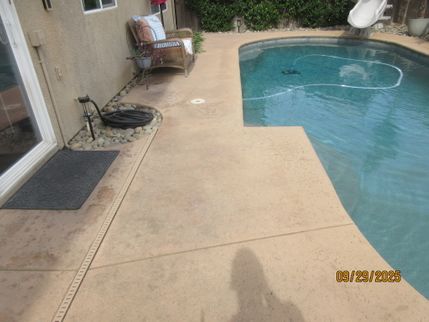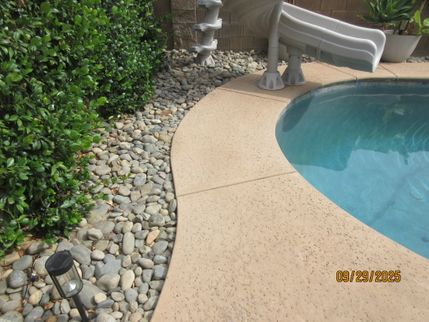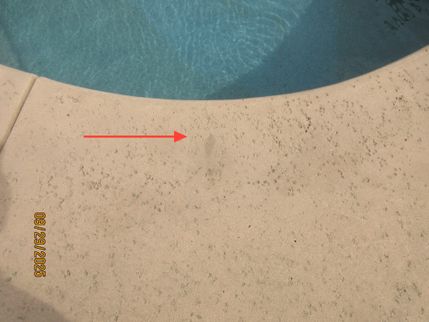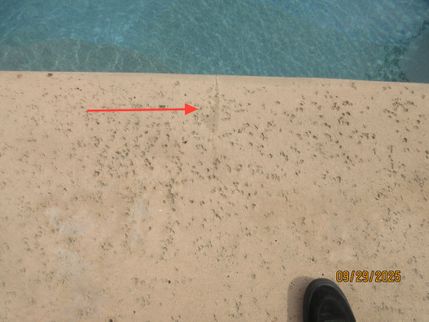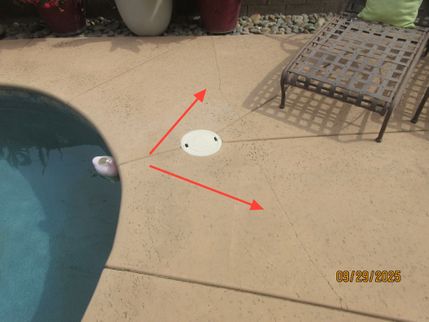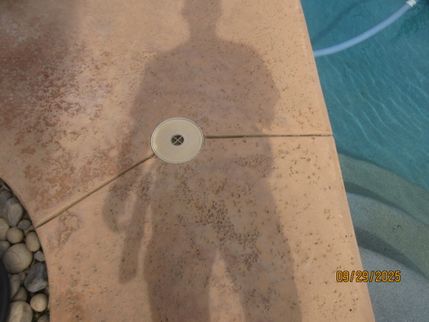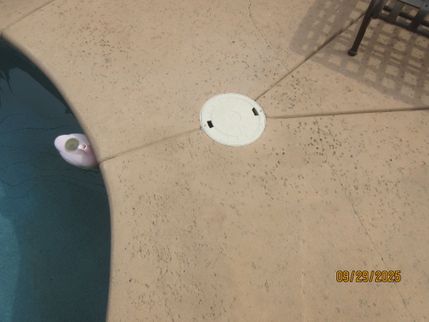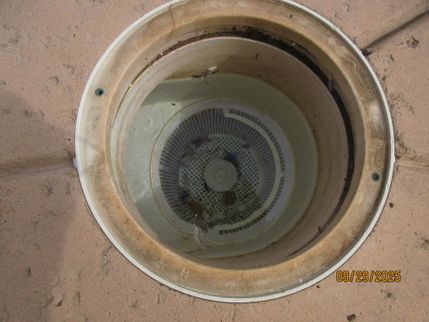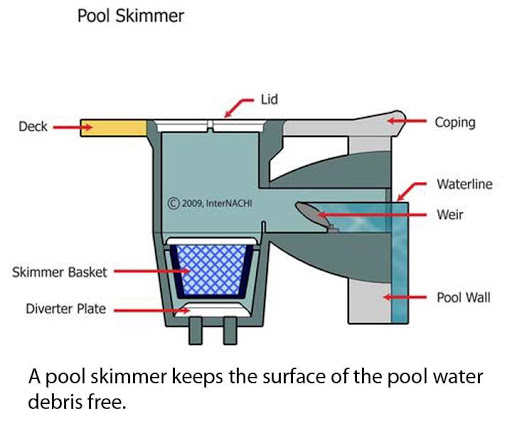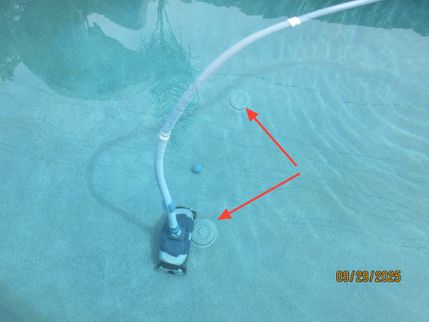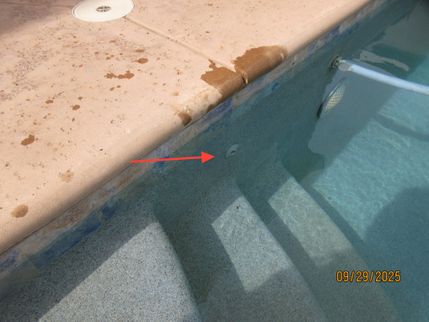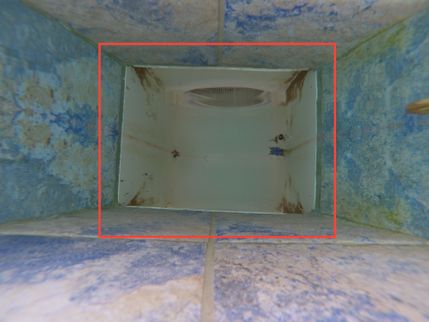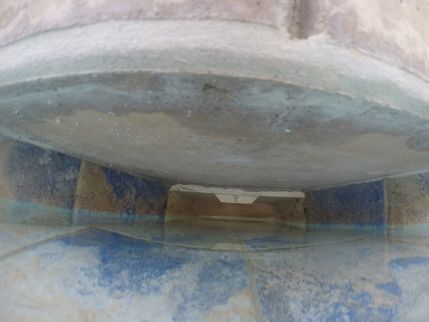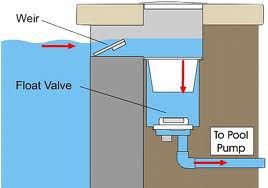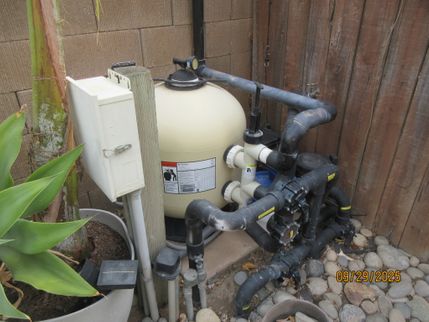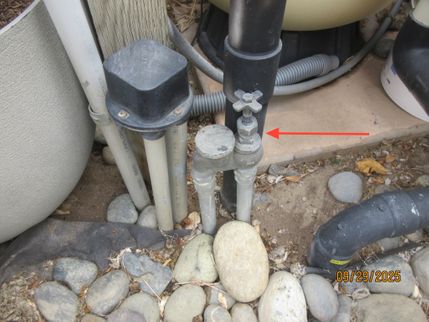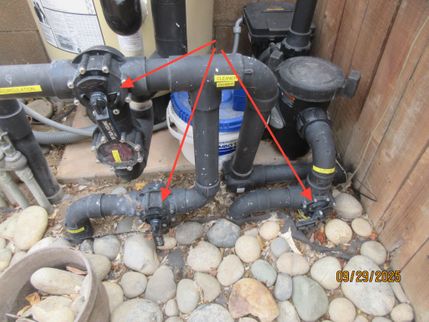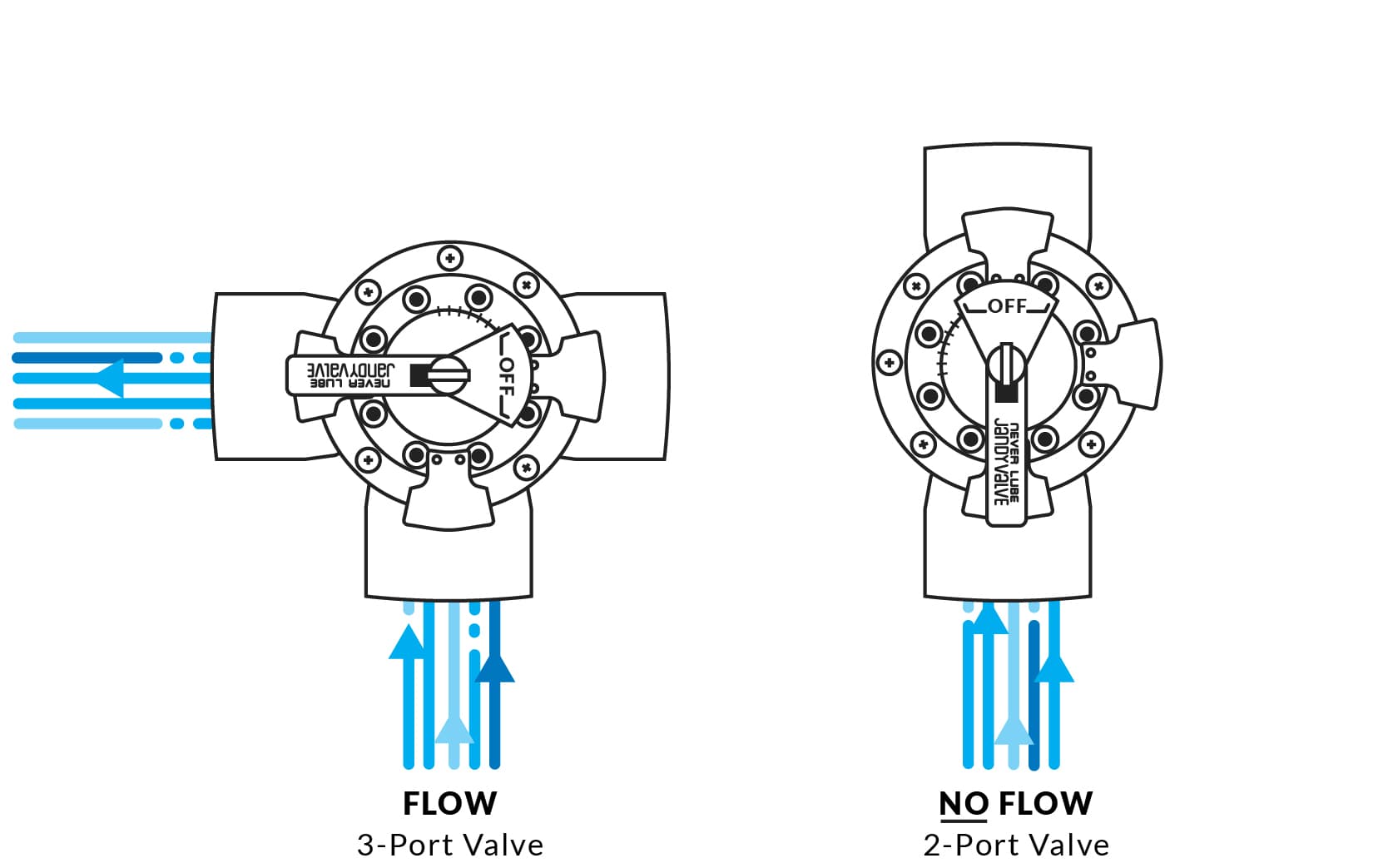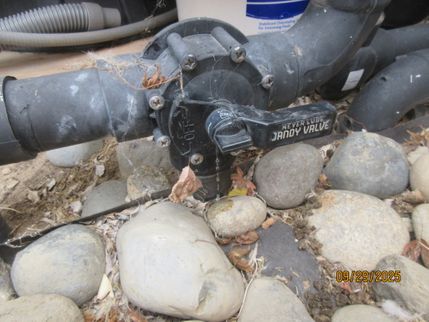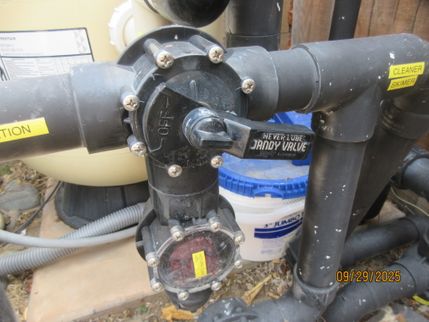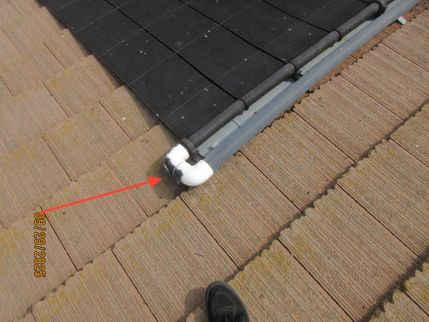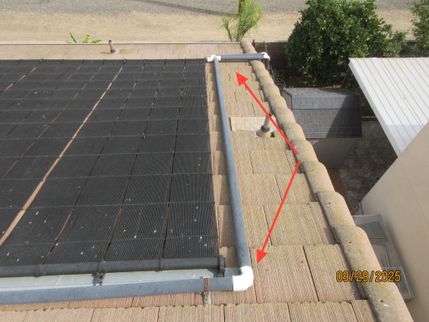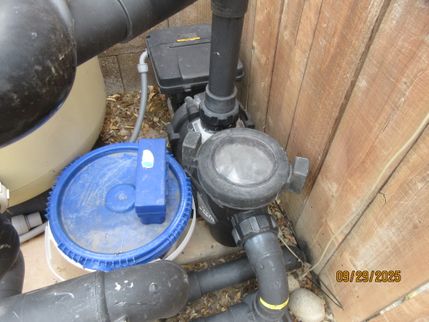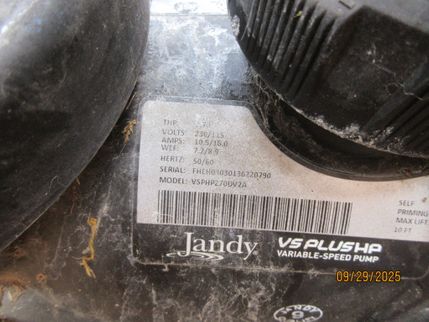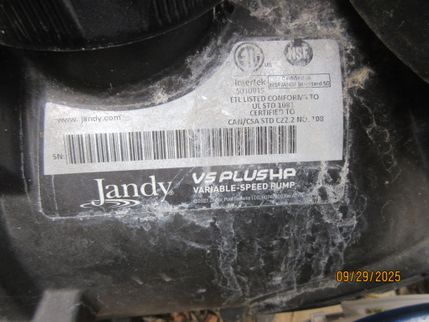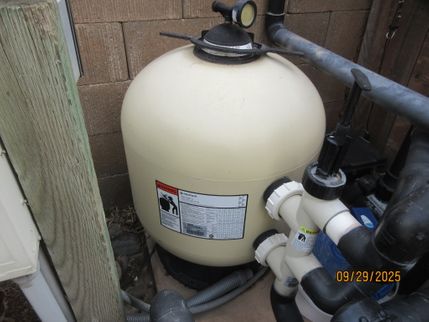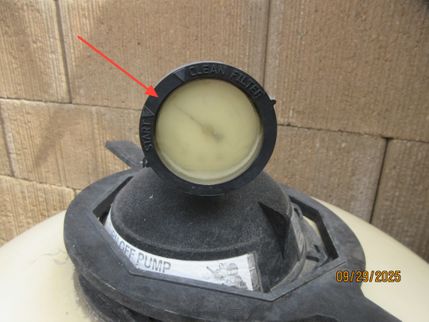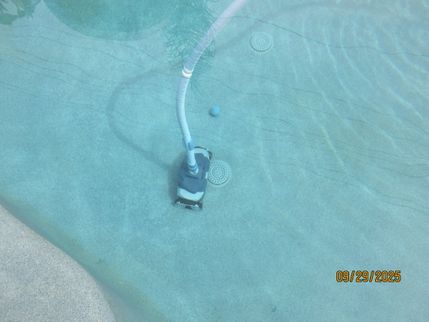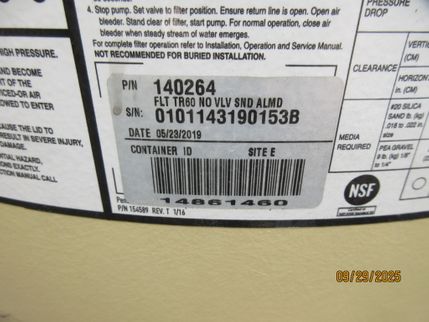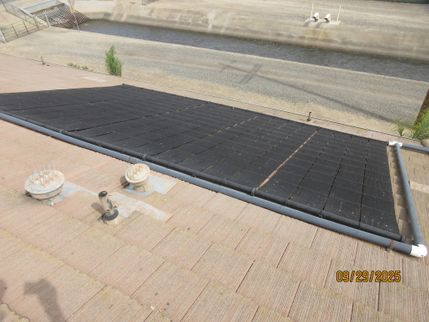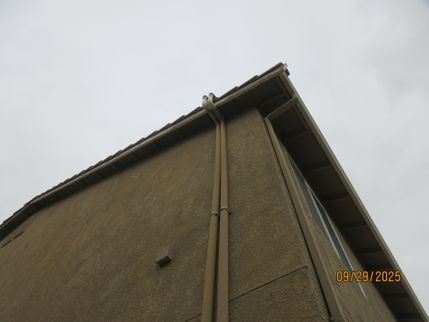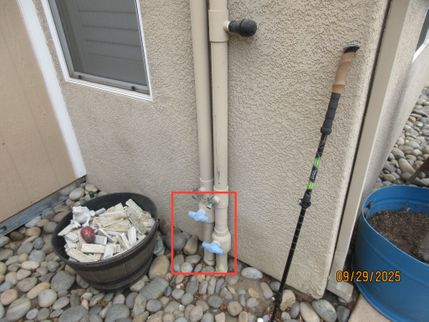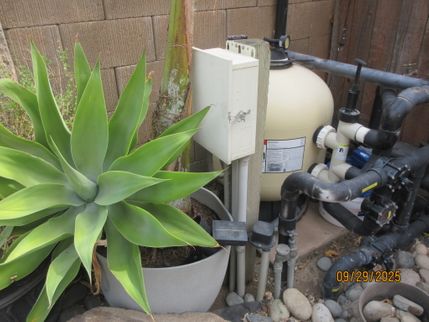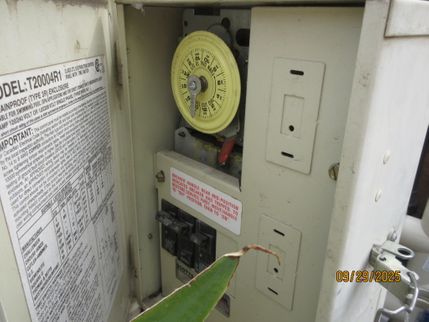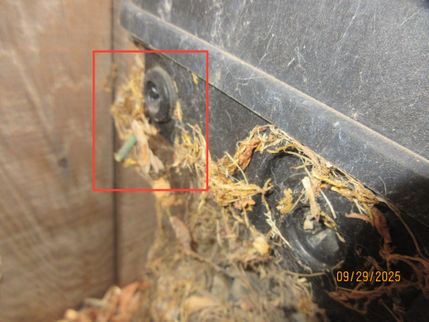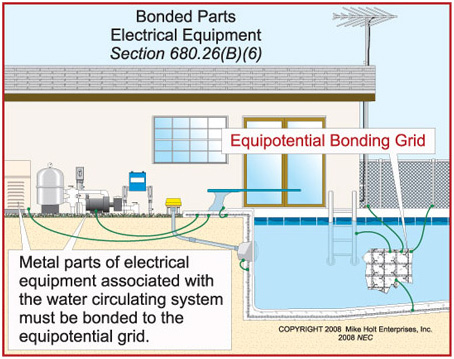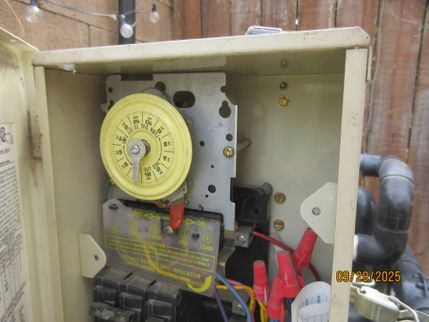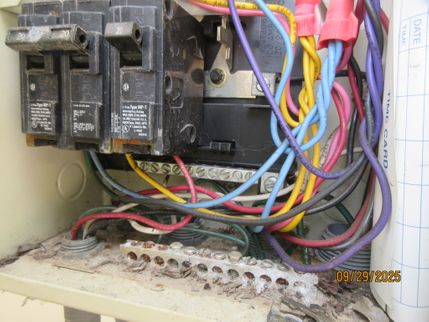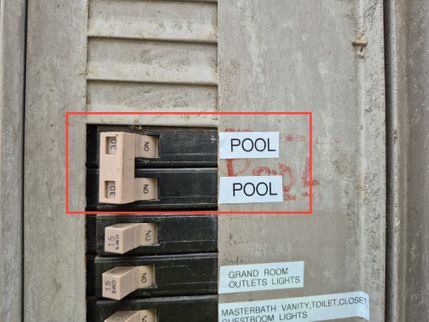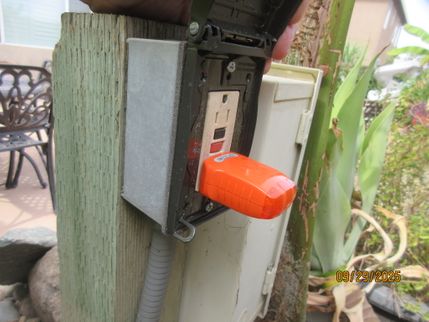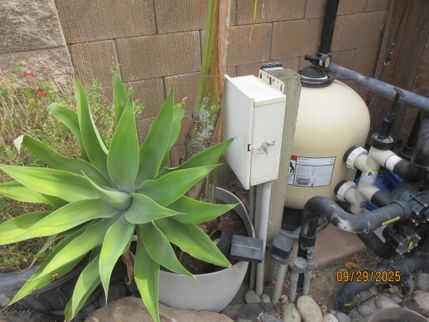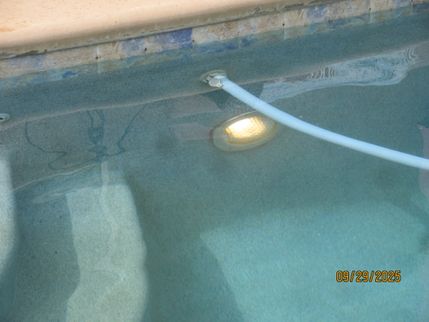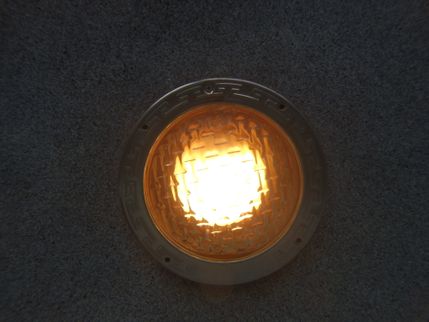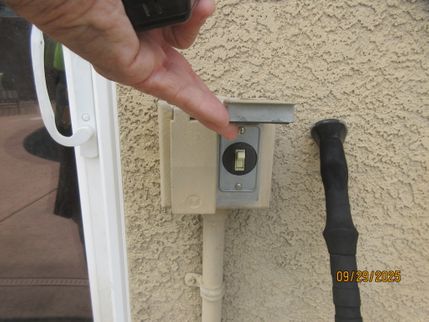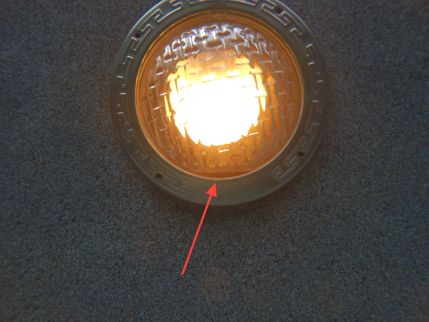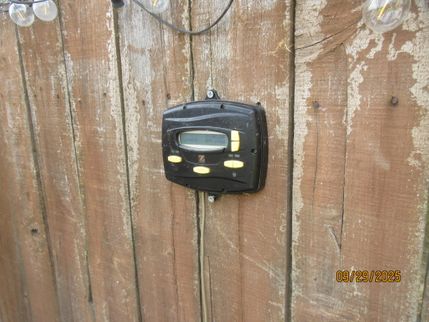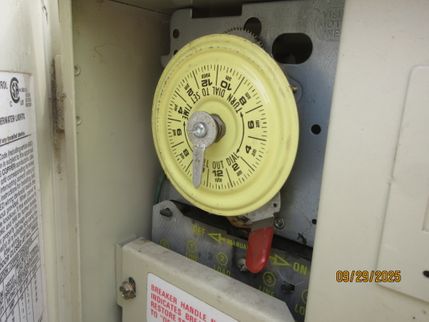Introduction, Scope, Definitions & Compliance Statement
Introduction: The following numbered and attached pages are your property inspection report. The report includes information, pictures, video and recommendations. This inspection was performed in accordance with the current Standards of Practice and Code of Ethics (Spanish Estándares de la Práctica and Código de ética) of InterNACHI (International Association of Certified Home Inspectors) and the Code of Ethics of the CMI (Certified Master Inspectors®). These Standards contain certain and very important limitations, expectations and exclusions to the inspection. A copy is available prior to, during and after the inspection and it is part of the report.
This report has been produced in accordance with the AGREEMENT and is subject to the terms and conditions agreed upon therein. The report was produced exclusively for our CLIENT. Not to be used or interpreted by anyone other than our CLIENT or REPRESENTATIVE. If you’re reading this report but did not hire us, Baker Inspection Group, to perform the original inspection, please note that it is likely that conditions related to the home have probably changed. Minor problems noted may have become worse, recent events may have created new issues and items may even have been corrected and improved. Please call us at (209) 522-5320 so that we can arrange for a proper inspection. Thank You!
What Really Matters in a Home Inspection: The process can be stressful. You will be asked to absorb a lot of information in a short time. This often includes a digital report, photographs and what the Inspector himself says during the inspection. All this combined with the Seller's disclosure and what you notice yourself makes the experience even more overwhelming. What should you do? Relax. Most of your inspection will be maintenance recommendations, life expectancies and minor imperfections. However, the issues that really matter will fall into four categories: 1. Major defects. 2. Things that may lead to Major defects. 3. Things that may hinder your ability to finance, legally occupy or insure the property. 4. Safety hazards. Anything in these categories should be corrected. Often a serious problem can be corrected inexpensively to protect both life and property (especially in categories 2 and 4). Realize that Sellers are typically under no obligation to repair anything mentioned in the report.
Getting the Information to You
This report is designed to deliver important and technical information in an easy way for anyone to access and understand. You can take a quick look at our "Summary Page” and quickly get critical information for important decision making. However, we strongly recommend that you take the time to read the full Report, which includes digital photographs, captions, diagrams, descriptions, videos and hot links to additional information.
This report can also be printed on paper or to a PDF document.
Chapters and Sections: This report is divided into chapters that parcel the property into logical inspection components. Each chapter is broken into sections that relate to a specific system or component. You can navigate between chapters with the click of a button on the left side margin.
Most sections will contain some descriptive information done in black font. Observation narratives, done in colored boxes, will be included if a system or component is found to be significantly deficient in some way or if we wish to provide helpful additional information. If a system or component of the home was deemed to be in satisfactory or serviceable condition, there may be no narrative observation comments in that section.
Observation Labels: All narrative observations are colored, numbered and labeled to help you find, refer to, and understand the severity of the observation. Observation colors and labels used in this report are:
- Description:Detailed description of various aspects of the property noted during the inspection.
- Note:Refers to aside information and / or any comments elaborating on descriptions of systems in the home of a more informational nature.
- Due Diligence:Observations that may require further investigation about a systems condition prior to closing and / or if it exceeds our Standards of Practice for a home inspection.
- Major Concern:Repair items that may cost significant money to correct now or in the near future, or items that require immediate attention to prevent additional damage or eliminate safety hazards. Baker Inspection Group always recommends Qualified Contractors to perform all repair work recommended in the inspection report.
- Repair:Repair items noted during the inspection that are not functioning at all or not functioning as designed and need to be replaced, repaired or in some way remediated. Typically these are concerns that may be expensive to correct or will become expensive corrections if nothing is done. Baker Inspection Group always recommends Qualified Contractors to perform all repair work recommended in the inspection report.
- Repair - Minor:Items that require repair or replacement but may be simple and/or relatively inexpensive and/or quick to repair. These items may not require a professional depending on your comfort level with making these repairs. For example a broken light switch cover, a missing electrical box cover, an ineffective door latch, a missing or inoperative GFCI outlet.
- Recommended Maintenance:These are repair items that should be considered "routine home ownership items," such as servicing the furnace, cleaning the gutters or changing the air filters in the furnace.
- Monitor:Items that should be watched to see if correction may be needed in the future.
- Pool Notes:Refers to aside information and / or any comments elaborating on descriptions of systems of the pool in a more informational nature.
- Pool Due Diligence:Observations that may require further investigation about a systems condition prior to closing and / or if it exceeds our Standards of Practice for a pool inspection.
- Pool Repair:Repair items that require correction now or in the near future, or items that require immediate attention to prevent additional damage or eliminate safety hazards. Baker Inspection Group always recommends Qualified Contractors to perform all repair work recommended in the inspection report.
- Pool Repair - Minor:These are items that require repair or replacement but may be simple and/or relatively inexpensive and/or quick to repair, items considered "routine pool ownership" items.
- Energy Efficiency & IAQ:Denotes observations that are needed to make the home more energy efficient as well as to bring the home up to modern insulation standards. This category typically includes windows and insulation. Other items, such as lighting and appliances, are not inspected for their energy status. It also covers issues related to Indoor Air Quality which is often related to efficiency.
Report Summary: The Report Summary is designed as an overview of all the observations noted during the inspection. This helpful overview is not a substitution for reading the entire inspection report. The entire report must be read to get a complete understanding of this inspection report.
California Home Inspector Compliance Statement: I represent that I am a full member in good standing of the International Association of Certified Home Inspectors (InterNACHI) Member #10052303.
CLICK HERE for a link to the California Business and Professions Code Section 7195-7199 which pertains to Home Inspectors.
Scot Baker, Certified Master Inspector®, Owner of Baker Inspection Group
Full Inspection Report
Site and Components
Site Grading and Drainage
Driveways and Walkways
Grounds, Trees and Vegetation
Fences and Walls
Outbuildings and Exterior Features
Exterior Wall and Components
Siding and Trim
Windows
Doors
Porches and Patios
Vent and Exhaust Terminations
Plumbing System
Water Meter
Supply Source and Material
Distribution Piping
Exterior Hose Bibs
Drain, Waste and Vent Systems
HVAC Distribution and Ventilation
Distribution Systems
Air Filters
Thermostat
Mechanical Ventilation Systems
Main Electrical System
Service Entrance and Meter
Service Voltage
Service Panel Type
Main Electrical Panel
Electrical Distribution and Fixtures
Branch Wiring Circuits
Electrical Disconnects
Lighting, Switches and Receptacles
Ceiling Fans
Smoke and Carbon Monoxide Alarms
Low Voltage Wiring
Interior Components
Ceilings, Walls and Trim
Windows
Doors
Stairways and Railings
Floor Condition and Flooring Materials
Kitchen Appliances
Range, Cooktop and Oven
Microwave, Range Hood Ventilation System
Dishwasher
Garbage Disposal
Refrigerator
Bathroom Components
General Bathroom
Ceiling, Wall and Floor Finishes
Sinks, Countertops and Cabinets
Showers and Bathtubs
Toilets
Ventilation Method
Laundry Area
General Laundry
Clothes Washer and Connections
Clothes Dryer and Connections
Ventilation Method
Pool and Spa Area
General Pool Photos
Safety Barrier System
Decking, Coping, Features and Area
Surface, Tiling and Components
Water Level
Water Quality
General Comments
Building Conditions and Limitations
Standards of Practice: InterNACHI (International Association of Home Inspectors)
Inspection Type: Home and Pool Inspections
Building Type: Single Family [2 story]
Approx. Year of Original Construction (per MLS): 2001
Approximate Square Footage: 3737
Utilities: On
Building Faces: Southwest
Occupancy: Occupied
Structural Pest Inspection Included: No
Pool Inspection: Yes
Attending the Inspection: Client and REALTOR®, Client Not Present at End
Temperature at Start of Inspection: 65-70 (F)
Temperature at End of Inspection: 75-80 (F)
Ground/Soil Surface Condition: Dry
Significant Precipitation in Prior Three Days: No
Animals Present: Yes- Dogs Outside
This home was occupied at the time of the inspection. Inspection of occupied homes presents some challenges as occupant belongings can obstruct visual inspection of and access to parts of the house. We do our best during inspection to work around belongings to discover as much as possible about the house without moving or damaging personal property, however, the presence of personal items does limit the inspection.
Baker Inspection Group prefers our clients to be present during the entire inspection and at the end to discuss the findings of the inspection. For a few reasons, including: (1) We can answer all of your questions and address your concerns as they come up. (2) Both of us can see the condition of the property at the time of the inspection. (3) I can elaborate on what may be complicated or technical. Being that you were not present during the entire inspection, we encourage you to read the whole inspection report and not just the summary portions and to consult us as needed. Call us anytime (209) 522-5320. Please verify anything that we may have said orally, but may not have documented in the report.
Important Pest Notice and Disclaimer: California termites can attack a building in the eaves, rafter tails, Attic and Crawlspace areas. Baker Inspection Group recommends that the client obtain a pest inspection and report from a Qualified and Licensed Pest Inspector before the end of the Inspection Period. California law allows only persons who possess a valid Structural Pest Control License, issued by the State of California Structural Pest Control Board, to inspect or make reports with respect to pest infestations including wood destroying insects, termites, and other organisms such as fungus (causing wood rot). This report is not a termite inspection and no responsibility is assumed for any infestation or damage caused by wood-destroying organisms. More information can be found here http://www.pestboard.ca.gov.
Pools are fun, but children and adults can lose their life quickly. Over 4000 lives annually are lost with one-third under the age of 14. A child can drown in the time it takes to answer a phone. A swimming pool is 14 times more likely than a motor vehicle to be involved in the death of a child age 4 and under. An estimated 5,000 children ages 14 and under are hospitalized due to near-drownings each year; 15% die in the hospital and as many as 20% suffer severe, permanent brain damage. Of all preschoolers who drown, 70% are in the care of one or both parents at the time of the drowning and 75% are missing from sight for five minutes or less. Drowning surpasses all other causes of death to children age 14 and under in Arizona, California, Florida, Hawaii, Montana, Nevada, Oregon, Utah and Washington. A pool alarm with a loud speaker system to sound outside as well as inside the home could save a life. Even if you do not have children you should be concerned. 35% of children that drowned did so in someone else's pool. For more info, please do an Internet search on pool safety.
Site and Components
Site Grading and Drainage
Site Description: Flat (Flat Lot - Inquire With Sellers)
Clearance to Grade: Standard
Downspout Discharge: At Foundation
Driveways and Walkways
Driveway: Concrete
Walkways: Concrete
Grounds, Trees and Vegetation
Trees/Vegetation Too Near Building: No
Fences and Walls
Exterior Fencing: Present, Not Inspected
The property has a fencing system in place. Inspection and evaluation of fencing is beyond the scope of a home inspection.
Roofing and Components
Roofing Materials
Roof Covering Materials: Concrete Tiles
Roof Style: Combination
Roof Inspection Method: From the Roof Surface (walked/climbed), Solar Panels-Partial Covered, Limited Inspection
The roof was covered with low-profile concrete tiles that interlocked with tiles in the same course and overlapped tiles in the course below.
This roof was not fully visible due to the pool solar tubes installation. I inspected the visible areas around the solar tubes but the area below and the panel roof penetrations were not visible. Recommend inspection as needed.
The interlocking concrete tile roof had a number of broken lower right corners. The tiles are the thinnest at their edges where they interlock and the lower corners are the weakest part of these thin areas. Tiles with broken sections that do not exceed the overlap (typically 3-inches) can be repaired. Tiles with broken sections that exceed the overlap should be replaced. Recommend repairs as needed.
Roof Flashings
Flashings, Valleys and Penetrations: Present and Visually Standard, Metal Valleys Noted
Roof flashings are used to keep a roofing system waterproof where the roofing material starts, stops, changes direction or is penetrated. During inspection, we look for standard flashing techniques that could be considered normal or standard in our region. Damaged, incomplete or non-standard flashings can be a sign of an older or less reliable roofing system and may require repair. Any non-standard flashings noted during inspection will be reported on below if found.
Roof Drainage System
Gutter and Downspouts: Full Gutters/Downspouts
The roof drainage system consisted of conventional gutters hung from the roof edges feeding downspouts.
A downspout on the upper gutter system was terminating onto the lower roof. This is industry standard practice but it will prematurely deteriorate the roofing in these locations and it is not recommended by many manufacturers. Recommend extending the downspouts into the lower gutters to better protect the roof.
Exterior Wall and Components
Siding and Trim
Siding Material: Stucco, Veneer
This building had a hardcoat stucco siding system. When installed over a wood building, stucco should be installed with two layers of underlayment below the stucco and a weep screed system which allows air to dry any accumulated moisture behind the stucco. Stucco is one of the nicest and lowest-maintenance siding systems but it is installation-sensitive. Poor installation can lead to expensive moisture control problems. The critical weather barrier, which is installed beneath the stucco is not visible to inspect, limiting the Inspectors' ability to see how the system is performing. During our visual inspection, we look for clues to help make an educated guess about the future reliability of this system. More detailed information can be gained through destructive testing. This involves drilling holes in the stucco and using a moisture probe to determine if any sections of the building have moisture control problems. Destructive testing is beyond the scope of this inspection.
At the time of the inspection, the Inspector observed the condition of the veneer covering exterior walls. Notable exceptions will be listed in this report. Inspection of stone typically includes examination of installation practices and visible condition.
Windows
A lost seal was noted in the glazing at the left side of the house. This has resulted in fogging / purple tinting between the panes of glass that cannot be cleared without glazing repair or replacement. Recommend evaluation and repairs as needed to all glazing with lost seals.
Doors
Porches and Patios
Porch and Patio: Tile, Concrete
Vent and Exhaust Terminations
Present
Attic and Components
Accessibility
Attic Inspection Method: Service Platform
The Attic access hatch requires insulation and weather stripping to prevent heat loss and heat migration into the Attic.
Roof Framing and Sheathing
Sheathing: Oriented Strand Board (OSB)
Rafters: Truss
Ventilation Type
Structure Ventilation Type: Eave, Gable and Roof Jack Vents
Thermal Envelope
Insulation Type: Blown-In Fiberglass
Approximate Insulation R-Value on Attic Floor: R-30 [Fiberglass 10.75"]
Structure and Foundation
Ceiling, Wall and Floor Structures
Ceiling Framing: Bottom Chord of Truss
Wall Framing: Wood Frame
The ceiling and exterior walls appeared to be wood frame construction. The wall framing was not visible during the inspection.
Foundation
Foundation Configuration: Concrete Slab-on-Grade
Foundation Type and Material: Poured Concrete
Evidence of Seismic Protection: Not Accessible
Foundation construction included slab-on-grade. Because the General Home Inspection is a visual inspection, inspection of the slab-on-grade foundation is limited by the fact that typically, most of the foundation and slab is hidden underground or by interior floor coverings. Where possible, I inspect that portion of the foundation visible at the home exterior between grade and the bottom of the exterior wall covering. Shrinkage cracks are often visible and are not a structural concern. It is possible for moisture to enter the foundation through these cracks by capillary action and within the home structure this moisture may cause damage typically detectable only through invasive techniques that lie beyond the scope of the General Home Inspection.
Plumbing System
Water Meter
Supply Source and Material
Water Supply: Public Water Supply
Main Water Pipe Material: Underground (Not Visible), At House (Copper)
Water Pressure: Tested, 65 PSI
Please note that when the water service type is listed here, it is listed based on public records, listing information and disclosure. It is always possible that the system is not as it is listed.
This shows the water pressure (65 PSI) tested during inspection. Generally, "normal water pressure," should be between 40-80 PSI, though pressures near or below 40 PSI can result in poor functional flow to fixtures. Water pressures in excess of 80 PSI risk damaging supply piping components and should be controlled with a pressure reducing valve.
Distribution Piping
Supply Pipe Materials: Copper, Only Partly Visible
Functional Flow: Average
The partially visible water distribution pipes were 1/2-inch copper.
Please note that the supply pipes were concealed behind insulation and finishes and visual inspection was limited. Determination of the supply piping materials used here is an educated guess based on the materials that were visible coming out of the wall and below fixtures.
All plumbing fixtures in the home exhibited functional flow at the time of the inspection.
Dissimilar metal connections were noted in the supply piping systems at the rear of the house. These could lead to electrolysis and premature deterioration of the metal piping. Dielectric fittings should be used where galvanized steel pipes meet copper pipes. Have this evaluated and repaired as recommended by a Qualified Plumbing Contractor.
Exterior Hose Bibs
Hose Bibs: Tested All Accessible
Anti-Siphon Present: No
The hose bibs noted on this building were missing the anti siphon devices and updating is recommended. Modern hose bibs are typically anti siphon style which can prevent water from your hoses backing into your water supply system. Consider installing anti siphon hose bibs or adding an anti siphon device to the existing hose bibs. The following video shows a vacuum breaker. Click Here
Drain, Waste and Vent Systems
System Type: Public Sewer - Buyer
Waste and Vent Pipe Materials: Acrylonitrile Butadiene Styrene (ABS), Only Partially Visible
Functional Drainage: All Plumbing Fixtures had Functional Drainage
Please note that when the sewage discharge type is listed here, it is listed based on public records and disclosure. It is always possible that the system is not as it is listed; for example, a property could be listed as a public sewer system when in fact it is on a private septic system. This is another reason why we recommend evaluation of this system; the type of sewer discharge cannot be verified as part of a visual inspection of the property.
The waste pipes were concealed behind insulation and finishes and the visual inspection was limited. Determination of the waste piping materials used here is an educated guess based on the materials that were visible coming out of the wall and below fixtures.
All of the plumbing fixtures in the house exhibited functional drainage at the time of the inspection.
This shows the locations of the waste line cleanouts at the areas around the house.
A video camera sewer scope is recommended. An evaluation of the sewer line below the ground is beyond the scope of this inspection. A sewer scope is always recommended to further evaluate the sewer line and the below ground connections between the house and the municipal sewer line or septic tank. Sewer scopes are done using video cameras and can reveal the materials, condition and reliability of the sewer line.
Water Heater
Water Heater
Manufacturer: A.O. Smith
Age: 2001
System Type and Capacity: 50 Gallon (2-3 people), Tank
Energy Source: Natural Gas
TPR Valve: Present - Not Tested
Water Heater Straps: Present
This shows the location of the water heater at the Garage.
A temperature and pressure relief valve (TPRV) is required on all water heaters to discharge any excessive pressure within the tank. A discharge pipe should be attached to the valve and directed to a safe location away from body contact. Newer installations must be directed to the building exterior or to an approved indoor drain receptor. Most manufacturers suggest that homeowners test these valves at least once a year by lifting the lever to ensure the valve discharges properly and also recommend inspection of these safety devices every three years. The picture here shows a typical TPRV. They may also be found on the side of the heater on some models. We do not test these valves due to the possibility that they may leak after testing. A leaking or inoperative TPRV should be replaced immediately by a Qualified Plumber.
This was a very old water heater. The average life of these water heaters is 8-20 years. The service life of a water heater will depend on a variety of factors such as water quality and regular scheduled maintenance such as flushing the tank and replacing sacrificial anodes. Recommend evaluation as needed by a Qualified Contractor.
Water Temperature
Water Temperature Measured During Inspection: Yes, 121 Degrees F
The water temperature was tested multiple times during inspection. It is common for water temperatures to fluctuate throughout the house depending on the distance from the water heater, the water heater settings, the type of water heater and any thermostatic controls used in the plumbing fixtures and mixing valves. For reporting, the median temperature is used.
Additional Plumbing
Water Filters
Type: Kitchen Faucet Filter - Not Inspected
A water filtration system was noted in the house - see below the Kitchen sink. Evaluation of this system and water quality is beyond the scope of this inspection. Recommend inquiring with the seller for any maintenance, warranty or installer information that pertains to this system. If the system has not been serviced recently, have the filter system serviced and filters cleaned or replaced as a part of the recommended maintenance schedule.
Landscape Irrigation
Present, Not Inspected, Noted For Buyer
An exterior irrigation system was noted. Sprinkler systems are beyond the scope of this inspection. Irrigation systems require annual attention / repair / servicing after every winter. When testing the system, be sure sprinkler heads are adjusted so the system is not watering the side of the building.
Fuel Distribution System
General Comments
Type of Fuel: Natural Gas
Gas Meter
Present: Yes
Fuel Distribution Systems
Gas Piping Materials: Black Steel - Partially Visible
The house gas distribution pipes visible were black steel.
Please note that the gas distribution pipes were concealed behind insulation and finishes and visual inspection was limited. Determination of the gas distribution piping material used here is an educated guess based on the materials that were visible.
There was no sediment trap found for the gas pipe at the gas water heater. Sediment traps are designed to prevent fouling of gas equipment by allowing sediment to fall out of the gas supply. Sediment traps are required at all automatically controlled gas appliances. Recommend repairs as needed.
Heating System
Heating System
Manufacturer: Rheem
Heating Type: Gas-Fired Furnace Medium Efficiency
Age: 2021
Listed Nominal Capacity: 98,000 BTU
Energy Source: Natural Gas
This house has a gas forced air furnace. A critical component to all combustion heating equipment is the heat exchanger. This is the welded metal assembly inside the furnace that contains the products of combustion so that moisture, carbon monoxide and other products of combustion do not mix with interior air and get safely vented to the exterior. Heat exchangers on modern furnaces have an average life expectancy of 15-20 years. Unfortunately, heat exchangers are concealed inside the heating equipment; they are not visible and specifically excluded from a home inspection. Cracks in heat exchangers may be concealed and can pose a potential safety hazard.
Annual servicing of the gas forced air furnace is recommended for safe and reliable heat. The design life of these forced air furnaces is 15-20 years. Recommend keeping this furnace on a regular service schedule.
Vents and Flues
Flue Type: B-Vents
Thermal Imaging
Presence of Heat Source in Each Room: Present Upper Level, Present Lower Level
The pictures illustrate that the heating equipment for the upper level responded to operating controls at the thermostat when placed in the heating mode. Heated air was discharging from all supply air registers (representative amount shown) unless otherwise noted. No further equipment diagnostics were performed as part of this home inspection.
The pictures illustrate that the heating equipment for the lower level responded to operating controls at the thermostat when placed in the heating mode. Heated air was discharging from all supply air registers (representative amount shown) unless otherwise noted. No further equipment diagnostics were performed as part of this home inspection.
Cooling System
Cooling System
Manufacturer: Rheem
Cooling Type: Air Conditioning Present, Split System
Age: 2021
Listed Nominal Capacity: 5.0 Tons
Cooling Equipment Refrigerant Type: R-410A - Puron
Energy Source: Electricity
Temperature Differential: Acceptable: Within 12-22 Degrees F.
Condensate Overflow Piping and Warning Device: Configured Improperly - Alarm Missing
The following list is a minimum set of requirements to be expected of air conditioning servicing. These are provided as a courtesy to show they types of check-ups that should be expected from a professional servicing.
Check compressor efficiency. Check refrigerant level. Clean the condenser coil. Change or clean air filters. Inspect contactors and wiring. Inspect drive-sheaves, pulleys and belts. Check and adjust for proper air flow. Clean the blower motor as needed. Lubricate all motors and shaft bearings. Check, calibrate and program the thermostats and be sure the thermostat has adequate batteries as needed. Check unit smoke detector, clean filter if applicable. Check safety disconnect, laser-temp -- check across contacts
The HVAC secondary condensate line was visible at the right side of the house. The purpose of the secondary condensate line and this location is to act as a visual indicator of potential problems. If you notice condensate dripping from this location, the main condensate line is plugged and requires cleaning.
The condensation line designed to properly dispose of condensate produced by the operation of the air-conditioning evaporator coils was improperly configured. Recommend repairs as needed.
The cooling system evaporator coil had no condensate overflow warning/shutoff device installed. If the condensate drainage system should fail, this condition could result in moisture damage to the home. Recommend that a proper condensate overflow/shutoff device be installed. Click here for information
Thermal Imaging
Presence of Cooling Source in Each Room: Present Upper Level, Present Lower Level
The pictures illustrate that the air conditioning equipment for the upper level responded to operating controls at the thermostat when placed in the cooling mode. Cooled air was discharging from all supply air registers (representative amount shown) unless otherwise noted. No further equipment diagnostics were performed as part of this home inspection.
The pictures illustrate that the air conditioning equipment for the lower level responded to operating controls at the thermostat when placed in the cooling mode. Cooled air was discharging from all supply air registers (representative amount shown) unless otherwise noted. No further equipment diagnostics were performed as part of this home inspection.
HVAC Distribution and Ventilation
Distribution Systems
Heating/Cooling Ductwork Location: Attic, Partially Visible
Distribution Method: Flex Duct, Insulated
Multi Zone Heating/Cooling: Multi Zone Levels
The heating and cooling was a two zone system. One thermostat and zone was the upper level, another thermostat and zone was the lower level. This type of system provides better energy savings by heating or cooling one level at a time if needed.
Consider cleaning the HVAC ductwork to improve indoor air quality and efficiency of the HVAC system, this is especially important if pets have been in the home. Recommend having this heating duct system professionally cleaned as needed.
Air Filters
Air Filter Location: Hallway Ceiling
Air Filter Type: Disposable
Air Filter Size: 20x36x1
The furnace filter was located at the cold air return.
The heating and cooling system had a disposable air filter installed. This should be changed quarterly or more to ensure proper air flow at the furnace. Be sure to install the filters with the arrows pointing in the same direction as the air flow in the furnace.
Thermostat
Type: Programmable, Nest, Two
The upstairs heating and cooling system was controlled by a programmable thermostat. Heating and cooling costs can be reduced by programming the thermostat to raise and lower home temperatures at key times.
The downstairs heating and cooling system here was controlled with a Nest thermostat. These are digital and internet-based thermostats. Recommend inquiring with the seller about access to this thermostat so that controls and user account access can be changed for the new owner. Here are a few links to more information:
How to reset Nest Protect and erase all your personal settings
Mechanical Ventilation Systems
Bathroom / Laundry Area Exhaust Ducting: Ducted to Exterior (where visible)
Kitchen Fan Ducting: Recirculating Type
The Kitchen exhaust system was a recirculating type.
Main Electrical System
Service Entrance and Meter
Service Entrance: Below Ground
Electrical Meter: Electrical Meter Noted
Meter Base Amperage: CL200 Amps
Service Voltage
Service Voltage: 120/240 - With Testing Note
Service Panel Type
Type: Load Center
Main Electrical Panel
Main Electrical Panel Manufacturer: Cutler-Hammer
Service Disconnect Location: At Service Panel
Service Disconnect Type: Breaker
Service Disconnect Amperage: 200 Amps
Main Electrical Panel Amperage: 200 Amps
Service Overcurrent Protection Device: Breakers
Service Panel (AFCI) Protection: No
Service Panel (GFCI) Protection: No
Possible multi-wire circuits (both red and black hots) were noted in the main panel. These are circuits where two ungrounded conductors share a neutral. Starting in 2008, these were required to have a means of disconnecting BOTH ungrounded conductors together. This means a handle tie should be used. This is recommended for improved safety. Recommend evaluation and repairs as needed.
Grounding / Bonding
Grounding System
Grounding Type: UFER Ground
A UFER ground connection was noted for the electrical grounding system. These are required and standard on newer construction houses. These grounds connect the electrical system to Rebar in the house foundation and make a reliable path to the earth for "earthing" or grounding the electrical system.
Water Bonding
Bonding Present: Noted - Cold Piping Only
Metal cold water distribution pipes appeared to be properly bonded. Metal hot water pipes were not bonded. Electrical bonding of the water pipes helps to ensure that safe conditions exist if the pipes should somehow come into contact with electrical wiring and become energized. Bonding of water pipes is required in new homes by generally-accepted modern safety standards. Although it may not have been required at the time the building was originally constructed, as a safety measure the Inspector recommends that the hot water pipes be bonded also.
Electrical Distribution and Fixtures
Branch Wiring Circuits
Branch Wiring Method: Non-Metallic Sheathed Cable - Partially Visible
Branch Wiring Material Type: Copper - Solid
Electrical Disconnects
Disconnects Noted: Air Conditioner
Lighting, Switches and Receptacles
Inspection Method: Tested All Accessible
Receptacle Types: Three Wire Receptacles
Interior GFCI Protection: Yes, Partial in Areas
Exterior GFCI Protection: Undetermined
During the inspection we make every effort to test and inspect all accessible electric receptacles and switches. In general, the scope of testing is directly related to access; where personal belonging and furniture obstruct access to receptacles and fixtures, fewer of them can be reasonably tested during inspection. All defects found during inspection today will be listed in this report.
The house had photoelectric dusk to dawn photo eyes installed. These are installed to turn off the lights during the day if the wall switches are left on to conserve energy. Because of the sensors, some exterior lights may not have been functional during the inspection. Recommend confirming the proper function of the lights prior to closing.
I was unable to determine what devices were controlled by switches at the upstairs living area, Garage and rear of the house. They may connect to future ceiling fans. Switches sometimes control exterior lights which are controlled by photo sensors and will operate only at night or only the upper or lower half of an interior switchable receptacle. Tracing the devices controlled by all switches exceeds the scope of the general home inspection. Recommend evaluation as needed.
Several inoperative electric receptacles were noted at the Kitchen and Garage. These may be on a switched or GFCI protected circuit, but no switch or GFCI was found during inspection. Have these receptacles evaluated and repaired as needed.
The GFCI outlets at the upstairs and downstairs Hallway Bathrooms were non-grounded outlets which is currently acceptable. They should be labeled a non-grounded GFCI and it is not as safe as a grounded GFCI (for your information). Have these investigated and repaired as needed.
Circuit testing was showing open grounds at some of the electric receptacles at the Main and upstairs Hallway Bathrooms. An open ground is often a case of never connecting a ground to the receptacle or forgetting to reconnect the ground if they had occasion to disrupt it. Have this investigated and repaired as needed.
The house interior had ground fault circuit interrupter (GFCI) protection where needed except for the Garage (partial) and Laundry area which had none. Although GFCI protection may not have been required at the time the home was built, for safety reasons, Baker Inspection Group recommends that electrical receptacles located in Basements, Cellars, Crawlspaces, Garages, and interior receptacles located within 6-feet of a plumbing fixture be provided with ground fault circuit interrupter (GFCI) protection in good working order to avoid potential electric shock or electrocution hazards. This can be achieved relatively inexpensively by: 1. Replacing an individual standard receptacle with a GFCI receptacle. 2. Replacing the electrical circuit receptacle located closest to the overcurrent protection device (usually a breaker) with a GFCI receptacle. 3. Replacing the breaker currently protecting the electrical circuit that contains the receptacles of concern with a GFCI breaker.
Ceiling Fans
Ceiling Fans: Present and Tested
The ceiling fans were tested and functional during the inspection.
Smoke and Carbon Monoxide Alarms
Smoke Alarms: Present
Smoke Alarms Noted: Where Needed
Carbon Monoxide Alarms: Present, Incorrect Location, Missing (labeling unclear, requires verification)
Smoke alarms are not tested as part of a general home inspection. Recommend that all Smoke alarms be checked to confirm that they don't need battery replacement.
For reliability, Fire Marshals recommended updating Smoke alarms every 10 years and changing batteries bi-annually. The latest data indicate that we should be using photoelectric technology in our Smoke alarms for improved fire detection and to reduce problems with false alarms which can lead to disabling of this important safety system. Unfortunately, the alarms have to be removed to determine if they are photo-electric or ionization types. It is surprisingly complex to accurately test a Smoke alarm system and determine the reliability, age, and type of sensor technology used, especially as many houses can have half a dozen or more alarms throughout the house. A complete evaluation of Smoke alarms is beyond the scope of this inspection. For optimal fire safety, recommend taking control of these important safety devices and learning about how to service and maintain your Smoke alarm system to keep the building occupants safe.
Carbon Monoxide alarms were found and noted during inspection. Be sure to check these regularly. The standard is one per floor and one outside all sleeping areas.
The installation of a Carbon Monoxide alarm is recommended for all houses that have fuel burning appliances such as gas or oil furnaces, gas water heaters, gas ovens and cook-tops, gas fireplaces and wood stoves. The location should be: at least one alarm outside of all sleeping areas and one on each floor of the house. Best practices are to have these alarms hardwired with a battery back-up, though requirements are for the installation to meet manufacturer's specifications. Carbon Monoxide is a colorless, odorless gas that can cause sickness, nausea and even death. Carbon Monoxide alarms have a useful service life of roughly 6 years, so changing them more frequently than Smoke alarms is recommended.
There were no properly placed Carbon Monoxide alarms (the labeling was not clear on the two in the pictures below) found in the home. Baker Inspection Group recommends that Carbon Monoxide alarms be installed according to the manufacturer's instructions. They should be installed specifically outside of each sleeping area in a house (there could be multiple areas), on each level of the house and in the Basement also. As of January 1, 2012, Carbon Monoxide alarms are required by law.
A Carbon Monoxide alarm was found upstairs and noted during inspection, but it was not located adequately. The default safety standard is one Carbon Monoxide alarm per floor and one outside of all sleeping areas. Be sure to install and check these important safety devices regularly with the test button to ensure they are operational.
Low Voltage Wiring
This house had a smart doorbell installed. These are often tied into an internet connection and may include a camera and other features. Recommend inquiring with the sellers for any needed information about using this system and changing access and passwords that may be needed to control this house feature.
A "smart box" low-voltage wiring panel was noted in the Main Bathroom closet. This is designed to house the low voltage CATV and phone wires. Homeowners will often use these to create in house networks for internet and communication devices and may locate internet routers here. Inspection of low voltage wiring and communication wiring is beyond the scope of this inspection. Inquire with the seller for any additional information.
Interior Components
Ceilings, Walls and Trim
Windows
Inspection Method: Tested All Accessible
During the inspection we inspected the headers and sills around all windows where accessible. No water stains, or signs of leakage were found. It is always good practice to monitor any exposed windows, especially those with South and West exposures to check for leaks during heavy wind-driven rains.
Doors
Inspection Method: Tested All Accessible
Stairways and Railings
Floor Condition and Flooring Materials
The sub-floor was squeaking at the upstairs. This happens when inadequate adhesive was used to secure the sub-floor to the floor frame. Screws can be used to secure loose sub-floor if the framing lay-out can be found. Finding the layout can be difficult if the ceiling below is finished. Often this involves removing the carpet to find the lay out and screw / secure the loose sub-floor. This is a cosmetic defect that should be repaired as desired. The best time to repair this is when replacing the current finish floor.
Kitchen Sinks and Cabinetry
Sinks and Plumbing
Sink Functional: Tested
Kitchen Appliances
Range, Cooktop and Oven
Manufacturer: General Electric
Range, Cooktop and Oven: Gas Cooktop and Electric Oven
Thermal images show the cooktop and built in oven were tested and working during the inspection.
Microwave, Range Hood Ventilation System
Manufacturer: Air King, General Electric
Type: Range Hood - Functional, Microwave Functional, Ductless Fan - Gas
The range hood exhaust fan and lights were functional at the time of the inspection.
The exhaust fan for the gas range in the Kitchen was not vented to the exterior of the house. An exhaust fan that ducts to the exterior is not required as long as there are additional provisions for ventilation somewhere in the Kitchen. This can be subjective and in my opinion, can pose a safety hazard with gas ovens as they produce both moisture and Carbon Monoxide during operation. Recommend installing a fan that vents to the exterior for this gas range.
Dishwasher
Manufacturer: Whirlpool
Dishwasher: Not Operated (Recently Ran)
Dishwasher Air Gap: Present
Garbage Disposal
Manufacturer: InSinkErator
Garbage Disposal: Operated
The Kitchen island garbage disposal was inoperative at the time of inspection; the appliance had no power at the outlet. Repair as needed.
Refrigerator
Refrigerator: Not Inspected
Bathroom Components
General Bathroom
During the inspection, I operated all the plumbing fixtures in the Bathrooms. I tapped for loose tiles and finishes in shower and tub enclosures. I do not test bathtub overflow drains as this risks damaging finishes around the tub. Monitor tubs while filling and avoid pushing water into the overflow. Even well-installed overflow drains can leak as the gaskets that seal the overflow will dry out over time and may no longer provide a watertight seal. I also do not perform shower pan testing, this is performed by blocking the drain and filling the shower pan with water and allowing it to sit for a determined amount of time. Monitor plumbing after moving into a new house as testing during inspection presents less stress on plumbing than daily use. Please note that vacant houses present additional risk as it can be difficult to distinguish how the plumbing system will respond to daily use. Any defects uncovered during inspection are listed in this report.
Ceiling, Wall and Floor Finishes
Sinks, Countertops and Cabinets
Sinks Functional: Tested
Showers and Bathtubs
Bathtub / Shower Functional: Tested
At the Main and upstairs Hallway Bathrooms, the handles leaked when running the water. Recommend evaluation and repairs as needed.
Toilets
Toilets Functional: Tested
Ventilation Method
Type: Bath Fan - 1, Operable Window - 1, Toilet Room Only
The downstairs Hallway Bathroom fan was operated today and it appeared to be working as intended.
No ventilation fan was noted in the upstairs Hallway Bathroom; there was a window but no fan. Fans that vent to the exterior are recommended and will help reduce indoor humidity and risks for molds. Installation of a Bathroom fan is recommended.
At the Main Bathroom, although the room containing the toilet had an exhaust fan, the room containing the shower or bathtub only had a window. When the window is closed, this condition can create excessively high humidity which may cause problems such as corrosion or microbial growth.
Laundry Area
Clothes Washer and Connections
Clothes Washer: Not Tested, Catch Pan Missing - Recommended
Clothes Dryer and Connections
Clothes Dryer: Dryer Hook-Ups Only, No Appliance
Power Source: Electric 240-Volt
Dryer 240-Volt Electrical Receptacle: Four-Prong, Modern
Dryer Venting: Exhaust Termination (Roof Termination - Not Ideal)
There was no dryer installed in the Laundry area at the time of inspection. When you install your clothes dryer, be sure to check that it is venting outdoors, this is difficult to confirm during inspection when no appliances are present.
The clothes dryer was exhausting out of the roof. This is not a desirable installation as it can be difficult to access the exhaust duct for cleaning and inspection. Dryer lint is flammable and a fire hazard when it accumulates. If the exhaust duct has not been cleaned and inspected in the last year, recommend a routine servicing and cleaning to ensure safe and reliable performance.
- When exhaust ducts pass through unconditioned spaces, such as Attics, the ducts should be insulated. The duct was insulated.
Ventilation Method
Type: Fan Present
The Laundry area fan was operational at the time of the inspection.
Chimneys and Fireplaces
Solid Fuel Fireplaces
Fireplace Types: Prefabricated Metal Firebox
Gas Log Starter: Damper Hold Open Missing, Not Operated
Gas Shut Off Noted: Yes
Baker Inspection Group observed the condition of the prefabricated metal firebox wood-burning fireplace, but it was not operated. Any exceptions will be listed in this report. Inspection of wood-burning fireplaces typically includes visual examination of the following: adequate hearth, firebox condition, operable damper, visible flue condition, ember barrier, exterior condition. For a full inspection to more accurately determine the condition of the fireplace and to ensure that safe conditions exist, we recommend that you have the fireplace inspected by an Inspector certified by the Chimney Safety Institute of America (CSIA). Find a CSIA-Certified Inspector near you at http://www.csia.org/search.
The wood log gas starter was not lit or operated at the time of the inspection. For a full inspection to more accurately determine that safe conditions exist, we recommend an Inspector certified by the Chimney Safety Institute of America (CSIA). Find a CSIA-Certified Inspector near you at http://www.csia.org/search.
Accurate inspection of the chimney flues lie beyond the scope of the General Home Inspection. Although the Inspector may make comments on the condition of the portion of the flues readily visible, a full, accurate evaluation of the flue condition would require the services of a specialist. Because the accumulation of flammable materials in the flue is a natural result of the wood-burning process is a potential fire hazard, we recommend that you have the flue inspected by a Qualified Contractor.
Garage / Carport
General Garage Conditions
Garage Type: Attached
Garage Occupant Doors: Fire Rated
Vehicle Doors and Automatic Openers
Overhead Garage Door Type: One - Double Overhead Door
Automatic Garage Door Opener: Present
Manufacturer: Genie
The Garage Door Systems Industry recognizes the critical safety role of Home Inspectors. This checklist is intended to help Home Inspectors maximize the value of their service to homeowners and home buyers. This checklist covers a basic inspection of a residential sectional garage door, connected to an automatic garage door operator when applicable.
Dasma Garage Door Checklist
- Is a spring warning label attached to the spring or spring bracket?
- Yes
- Is a general warning label attached to the back of a door section?
- No
- Are two warning labels attached to the door in the vicinity of the bottom corner brackets?
- No
- Are all hardware parts securely and appropriately attached and damage free?
- Yes
- Are counterbalance springs and their attachment components restrained by a cable or shaft?
- Yes
- Are the door sections free of any signs of fatigue?
- Yes
- Are the door sections free of any signs of cracking?
- Yes
- Are the door sections free of any signs of separation of materials?
- Yes
- Is an Entrapment Warning label attached to the wall nearby the wall-mounted control button?
- No
- Does the door have an acceptable means of manually detaching the door from the operator?
- No
- Are all control buttons mounted in clear view of the door, and safely away from all moving parts of the door?
- Yes
- Are all control buttons mounted at least five feet above any adjacent walking surfaces to keep them out of the reach of children?
- Yes
- Are there handles or suitable gripping points on both the inside and outside of the door?
- No
- Does the door move freely, without difficulty, and not more quickly than force applied?
- No
- Do the rollers stay in the track during operation?
- Yes
- Does the door stay in the fully open position?
- No
- Does the door stay in the partially open position 3-4 feet above the floor?
- No
- Does the garage door operator have at least one working control button?
- Yes
- Does the door fully open and stop above the opening?
- Yes
- Does the door fully close and rest on the floor with no gap?
- Yes
- Is a self-grounding or GFCI electrical receptacle outlet within cord length of the operator?
- Yes
- If present, is the beam no higher than six inches above the floor?
- Yes
- Does the door reverse and return to the fully open position?
- Yes
- Does the door function without being connected to the electrical receptacle?
- Yes
The double overhead Garage door opener had a battery back up installed per newer California code. The door opener was functional while unplugged.
The double overhead Garage door was difficult to open manually at the time of the inspection. This is typically due to improper roller / track and spring adjustment. Recommend evaluation and repairs as needed.
Recommend having the double overhead Garage door serviced and repaired as recommended. During visual inspection and testing, the door would not stay open correctly. This is an indication that the torsion springs require adjustment, repair or replacement. The overhead door should be able to stay open on its own.
The double overhead Garage door automatic Garage door opener did not respond to testing of the pressure-activated automatic-reverse features. Overhead Garage doors are not tested by the Inspector using specialized equipment and this inspection will not confirm adherence to manufacturer's specifications. This inspection is performed according to the Inspector's judgment from past experience. If you wish to ensure that the overhead Garage door complies with the Manufacturer's specifications you should have the it inspected by a Qualified Contractor. This is typically an adjustment made at the opener itself called "down-force". Overhead Garage doors are required to have at least one automatic-reverse device.
This overhead Garage door did have an operable photo-sensor activated automatic reverse device installed.
Floor
Garage Slab: Concrete, Not Fully Visible - Storage Obstructed View
Personal belongings and storage were obstructing a full view of the concrete Garage floor.
Pool and Spa Area
General Pool Photos
Safety Barrier System
At Least Two of the Following Required: Fail
Pool Enclosure: No
Removable Mesh Fencing: No
Safety Pool Cover: No
Pool Surface Alarm: No
Exterior Door Exit Alarms: No
Exterior Door Self Closing and Latching: No
Window Alarms: No
Other Means of Protection: No
Beginning January 1st 2018, in accordance with SB 442, Newman.
Public health: pools: drownings, Home Inspectors must report on the presence of seven pool safety features. Below is the wording of the new bill. In connection with the transfer, as defined in subdivision (e), of real property with a swimming pool or spa, an appropriate inspection shall include a noninvasive physical examination of the pool or spa and dwelling for the purpose of identifying which, if any, of the seven drowning prevention safety features listed in subdivision (a) of Section 115922 of the Health and Safety Code the pool or spa is equipped. SEC. 4. Section 115922 of the Health and Safety Code is amended to read: 115922. (a) Except as provided in Section 115925, when a building permit is issued for the construction of a new swimming pool or spa or the remodeling of an existing swimming pool or spa at a private single-family home, the respective swimming pool or spa shall be equipped with at least two of the following seven drowning prevention safety features: (1) An enclosure that meets the requirements of Section 115923 and isolates the swimming pool or spa from the private single-family home. (2) Removable mesh fencing that meets American Society for Testing and Materials (ASTM) Specifications F2286 standards in conjunction with a gate that is self-closing and self-latching and can accommodate a key lockable device. (3) An approved safety pool cover, as defined in subdivision (d) of Section 115921. (4) Exit alarms on the private single-family home’s doors that provide direct access to the swimming pool or spa. The exit alarm may cause either an alarm noise or a verbal warning, such as a repeating notification that “the door to the pool is open.” (5) A self-closing, self-latching device with a release mechanism placed no lower than 54-inches above the floor on the private single-family home’s doors providing direct access to the swimming pool or spa. (6) An alarm that, when placed in a swimming pool or spa, will sound upon detection of accidental or unauthorized entrance into the water. The alarm shall meet and be independently certified to the ASTM Standard F2208 “Standard Safety Specification for Residential Pool Alarms,” which includes surface motion, pressure, sonar, laser, and infrared type alarms. A swimming protection alarm feature designed for individual use, including an alarm attached to a child that sounds when the child exceeds a certain distance or becomes submerged in water, is not a qualifying drowning prevention safety feature. (7) Other means of protection, if the degree of protection afforded is equal to or greater than that afforded by any of the features set forth above and has been independently verified by an approved testing laboratory as meeting standards for those features established by the ASTM or the American Society of Mechanical Engineers (ASME). Section 115923. An enclosure shall have all of the following characteristics: (a) Any access gates through the enclosure open away from the swimming pool, and are self-closing with a self-latching device placed no lower than 60-inches above the ground. (b) A minimum height of 60-inches. (c) A maximum vertical clearance from the ground to the bottom of the enclosure of two-inches. (d) Gaps or voids, if any, do not allow passage of a sphere equal to or greater than four-inches in diameter. (e) An outside surface free of protrusions, cavities, or other physical characteristics that would serve as handholds or footholds that could enable a child below the age of five years to climb over.
Exterior doors of a building that served as a part of the safety barrier had damaged or missing alarms. Such doors should be equipped with functioning alarms that complies with modern safety standards. Recommend repairs as needed for safety reasons.
1. All doors with direct access to the pool area are equipped with an alarm that sounds continuously for at least thirty (30) seconds immediately after the door and its screen, if present, are opened. It must be capable of providing a sound pressure level capable of being heard throughout the house during normal household activities. The alarm shall automatically reset under all conditions and be equipped with a manual means, such as a touch pad or switch, to temporarily deactivate the alarm for a single opening. Such deactivation shall last not longer than 15 seconds. The deactivation device shall be located at least 54-inches above the threshold of the door
An exterior door of the house that served as a part of the safety barrier was not self closing or latching. Such doors should be equipped in a matter that complies with modern safety standards. Recommend correction as needed for safety reasons. All doors leading into the pool area should be equipped with self-closing and self-latching devices installed within the release mechanism located a minimum of 54-inches above the floor.
The home had windows that when opened, had direct access to the pool. There were no safety alarms installed at the windows.
305.4 Structure Wall as a Barrier Where a wall of a dwelling or structure serves as part of the barrier and where doors or windows provide direct access to the pool or spa through that wall, one of the following shall be required: 1. Operable windows having a sill height of less than 48-inches above the indoor finished floor and doors shall have an alarm that produces an audible warning when the window, door or their screens are opened. The alarm shall be listed and labeled as a water hazard entrance alarm in accordance with UL 2017. In dwellings or structures not required to be Accessible units, Type A units or Type B units, the operable parts of the alarm deactivation switches shall be located 54-inches or more above the finished floor. In dwellings or structures required to be Accessible units, Type A units or Type B units, the operable parts of the alarm deactivation switches shall be located not greater than 54-inches and not less than 48-inches above the finished floor. Recommend that alarms compliant with modern safety standards, be installed for safety reasons.
Decking, Coping, Features and Area
Deck Material: Concrete
Surface, Tiling and Components
Vessel Type: Gunite
The pool surface appeared to be gunite. A gunite pool surface is a concrete pool made from a mixture of sand, cement, and water that is sprayed onto a pool's structure using a high-pressure hose. The gunite is applied in layers, which creates a dense, solid structure without seams. Gunite pools are known for their durability, strength, and ability to conform to any shape or size.
Water Level
The pool appeared to be filled to capacity at the time of the inspection.
Water Quality
The Inspector recommends that you have water in the pool tested to ensure that it lies within acceptable parameters.
Pool Mechanicals
Plumbing at Pool (Jets, Skimmer, Drains, etc.)
The auto fill was operational at the time of the inspection.
You should ask to see documentation that the pool drains are compliant with the Pool & Safety Act. Commencing January 1, 2007, a new law went into effect regarding the safety and security of swimming pools and spas located on private single-family residences. To eliminate safety hazards on new and existing swimming pools and spas, an approved anti entrapment cover be installed on all pool and spa drains any time a building permit is issued for the construction of a new swimming pool or spa or the remodel or modification of an existing swimming pool, toddler pool, or spa. Recommend evaluation as needed.
Plumbing System
Control valves were leaking at the time of the inspection. Recommend evaluation and repairs as needed.
White plastic PVC pipes were exposed to direct sunlight. This type material is deteriorated by the ultra-violet (UV) radiation in sunlight, and this condition will result in premature failure of pipes compared to similar pipes designed to withstand exposure to UV. Such pipes should be painted over to protect them or replaced as needed.
Pump System
Manufacturer: Jandy
Pool Pump Type: Filter Pump
At the time of the inspection, the Inspector observed the condition and operation of the swimming filter pump.
Filtration and Cleaning Systems
Manufacturer: Pentair
Filter Type: Sand Filter, Sweep Present
The pool filtration system was a sand type.
The pool sweep was functional at the time of the inspection.
Heating System
Heating System: Solar
The pool was heated by a solar thermal system.
Automatic Sanitation and Chemical Storage
Type: None Installed
Pool Electrical
Electrical Panel, Wiring, GFCI and Bonding
Pool Electrical Panel Manufacturer: Intermatic, Pool Panel
Pool Electrical Panel Disconnect Type: Breaker
Pool Electrical Panel Disconnect Ampacity: 30 Amps
Pool Electrical Panel Type: Main Lug (no main disconnect)
Pool Electrical Panel Ampacity: 60 Amps
Pool Overcurrent Protection Device: Breakers
Pool Electrical System (GFCI) Protection: Missing - Pool
Pool equipment appeared to be properly electrically bonded.
There was no ground fault circuit interrupter (GFCI) protection for the pool at the time of inspection. This can be achieved relatively inexpensively by replacing the breaker currently protecting the electrical circuit that contains the circuits of concern with a GFCI breaker. Recommend repairs as needed.
Pool Lighting
Pool Light: Functional
The pool lighting system had no (requires verification) ground fault circuit Interrupter (GFCI) protection. Recommend that ground fault circuit Interrupter GFCI protection be installed.
Control System
Type: Remote Controller, Manual or Mechanical Timer
The pool control system was a mechanical type.
Safe Home Book
Safe Home Book
Baker Inspection Group is proud to include our SAFE HOME BOOK as part of your home inspection report. This publication is a compilation of well-researched articles especially for homeowners. They include valuable information and tips for helping keep families safe and their homes in top condition. Please enjoy it with our compliments.
©2013 International Association of Certified Home Inspectors & Master Inspector Certification Board.
THE SAFE HOME BOOK contains chapters on the following:
CHILD SAFETY Twelve safety devices to protect your children, crib safety, furniture and TV tip-over hazards, anti-tip brackets, window falls, safety glass, child-proofing windows and stairs, Garage doors and openers, trampoline safety, tree swings, treehouses.
LADDERS AND STAIRWAYS Ladder safety, Attic pull-down ladders, stairways, deck safety.
SWIMMING POOL SAFETY Home pools, swimming pool barriers, pool alarms, pool drain hazards, pool water pathogens, saunas.
HOME SECURITY Burglar-resistant homes, bump keys, the 10 best places to hide valuables in your home, window bars, Safe Rooms (panic rooms).
FIRE SAFETY Dryer vent safety, pilot lights, hearths and hearth extensions, holiday safety, firestops, clothes closet lighting, barbecue safety, kerosene heaters, attached Garage fire containment, non-conforming Bedrooms, window wells, fire extinguishers, smoke alarms, fire sprinklers, house numbers.
ELECTRICAL SAFETY Aluminum wiring, knob-and-tube wiring, ungrounded electrical receptacles, ground-fault circuit interrupters (GFCI), arc-fault circuit interrupters (AFCI), electric fences, generators.
ENVIRONMENTAL CONCERNS Asbestos, Asbestos cement siding, lead facts, formaldehyde, carbon monoxide, backdrafting, fireplace fuel, ventless fireplaces, mold, central humidifiers, Bathroom ventilation, sewer gases, pesticides, pet allergens, greywater, backflow prevention, carpeted Bathrooms, Chinese drywall, home heating oil tanks, underground fuel storage tanks, compost pile hazards, Hantavirus, plants and Indoor Air Quality.
MOTHER NATURE Earthquake preparedness, tornado inspections, wind mitigation, windbreaks, tree dangers, lightning, poison ivy, oak and sumac, rodents, bed bugs, venomous pests, snow guards, defensible space, emergency preparedness.
ELDERLY SAFETY Aging in place, aging in place checklist, anti-scald valves.
CLICK HERE to view
Checking Out Procedure
Check Out List
Lights: Realtor Still in House
Heating and Cooling: Restored to Pre-Inspection Settings
Oven: Off
Appliances: Off / Finishing Cycle
Use of Photos and Video: Your report includes photographs which help to clarify where the Inspector went, what was looked at, and the condition of a system or component at the time of the inspection. Some of the pictures may be of deficiencies or problem areas, these are to help you better understand what is documented in this report and may allow you see areas or items that you normally would not see. Not all areas of deficiencies or conditions will be supported with photos.
Thermal Imaging: An infrared camera may be used for specific areas or visual problems and should not be viewed as a full building thermal scan. Temperature readings on thermal images in this report are included as a courtesy and should not be wholly relied upon as a home inspection is qualitative, not quantitative. These values can vary +/- 4% or more of displayed readings, and these values will display surface temperatures when air temperature readings would actually need to be conducted on some items which is beyond the scope of a property inspection.
Scope: A property inspection is intended to assist in evaluating the overall condition of the dwelling. The inspection is based on observation of the visible, readily accessible, and apparent condition of the structure and its components on this day. The results of this inspection are not intended to make any representation regarding the presence or absence of concealed defects that are not reasonably ascertainable or readily accessible in a competently performed inspection.
No Warranty, Guarantee or Insurance by Baker Inspection Group is expressed or implied. This report does not include inspection for Code Compliance, Wood Destroying Organisms, Asbestos, Mold or Lead. A representative sampling of the building components is viewed in areas that are accessible at the time of the inspection. No destructive testing or dismantling of components is performed. Not all defects will be identified during this inspection. Unexpected repairs should be anticipated. The person conducting your inspection is not a Structural Engineer or other professional whose license authorizes the rendering of an opinion as to the structural integrity of a building or its other component parts.
CA PUBLIC RESOURCES CODE 25401.7 At the time a single-family residential dwelling is sold, a buyer or seller may request a home inspection, as defined in subdivision (a) of Section 7195 of the Business and Professions Code, and a Home Inspector, as defined in subdivision (d) of Section 7195 of the Business and Professions Code, shall provide, contact information for one or more of the following entities that provide home energy information: (a) A nonprofit organization. (b) A provider to the residential dwelling of electrical service, or gas service, or both. (c) A government agency, including, but not limited to, the commission.
UTILITY BILL, REBATES AND OTHER ASSISTANCE Online Consumer and Business Conservation Rebate Database: http://www.energy.ca.gov. California Department of Consumer Affairs: www.dca.ca.gov/energy-challenge.htm. California Energy Commission, for information on utility bill assistance programs: 800-772-3300 or http://www.energy.ca.gov/. California Public Utilities Commission Consumer Affairs Branch, for information on baseline and other optional rates and bill assistance programs: 800-649-7570 or www.cpuc.ca.gov. California Energy Alternative Rates (CARE): Call your local utility company for information and applications.
PRODUCT RECALLS Baker Inspection Group has included pictures of the appliance data plates for your informational needs. Links are provided below to enter the information to determine if any recalls have been issued for the appliances in the house.
United States Consumer Safety Product Commission Website CLICK HERE.
WeMakeItSafer Website CLICK HERE.
CONCLUSION We are proud of our service and trust you will be happy with the quality of your report. We have made every effort to provide you with an accurate assessment of the condition of the property and its components and to alert you to any significant defects or adverse conditions. However, we may not have tested every outlet, opened every window and door or identified every problem. Also because our inspection is essentially visual, latent defects could exist. We cannot see behind walls. Therefore, you should not regard our inspection as a guarantee or warranty. It is simply a report on the general condition of a property at a given point in time. As a homeowner, you should expect problems to occur. Roofs will leak, Crawlspaces may have water problems and systems may fail without warning. We cannot predict future events. For those reasons, you should keep a comprehensive insurance policy current. This report was written exclusively for our Client. It is not transferable to other people. The report is only supplemental to a Seller’s disclosure. Thank you for taking the time to read this report and call us if you have any questions.
PRE-CLOSING WALK-THROUGH The walk-through prior to closing is the time for Client to inspect the property. Conditions can change between the time of a home inspection and the time of closing. Restrictions that existed during the inspection may have been removed for the walk-through. Defects or problems that were not found during the home inspection may be discovered during the walk-through. Client should be thorough during the walk-through. Any defect of problem discovered the walk-through should be negotiated with the Owner/Seller of the property prior to closing. Purchasing the property with a known defect or problem releases BAKER INSPECTION GROUP of all responsibility. Client assumes responsibility for all known defects after settlement. The following are recommendations for the pre-closing walk-through your new house.
1. Check the heating and cooling system. Turn the thermostat to heat mode and turn the temperature setting up. Confirm that the heating system is running and making heat. Turn the thermostat to off and wait 20 minutes. Turn the thermostat to cool mode and turn the temperature setting down. Confirm the condenser is spinning and the system is making cool air. The cooling system should not be checked if the temperature is below 65 degrees. You should not operate a heat pump in the heating mode when it is over 66 degrees outside. 2. Operate all appliances. 3. Run water at all fixtures and flush all toilets. 4. Operate all exterior doors, windows and locks. 5. Test smoke and carbon monoxide detectors. 6. Ask for all remote controls to any Garage door openers, fans, gas fireplaces, etc. 7. Inspect areas that may have been restricted at the time of the inspection. 8. Ask Seller questions about anything that was not covered during the home inspection. 9. Ask Seller about prior infestation treatment and warranties that may be transferable. 10. Read Seller’s disclosure.
We recommend that you re-key all of the properties exterior door dead bolts and locks and purchase multiple hand held fire extinguishers and place them in the Kitchen and Garage accordingly.
We are always attempting to improve quality of our service and our report. Online reviews are very much appreciated and go a long way to help a small business like ours. If you could please take a moment and click a link below to give us a quick review or Facebook Like we would really be thankful.
Google Business Page YELP Zillow Facebook
We are a very social company, please come by and visit us online and give us a like or a follow.
Complete Report Summary
Due Diligence Items
- GC-1 General Comments - Building Conditions and Limitations:
Important Pest Notice and Disclaimer: California termites can attack a building in the eaves, rafter tails, Attic and Crawlspace areas. Baker Inspection Group recommends that the client obtain a pest inspection and report from a Qualified and Licensed Pest Inspector before the end of the Inspection Period. California law allows only persons who possess a valid Structural Pest Control License, issued by the State of California Structural Pest Control Board, to inspect or make reports with respect to pest infestations including wood destroying insects, termites, and other organisms such as fungus (causing wood rot). This report is not a termite inspection and no responsibility is assumed for any infestation or damage caused by wood-destroying organisms. More information can be found here http://www.pestboard.ca.gov.
- SC-1 Site and Components - Site Grading and Drainage:
The house is situated on a generally flat lot. This could lead to seasonal drainage problems. Recommend inquiring with the sellers for any history of water problems on the site.
- RC-1 Roofing and Components - Roofing Materials:
This roof was not fully visible due to the pool solar tubes installation. I inspected the visible areas around the solar tubes but the area below and the panel roof penetrations were not visible. Recommend inspection as needed.
- PS-3 Plumbing System - Drain, Waste and Vent Systems:
A video camera sewer scope is recommended. An evaluation of the sewer line below the ground is beyond the scope of this inspection. A sewer scope is always recommended to further evaluate the sewer line and the below ground connections between the house and the municipal sewer line or septic tank. Sewer scopes are done using video cameras and can reveal the materials, condition and reliability of the sewer line.
- WH-1 Water Heater - Water Heater:
This was a very old water heater. The average life of these water heaters is 8-20 years. The service life of a water heater will depend on a variety of factors such as water quality and regular scheduled maintenance such as flushing the tank and replacing sacrificial anodes. Recommend evaluation as needed by a Qualified Contractor.
- AP-1 Additional Plumbing - Water Filters:
A water filtration system was noted in the house - see below the Kitchen sink. Evaluation of this system and water quality is beyond the scope of this inspection. Recommend inquiring with the seller for any maintenance, warranty or installer information that pertains to this system. If the system has not been serviced recently, have the filter system serviced and filters cleaned or replaced as a part of the recommended maintenance schedule.
- EDF-2 Electrical Distribution and Fixtures - Lighting, Switches and Receptacles:
The house had photoelectric dusk to dawn photo eyes installed. These are installed to turn off the lights during the day if the wall switches are left on to conserve energy. Because of the sensors, some exterior lights may not have been functional during the inspection. Recommend confirming the proper function of the lights prior to closing.
- EDF-9 Electrical Distribution and Fixtures - Smoke and Carbon Monoxide Alarms:
There were no properly placed Carbon Monoxide alarms (the labeling was not clear on the two in the pictures below) found in the home. Baker Inspection Group recommends that Carbon Monoxide alarms be installed according to the manufacturer's instructions. They should be installed specifically outside of each sleeping area in a house (there could be multiple areas), on each level of the house and in the Basement also. As of January 1, 2012, Carbon Monoxide alarms are required by law.
- EDF-11 Electrical Distribution and Fixtures - Low Voltage Wiring:
This house had a smart doorbell installed. These are often tied into an internet connection and may include a camera and other features. Recommend inquiring with the sellers for any needed information about using this system and changing access and passwords that may be needed to control this house feature.
- EDF-12 Electrical Distribution and Fixtures - Low Voltage Wiring:
A security system was noted. Inspection of the security wiring is beyond the scope of this inspection. Inquire with the seller for any additional information.
- EDF-13 Electrical Distribution and Fixtures - Low Voltage Wiring:
A "smart box" low-voltage wiring panel was noted in the Main Bathroom closet. This is designed to house the low voltage CATV and phone wires. Homeowners will often use these to create in house networks for internet and communication devices and may locate internet routers here. Inspection of low voltage wiring and communication wiring is beyond the scope of this inspection. Inquire with the seller for any additional information.
- KA-4 Kitchen Appliances - Dishwasher:
The Inspector operates dishwashers at the Inspector's discretion. The dishwasher in this Kitchen was full of dishes and appeared to have been recently ran. Baker Inspection Group disclaims its proper operation. You should ask the seller about its condition.
- CF-1 Chimneys and Fireplaces - Solid Fuel Fireplaces:
The wood log gas starter was not lit or operated at the time of the inspection. For a full inspection to more accurately determine that safe conditions exist, we recommend an Inspector certified by the Chimney Safety Institute of America (CSIA). Find a CSIA-Certified Inspector near you at http://www.csia.org/search.
- CF-2 Chimneys and Fireplaces - Solid Fuel Fireplaces:
Accurate inspection of the chimney flues lie beyond the scope of the General Home Inspection. Although the Inspector may make comments on the condition of the portion of the flues readily visible, a full, accurate evaluation of the flue condition would require the services of a specialist. Because the accumulation of flammable materials in the flue is a natural result of the wood-burning process is a potential fire hazard, we recommend that you have the flue inspected by a Qualified Contractor.
- GC1-1 Garage / Carport - General Garage Conditions:
Storage in the Garage inhibited the view of the Garage and limited visual inspection of this space. Recommend inspection of the Garage when the area is cleared of personal belongings.
Major Concerns
No Major Concerns were noted.Repairs
- RC-2 Roofing and Components - Roofing Materials:
The concrete tiles at the upper roof have been improperly repaired with sealant. We were unable to determine if these repairs will prevent damage to the underlying roof structure from moisture intrusion. Recommend evaluation and repairs as needed.
- EWC-1 Exterior Wall and Components - Siding and Trim:
There was a pet access door cut into the wall at the rear of the house. This feature may or may not be wanted. Recommend repairs as needed.
- EWC-2 Exterior Wall and Components - Windows:
A lost seal was noted in the glazing at the left side of the house. This has resulted in fogging / purple tinting between the panes of glass that cannot be cleared without glazing repair or replacement. Recommend evaluation and repairs as needed to all glazing with lost seals.
- PS-1 Plumbing System - Distribution Piping:
Dissimilar metal connections were noted in the supply piping systems at the rear of the house. These could lead to electrolysis and premature deterioration of the metal piping. Dielectric fittings should be used where galvanized steel pipes meet copper pipes. Have this evaluated and repaired as recommended by a Qualified Plumbing Contractor.
- EDF-1 Electrical Distribution and Fixtures - Electrical Disconnects:
The air conditioner disconnect housing was damaged and the disconnect itself could not be removed. This requires repair so you can safely remove the electrical disconnect for air conditioner servicing.
- EDF-3 Electrical Distribution and Fixtures - Lighting, Switches and Receptacles:
Multiple inoperative lights were noted at the front of the house. This is likely due to bulbs being burned out or functional with a photo sensor, but could be due to an inoperative fixture, circuit or switch. Replace bulbs or repair lights as needed.
- EDF-4 Electrical Distribution and Fixtures - Lighting, Switches and Receptacles:
I was unable to determine what devices were controlled by switches at the upstairs living area, Garage and rear of the house. They may connect to future ceiling fans. Switches sometimes control exterior lights which are controlled by photo sensors and will operate only at night or only the upper or lower half of an interior switchable receptacle. Tracing the devices controlled by all switches exceeds the scope of the general home inspection. Recommend evaluation as needed.
- EDF-5 Electrical Distribution and Fixtures - Lighting, Switches and Receptacles:
Several inoperative electric receptacles were noted at the Kitchen and Garage. These may be on a switched or GFCI protected circuit, but no switch or GFCI was found during inspection. Have these receptacles evaluated and repaired as needed.
- EDF-6 Electrical Distribution and Fixtures - Lighting, Switches and Receptacles:
The GFCI outlets at the upstairs and downstairs Hallway Bathrooms were non-grounded outlets which is currently acceptable. They should be labeled a non-grounded GFCI and it is not as safe as a grounded GFCI (for your information). Have these investigated and repaired as needed.
- EDF-7 Electrical Distribution and Fixtures - Lighting, Switches and Receptacles:
Circuit testing was showing open grounds at some of the electric receptacles at the Main and upstairs Hallway Bathrooms. An open ground is often a case of never connecting a ground to the receptacle or forgetting to reconnect the ground if they had occasion to disrupt it. Have this investigated and repaired as needed.
- KA-7 Kitchen Appliances - Garbage Disposal:
The Kitchen island garbage disposal was inoperative at the time of inspection; the appliance had no power at the outlet. Repair as needed.
- GC1-2 Garage / Carport - General Garage Conditions:
The Garage exterior door and jamb were deteriorated. Recommend repairs as needed.
Repairs - Minor
- SC-2 Site and Components - Site Grading and Drainage:
Downspouts were discharging adjacent to the foundation. This can cause foundation settlement or concrete slab moisture problems. Make sure all downspouts discharge into a proper tight-line system that diverts water at least 5-feet away from the foundation.
- SC-3 Site and Components - Driveways and Walkways:
Cracks were noted in the driveway flatwork at the front of the house. No immediate repair appears necessary, though water will deteriorate the surface below the cracks until repaired.
- RC-3 Roofing and Components - Roofing Materials:
The interlocking concrete tile roof had a number of broken lower right corners. The tiles are the thinnest at their edges where they interlock and the lower corners are the weakest part of these thin areas. Tiles with broken sections that do not exceed the overlap (typically 3-inches) can be repaired. Tiles with broken sections that exceed the overlap should be replaced. Recommend repairs as needed.
- RC-4 Roofing and Components - Roof Drainage System:
A downspout on the upper gutter system was terminating onto the lower roof. This is industry standard practice but it will prematurely deteriorate the roofing in these locations and it is not recommended by many manufacturers. Recommend extending the downspouts into the lower gutters to better protect the roof.
- EWC-3 Exterior Wall and Components - Doors:
Repair or adjust the exterior door at the balcony so that when it is closed, the deadbolt can be thrown and will latch into the mortise.
- PS-2 Plumbing System - Exterior Hose Bibs:
The hose bibs noted on this building were missing the anti siphon devices and updating is recommended. Modern hose bibs are typically anti siphon style which can prevent water from your hoses backing into your water supply system. Consider installing anti siphon hose bibs or adding an anti siphon device to the existing hose bibs. The following video shows a vacuum breaker. Click Here
- WH-2 Water Heater - Water Heater:
The water heater bottom burn chamber exhibited signs of corrosion that is typically the product of corrosion of the water tank. This indicates that the water tank has suffered some corrosion. Recommend evaluation as needed.
- FDS-1 Fuel Distribution System - Fuel Distribution Systems:
There was no sediment trap found for the gas pipe at the gas water heater. Sediment traps are designed to prevent fouling of gas equipment by allowing sediment to fall out of the gas supply. Sediment traps are required at all automatically controlled gas appliances. Recommend repairs as needed.
- CS-1 Cooling System - Cooling System:
The air-conditioner compressor housing did not appear to be secured in place. Recommend that the compressor housing be secured as needed.
- CS-2 Cooling System - Cooling System:
The condensation line designed to properly dispose of condensate produced by the operation of the air-conditioning evaporator coils was improperly configured. Recommend repairs as needed.
The cooling system evaporator coil had no condensate overflow warning/shutoff device installed. If the condensate drainage system should fail, this condition could result in moisture damage to the home. Recommend that a proper condensate overflow/shutoff device be installed. Click here for information
- MES-1 Main Electrical System - Main Electrical Panel:
Possible multi-wire circuits (both red and black hots) were noted in the main panel. These are circuits where two ungrounded conductors share a neutral. Starting in 2008, these were required to have a means of disconnecting BOTH ungrounded conductors together. This means a handle tie should be used. This is recommended for improved safety. Recommend evaluation and repairs as needed.
- EDF-8 Electrical Distribution and Fixtures - Lighting, Switches and Receptacles:
The house interior had ground fault circuit interrupter (GFCI) protection where needed except for the Garage (partial) and Laundry area which had none. Although GFCI protection may not have been required at the time the home was built, for safety reasons, Baker Inspection Group recommends that electrical receptacles located in Basements, Cellars, Crawlspaces, Garages, and interior receptacles located within 6-feet of a plumbing fixture be provided with ground fault circuit interrupter (GFCI) protection in good working order to avoid potential electric shock or electrocution hazards. This can be achieved relatively inexpensively by: 1. Replacing an individual standard receptacle with a GFCI receptacle. 2. Replacing the electrical circuit receptacle located closest to the overcurrent protection device (usually a breaker) with a GFCI receptacle. 3. Replacing the breaker currently protecting the electrical circuit that contains the receptacles of concern with a GFCI breaker.
- EDF-10 Electrical Distribution and Fixtures - Smoke and Carbon Monoxide Alarms:
A Carbon Monoxide alarm was found upstairs and noted during inspection, but it was not located adequately. The default safety standard is one Carbon Monoxide alarm per floor and one outside of all sleeping areas. Be sure to install and check these important safety devices regularly with the test button to ensure they are operational.
- IC-1 Interior Components - Ceilings, Walls and Trim:
A patch was visible on the ceiling at the 4th Bedroom, there was no Attic area above this ceiling. Inquire with the seller for any additional information. Recommend repairs as needed.
- IC-2 Interior Components - Doors:
The door at the 3rd Bedroom was not plumb and continually swung closed at the time of the inspection. Recommend repairs as needed.
- IC-3 Interior Components - Floor Condition and Flooring Materials:
The sub-floor was squeaking at the upstairs. This happens when inadequate adhesive was used to secure the sub-floor to the floor frame. Screws can be used to secure loose sub-floor if the framing lay-out can be found. Finding the layout can be difficult if the ceiling below is finished. Often this involves removing the carpet to find the lay out and screw / secure the loose sub-floor. This is a cosmetic defect that should be repaired as desired. The best time to repair this is when replacing the current finish floor.
- KA-2 Kitchen Appliances - Microwave, Range Hood Ventilation System:
The exhaust fan for the gas range in the Kitchen was not vented to the exterior of the house. An exhaust fan that ducts to the exterior is not required as long as there are additional provisions for ventilation somewhere in the Kitchen. This can be subjective and in my opinion, can pose a safety hazard with gas ovens as they produce both moisture and Carbon Monoxide during operation. Recommend installing a fan that vents to the exterior for this gas range.
- BC-1 Bathroom Components - Ceiling, Wall and Floor Finishes:
The tile floor in the downstairs Hallway Bathroom was cracked. This is a cosmetic defect but would require tile replacement to repair, a significant expense. It can also indicate that the tile was not set properly, cracking may continue to get worse.
- BC-2 Bathroom Components - Showers and Bathtubs:
At the Main and upstairs Hallway Bathrooms, the handles leaked when running the water. Recommend evaluation and repairs as needed.
- LA-1 Laundry Area - Clothes Washer and Connections:
Although the clothes washing machine was installed in a location in which leakage of the tub or plumbing connections would cause damage, no catch pan was installed. A proper catch pan should be installed to prevent possible water damage.
- CF-3 Chimneys and Fireplaces - Solid Fuel Fireplaces:
This was an open style gas log starter and the flue damper must be locked open. No C-clamp was found to ensure that the damper cannot be closed accidentally when the gas valve is opened. Install a proper clamp for the flue to ensure safe performance.
- GC1-3 Garage / Carport - Vehicle Doors and Automatic Openers:
The double overhead Garage door was difficult to open manually at the time of the inspection. This is typically due to improper roller / track and spring adjustment. Recommend evaluation and repairs as needed.
- GC1-4 Garage / Carport - Vehicle Doors and Automatic Openers:
Recommend having the double overhead Garage door serviced and repaired as recommended. During visual inspection and testing, the door would not stay open correctly. This is an indication that the torsion springs require adjustment, repair or replacement. The overhead door should be able to stay open on its own.
- GC1-5 Garage / Carport - Vehicle Doors and Automatic Openers:
The double overhead Garage door automatic Garage door opener did not respond to testing of the pressure-activated automatic-reverse features. Overhead Garage doors are not tested by the Inspector using specialized equipment and this inspection will not confirm adherence to manufacturer's specifications. This inspection is performed according to the Inspector's judgment from past experience. If you wish to ensure that the overhead Garage door complies with the Manufacturer's specifications you should have the it inspected by a Qualified Contractor. This is typically an adjustment made at the opener itself called "down-force". Overhead Garage doors are required to have at least one automatic-reverse device.
This overhead Garage door did have an operable photo-sensor activated automatic reverse device installed.
- GC1-6 Garage / Carport - Vehicle Doors and Automatic Openers:
The handle that attaches to the double overhead Garage door detaching mechanism was located too high off the floor and missing the handle. The release handle should be accessible, less than 6-feet off the ground. Repair as needed for improved safety.
Pool Due Diligences
- PSA-6 Pool and Spa Area - Water Quality:
The Inspector recommends that you have water in the pool tested to ensure that it lies within acceptable parameters.
- PM-1 Pool Mechanicals - Plumbing at Pool (Jets, Skimmer, Drains, etc.):
You should ask to see documentation that the pool drains are compliant with the Pool & Safety Act. Commencing January 1, 2007, a new law went into effect regarding the safety and security of swimming pools and spas located on private single-family residences. To eliminate safety hazards on new and existing swimming pools and spas, an approved anti entrapment cover be installed on all pool and spa drains any time a building permit is issued for the construction of a new swimming pool or spa or the remodel or modification of an existing swimming pool, toddler pool, or spa. Recommend evaluation as needed.
- PE-1 Pool Electrical - Electrical Panel, Wiring, GFCI and Bonding:
Pool electrical sub-panel wiring. Access was limited due to the tree in front of the panel, recommend further inspection when full access is provided.
- PE-5 Pool Electrical - Pool Lighting:
The pool lighting system had no (requires verification) ground fault circuit Interrupter (GFCI) protection. Recommend that ground fault circuit Interrupter GFCI protection be installed.
Pool Repair Items
- PSA-1 Pool and Spa Area - Safety Barrier System:
Beginning January 1st 2018, in accordance with SB 442, Newman.
Public health: pools: drownings, Home Inspectors must report on the presence of seven pool safety features. Below is the wording of the new bill. In connection with the transfer, as defined in subdivision (e), of real property with a swimming pool or spa, an appropriate inspection shall include a noninvasive physical examination of the pool or spa and dwelling for the purpose of identifying which, if any, of the seven drowning prevention safety features listed in subdivision (a) of Section 115922 of the Health and Safety Code the pool or spa is equipped. SEC. 4. Section 115922 of the Health and Safety Code is amended to read: 115922. (a) Except as provided in Section 115925, when a building permit is issued for the construction of a new swimming pool or spa or the remodeling of an existing swimming pool or spa at a private single-family home, the respective swimming pool or spa shall be equipped with at least two of the following seven drowning prevention safety features: (1) An enclosure that meets the requirements of Section 115923 and isolates the swimming pool or spa from the private single-family home. (2) Removable mesh fencing that meets American Society for Testing and Materials (ASTM) Specifications F2286 standards in conjunction with a gate that is self-closing and self-latching and can accommodate a key lockable device. (3) An approved safety pool cover, as defined in subdivision (d) of Section 115921. (4) Exit alarms on the private single-family home’s doors that provide direct access to the swimming pool or spa. The exit alarm may cause either an alarm noise or a verbal warning, such as a repeating notification that “the door to the pool is open.” (5) A self-closing, self-latching device with a release mechanism placed no lower than 54-inches above the floor on the private single-family home’s doors providing direct access to the swimming pool or spa. (6) An alarm that, when placed in a swimming pool or spa, will sound upon detection of accidental or unauthorized entrance into the water. The alarm shall meet and be independently certified to the ASTM Standard F2208 “Standard Safety Specification for Residential Pool Alarms,” which includes surface motion, pressure, sonar, laser, and infrared type alarms. A swimming protection alarm feature designed for individual use, including an alarm attached to a child that sounds when the child exceeds a certain distance or becomes submerged in water, is not a qualifying drowning prevention safety feature. (7) Other means of protection, if the degree of protection afforded is equal to or greater than that afforded by any of the features set forth above and has been independently verified by an approved testing laboratory as meeting standards for those features established by the ASTM or the American Society of Mechanical Engineers (ASME). Section 115923. An enclosure shall have all of the following characteristics: (a) Any access gates through the enclosure open away from the swimming pool, and are self-closing with a self-latching device placed no lower than 60-inches above the ground. (b) A minimum height of 60-inches. (c) A maximum vertical clearance from the ground to the bottom of the enclosure of two-inches. (d) Gaps or voids, if any, do not allow passage of a sphere equal to or greater than four-inches in diameter. (e) An outside surface free of protrusions, cavities, or other physical characteristics that would serve as handholds or footholds that could enable a child below the age of five years to climb over.
- PM-3 Pool Mechanicals - Plumbing at Pool (Jets, Skimmer, Drains, etc.):
A pool system jet was inoperable at the time of the inspection. Recommend evaluation and repairs as needed.
- PM-4 Pool Mechanicals - Plumbing System:
Control valves were leaking at the time of the inspection. Recommend evaluation and repairs as needed.
- PE-2 Pool Electrical - Electrical Panel, Wiring, GFCI and Bonding:
There was no ground fault circuit interrupter (GFCI) protection for the pool at the time of inspection. This can be achieved relatively inexpensively by replacing the breaker currently protecting the electrical circuit that contains the circuits of concern with a GFCI breaker. Recommend repairs as needed.
- PE-3 Pool Electrical - Electrical Panel, Wiring, GFCI and Bonding:
The GFCI receptacle protecting pool electrical circuits failed to respond to testing and should be replaced.
- PE-6 Pool Electrical - Pool Lighting:
Condensation visible (requires verification) in the pool light housing indicated a loss of seal integrity. Recommend evaluation and repairs as needed.
Pool Repairs - Minor
- PSA-2 Pool and Spa Area - Safety Barrier System:
Exterior doors of a building that served as a part of the safety barrier had damaged or missing alarms. Such doors should be equipped with functioning alarms that complies with modern safety standards. Recommend repairs as needed for safety reasons.
1. All doors with direct access to the pool area are equipped with an alarm that sounds continuously for at least thirty (30) seconds immediately after the door and its screen, if present, are opened. It must be capable of providing a sound pressure level capable of being heard throughout the house during normal household activities. The alarm shall automatically reset under all conditions and be equipped with a manual means, such as a touch pad or switch, to temporarily deactivate the alarm for a single opening. Such deactivation shall last not longer than 15 seconds. The deactivation device shall be located at least 54-inches above the threshold of the door
- PSA-3 Pool and Spa Area - Safety Barrier System:
An exterior door of the house that served as a part of the safety barrier was not self closing or latching. Such doors should be equipped in a matter that complies with modern safety standards. Recommend correction as needed for safety reasons. All doors leading into the pool area should be equipped with self-closing and self-latching devices installed within the release mechanism located a minimum of 54-inches above the floor.
- PSA-4 Pool and Spa Area - Safety Barrier System:
The home had windows that when opened, had direct access to the pool. There were no safety alarms installed at the windows.
305.4 Structure Wall as a Barrier Where a wall of a dwelling or structure serves as part of the barrier and where doors or windows provide direct access to the pool or spa through that wall, one of the following shall be required: 1. Operable windows having a sill height of less than 48-inches above the indoor finished floor and doors shall have an alarm that produces an audible warning when the window, door or their screens are opened. The alarm shall be listed and labeled as a water hazard entrance alarm in accordance with UL 2017. In dwellings or structures not required to be Accessible units, Type A units or Type B units, the operable parts of the alarm deactivation switches shall be located 54-inches or more above the finished floor. In dwellings or structures required to be Accessible units, Type A units or Type B units, the operable parts of the alarm deactivation switches shall be located not greater than 54-inches and not less than 48-inches above the finished floor. Recommend that alarms compliant with modern safety standards, be installed for safety reasons.
- PSA-5 Pool and Spa Area - Decking, Coping, Features and Area:
The pool decking was cracked. Recommend repairs as needed.
- PM-2 Pool Mechanicals - Plumbing at Pool (Jets, Skimmer, Drains, etc.):
The pool skimmer had a missing weir. Recommend repairs as needed.
- PM-5 Pool Mechanicals - Plumbing System:
White plastic PVC pipes were exposed to direct sunlight. This type material is deteriorated by the ultra-violet (UV) radiation in sunlight, and this condition will result in premature failure of pipes compared to similar pipes designed to withstand exposure to UV. Such pipes should be painted over to protect them or replaced as needed.
- PE-4 Pool Electrical - Electrical Panel, Wiring, GFCI and Bonding:
The pool sub-panel cabinet had inadequate working clearance in front. Modern safety standards require a minimum open space 30-inches in width for a height of 6-feet 6-inches. Minimum clearance in front of the cabinet should be 3-feet. Recommend repairs as needed.
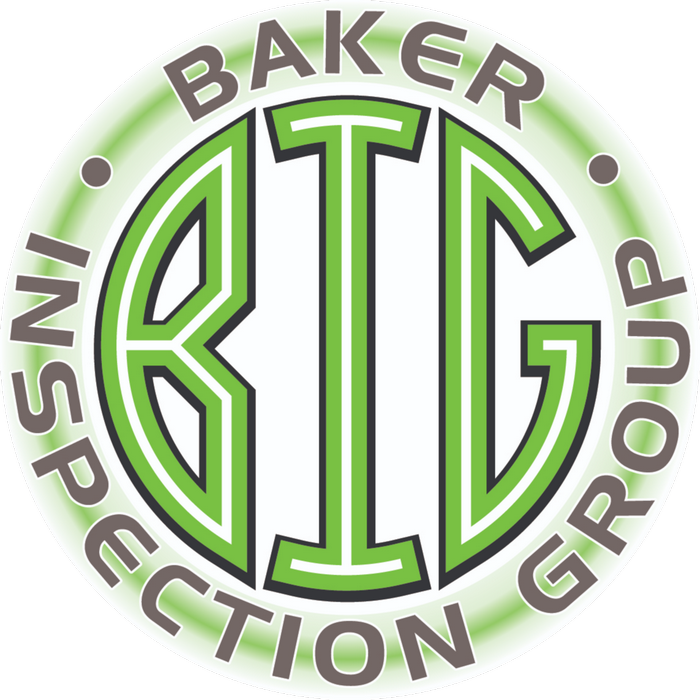
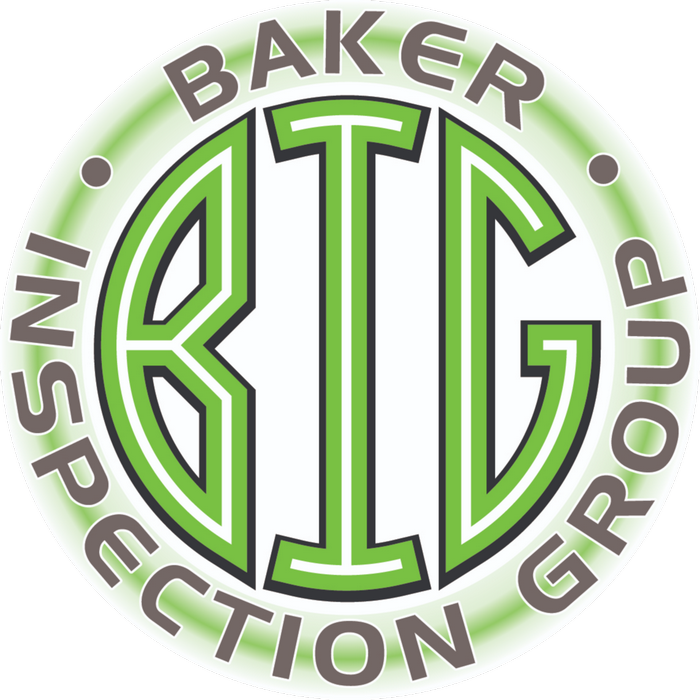
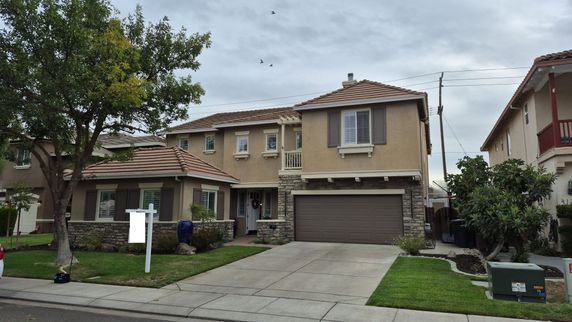
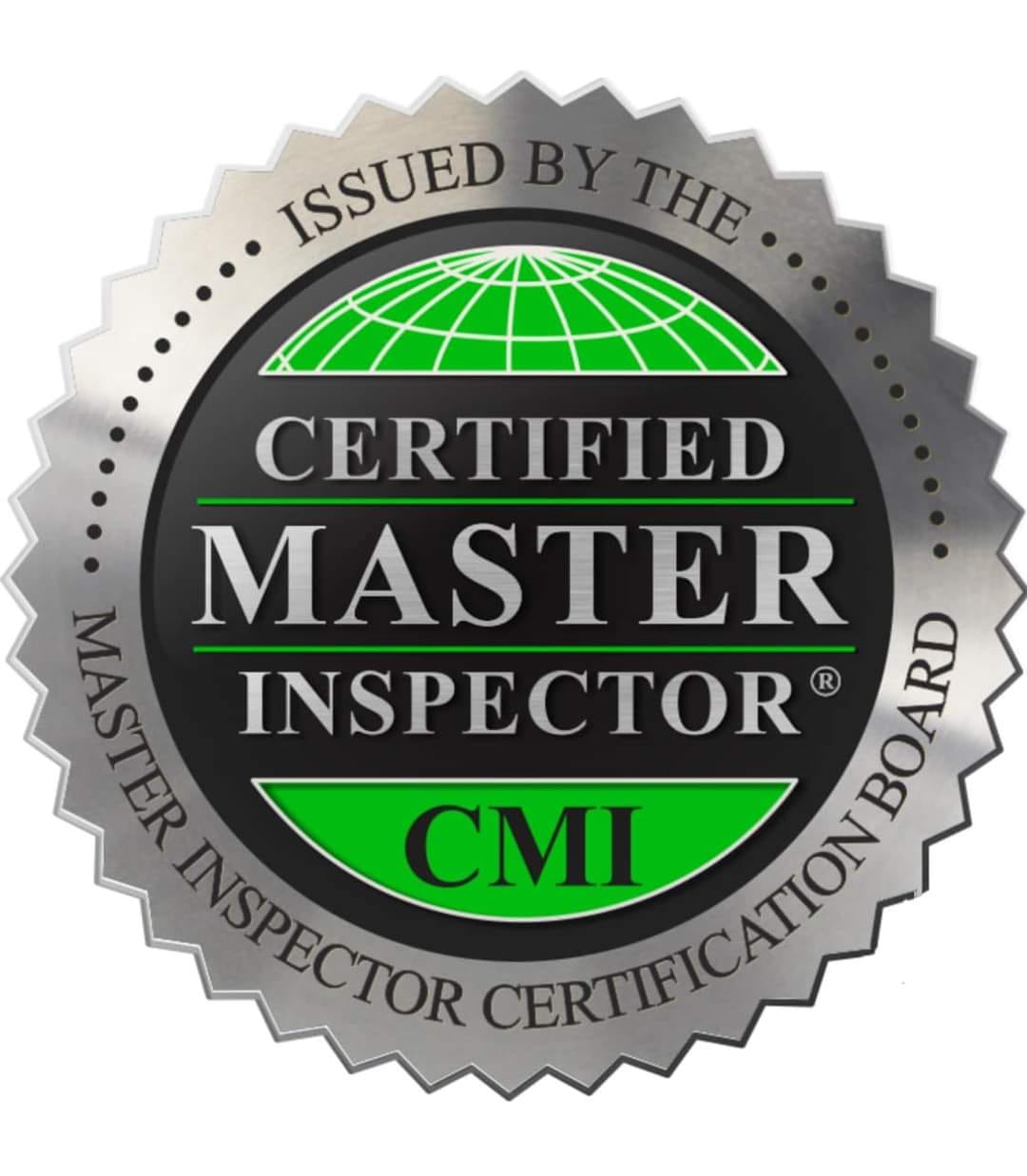

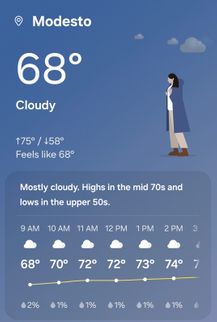
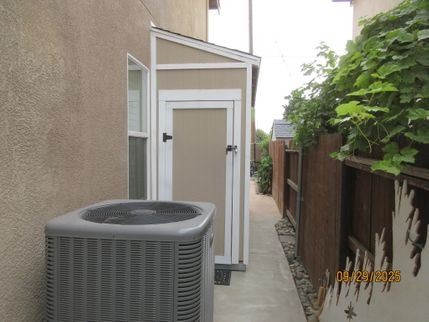
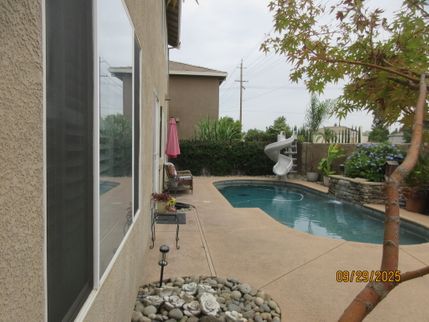
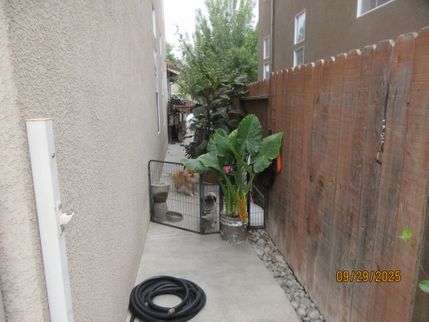
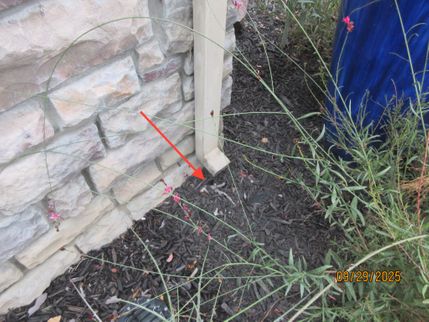
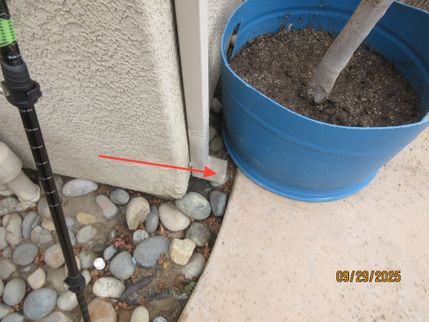
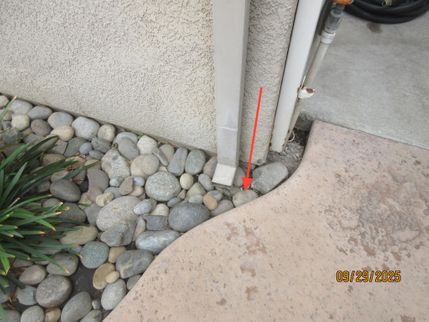
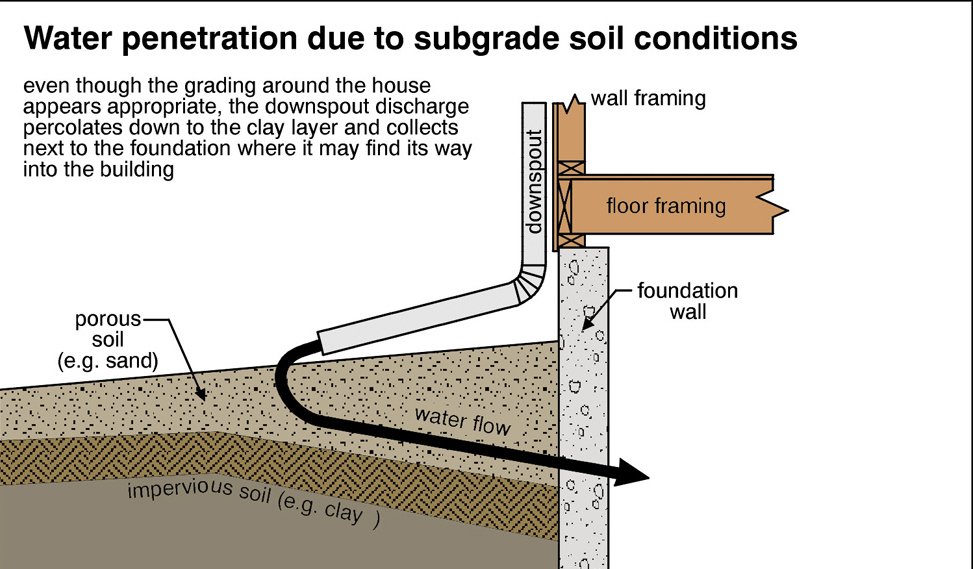
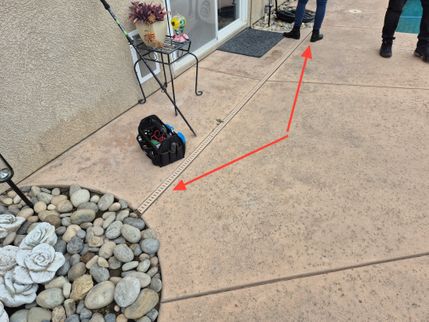
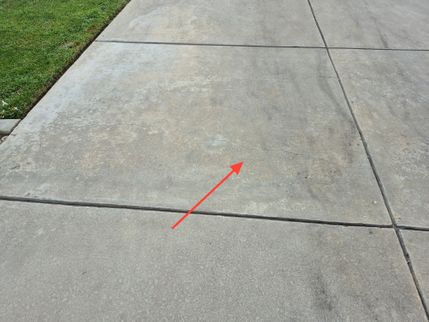
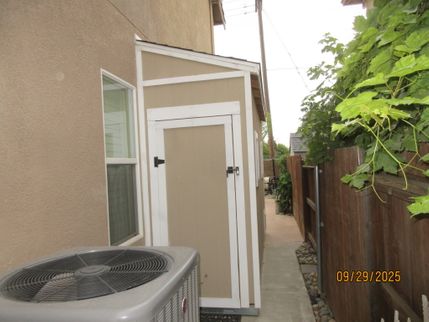
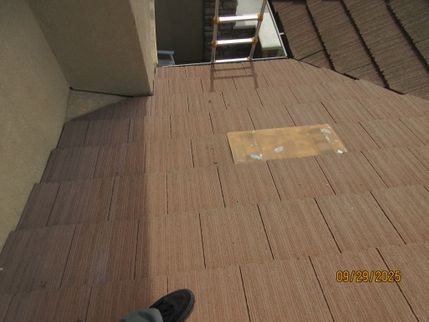
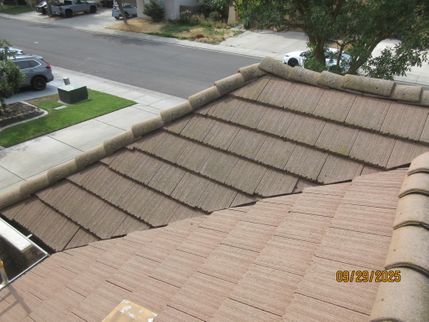
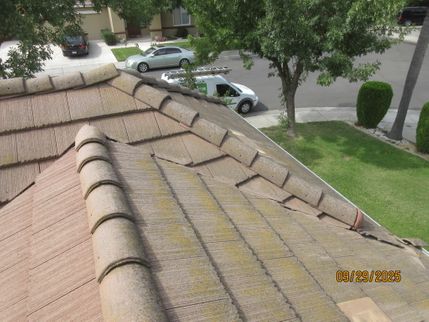
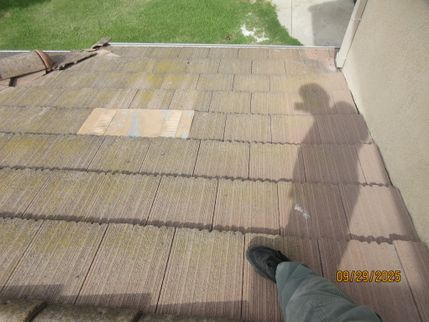
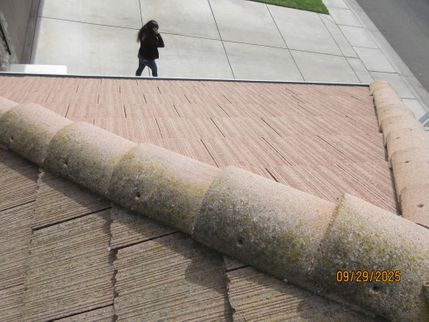
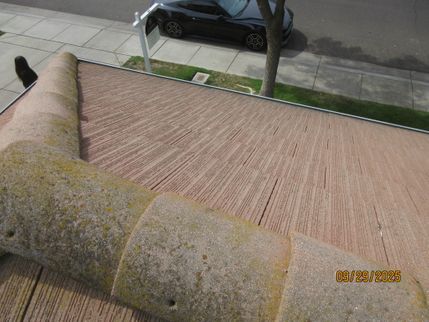
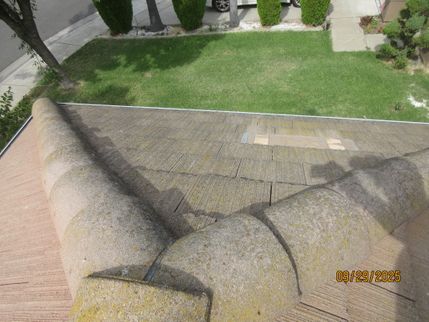
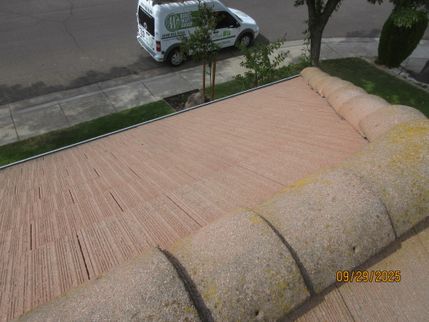
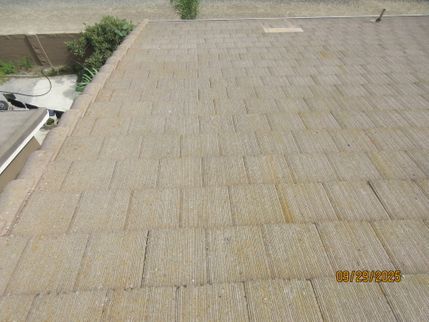
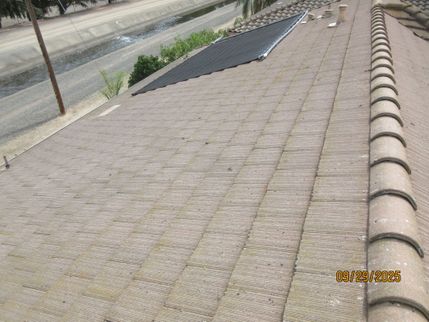
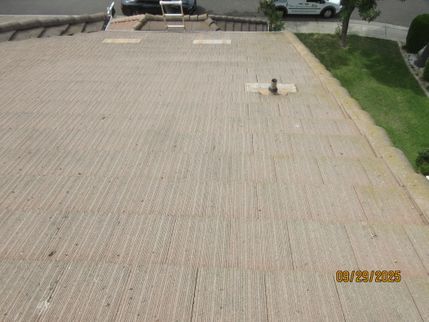
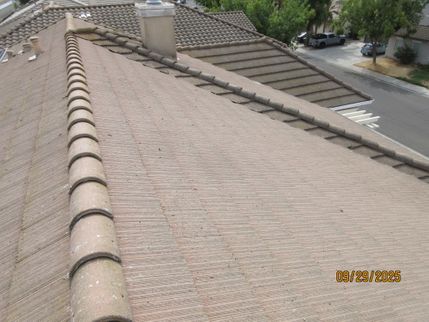
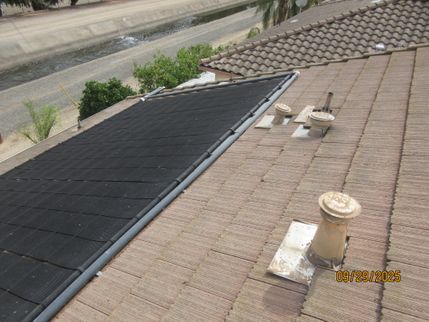
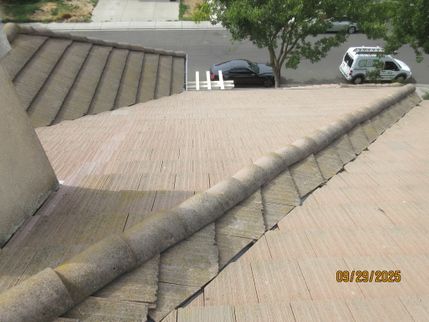
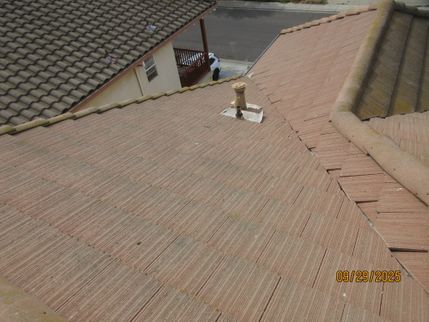
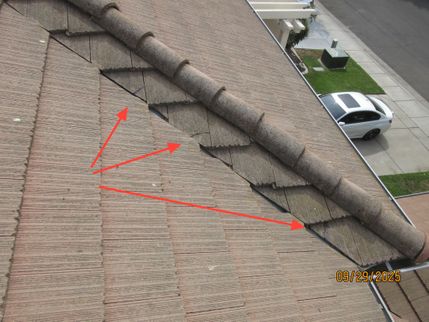
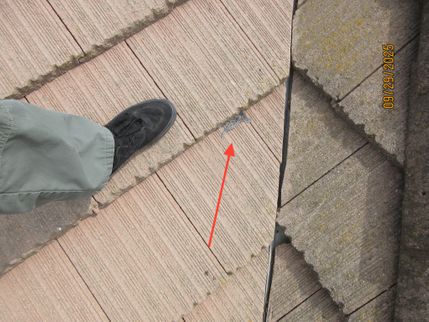
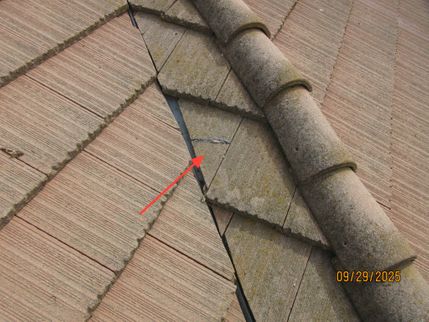
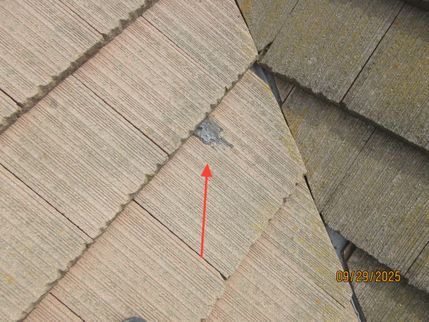
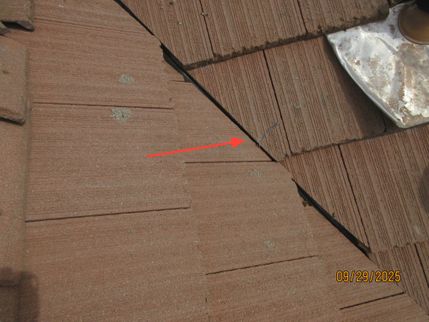
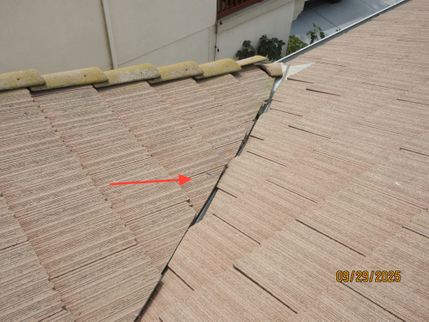
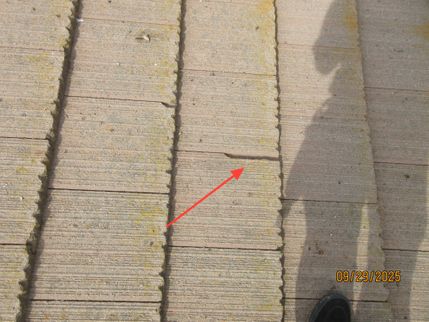
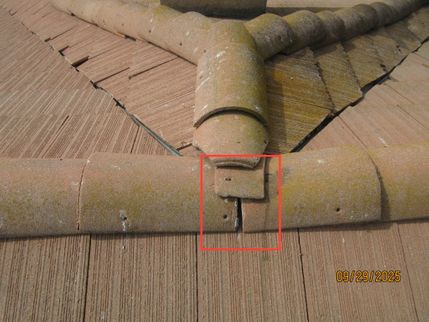
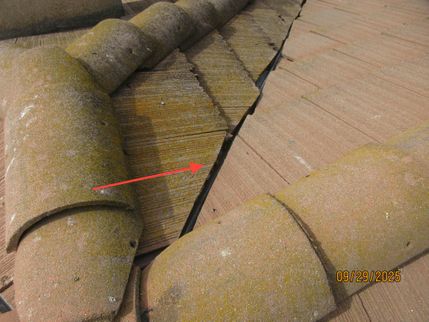
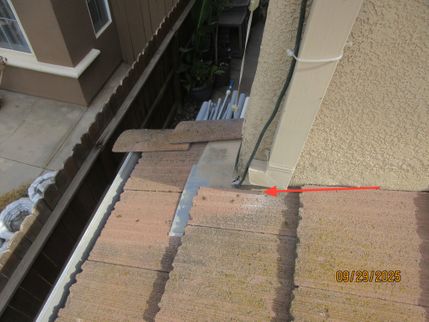
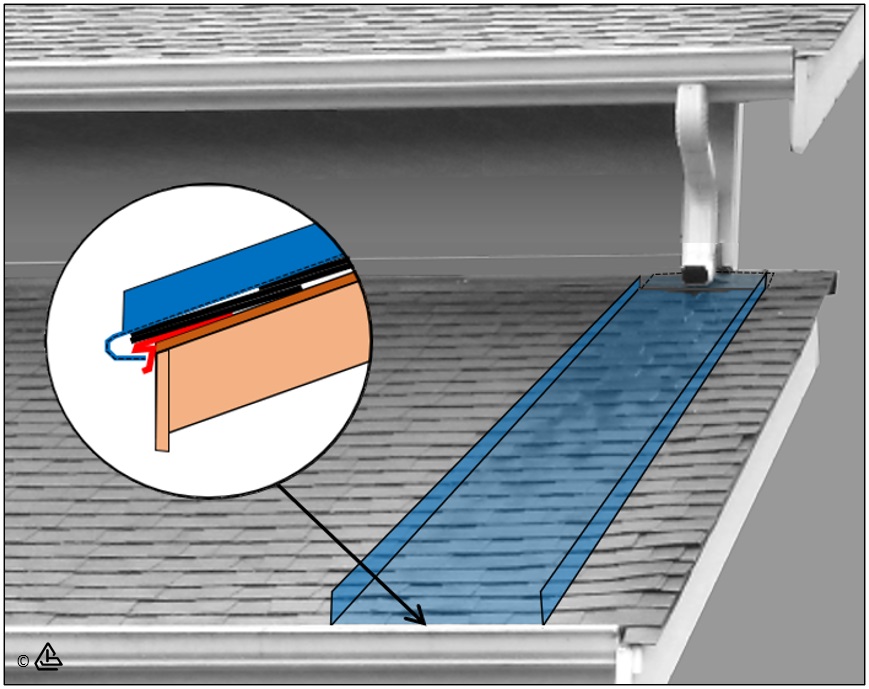
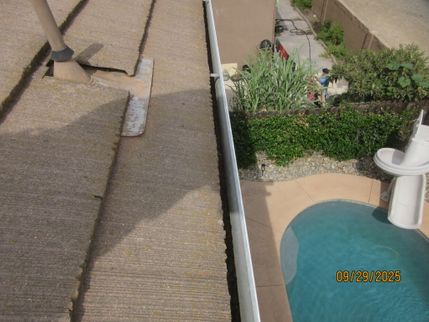
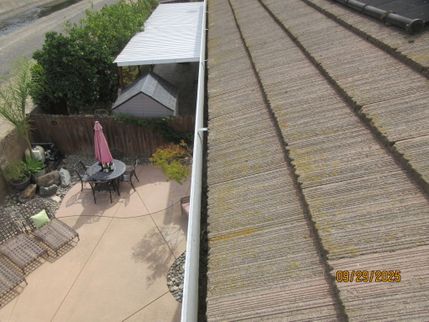
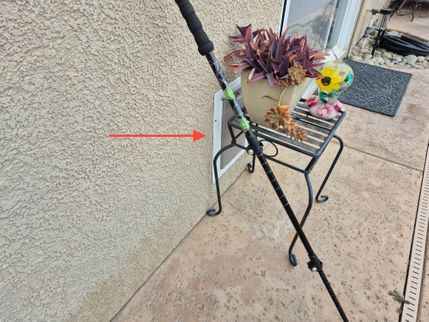
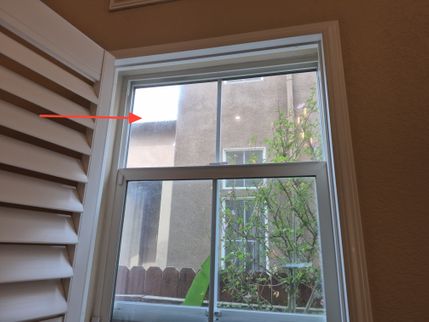
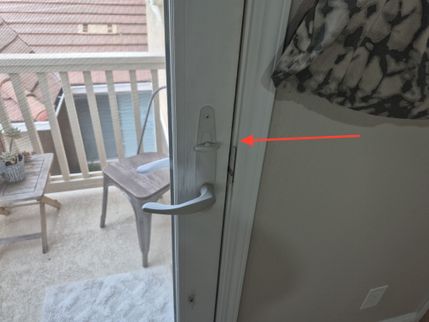
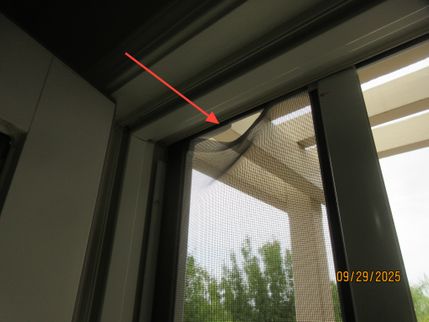
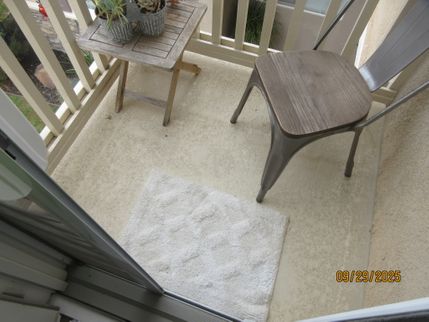
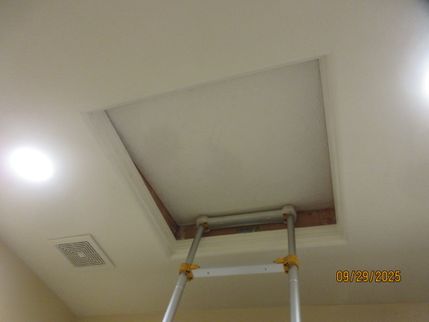
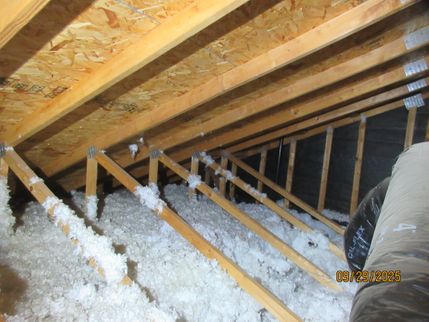
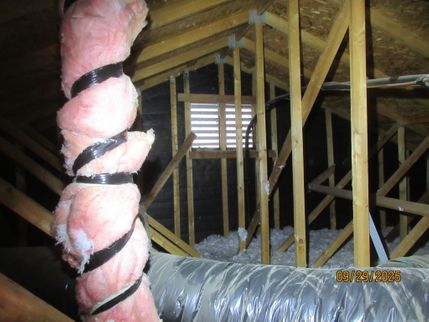
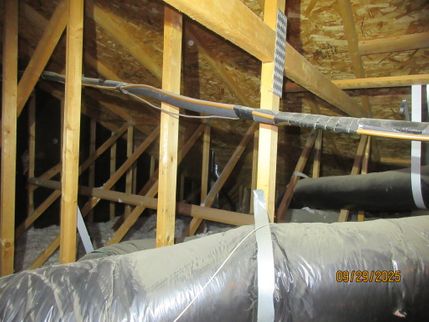
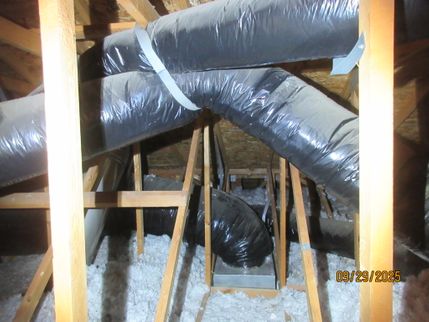
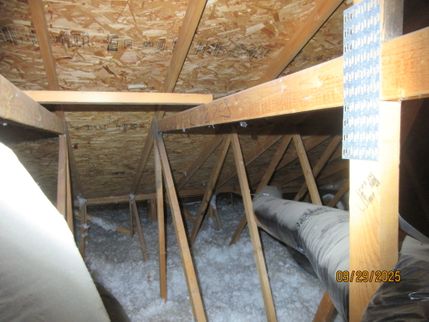
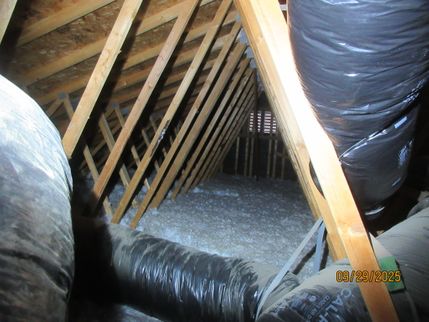
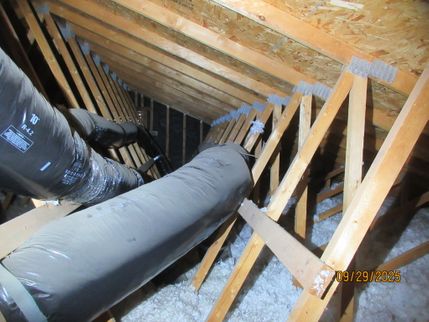
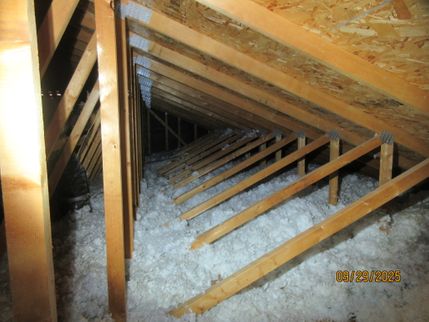
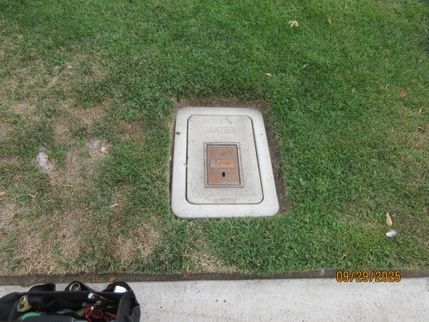
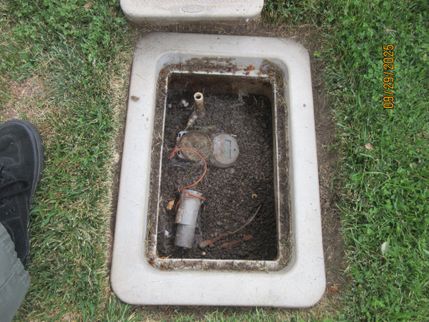
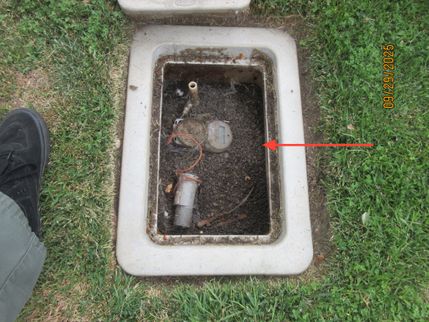
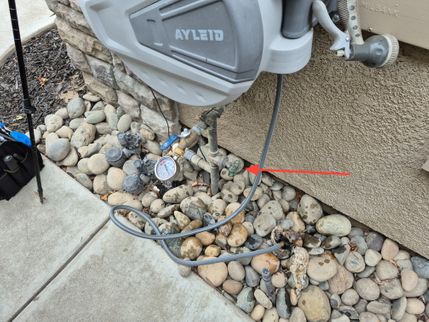
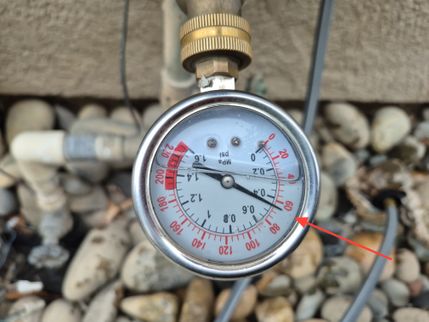
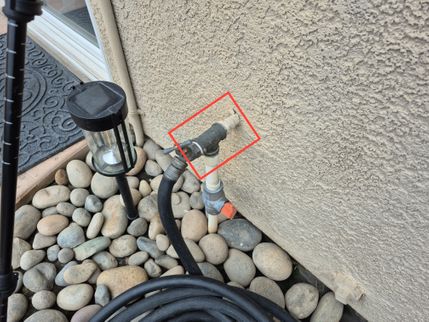
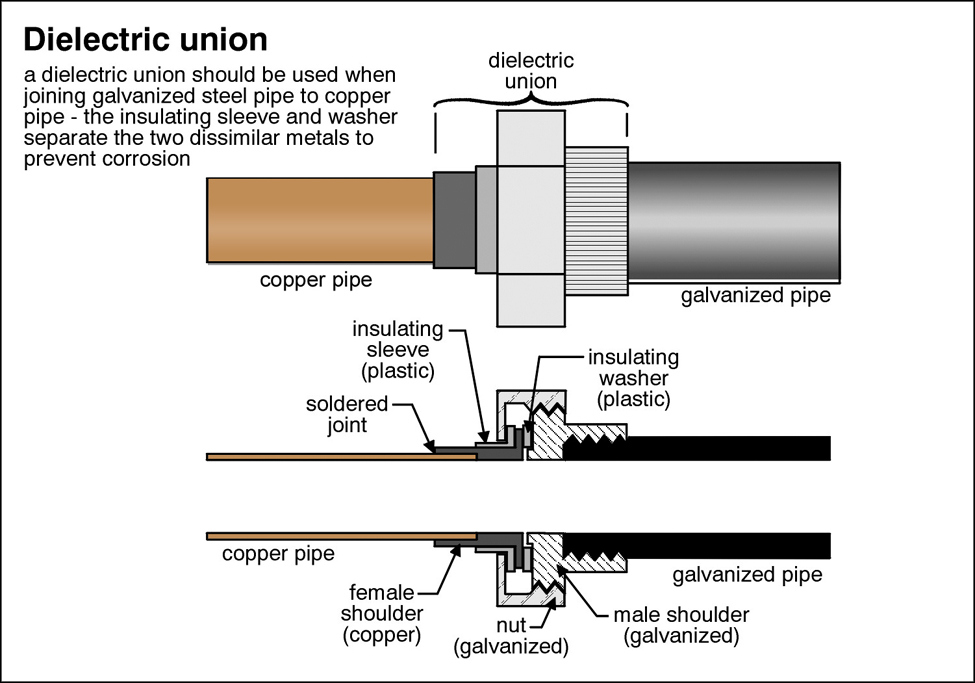
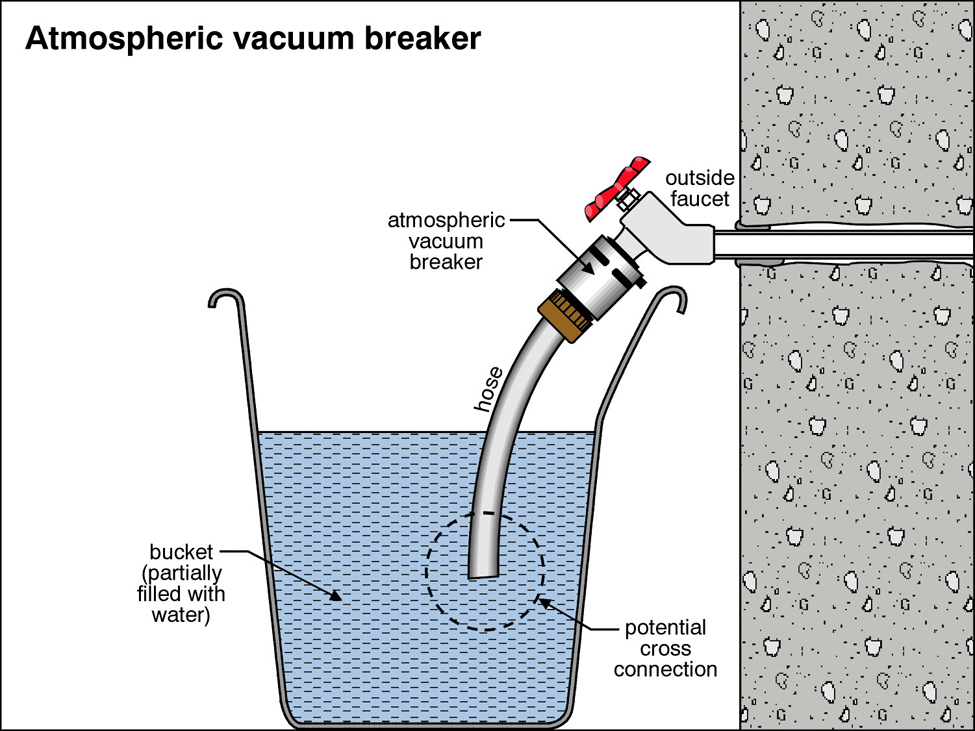
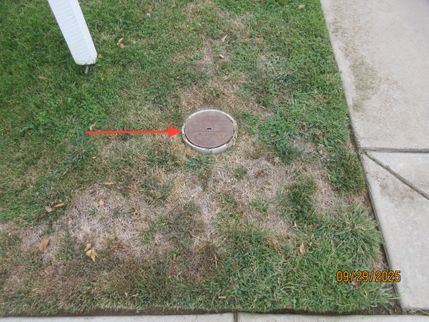
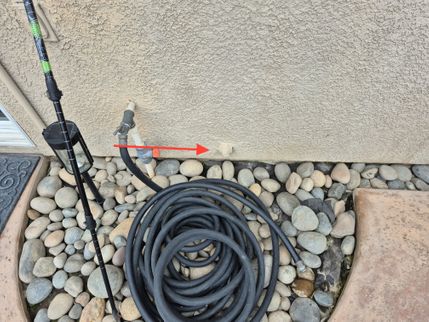
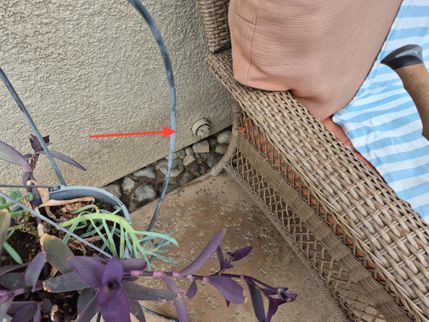
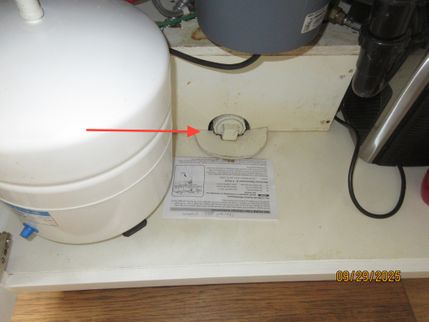
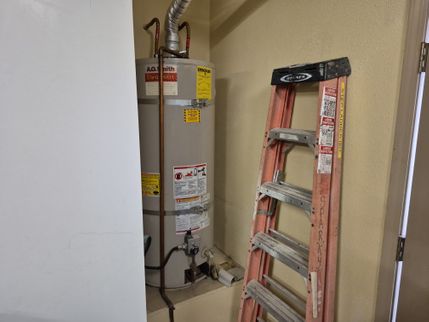
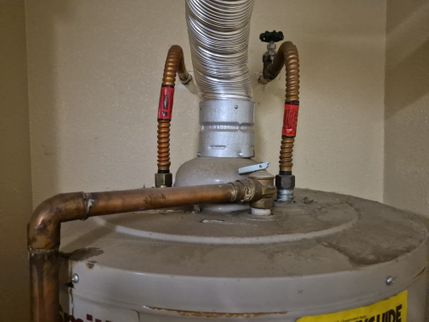
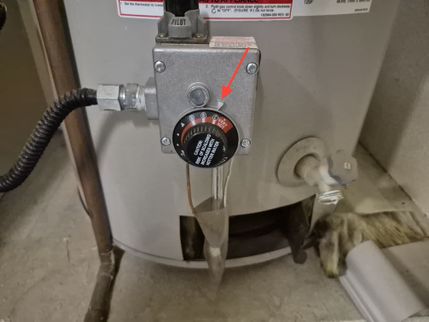
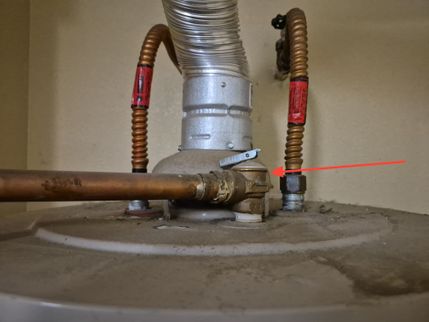
 (1) (1).jpg)
